- 1 800 970 7299
- Live Chat (Online) Live Chat (Offline)
- My Wishlist
- Find a Trip
Your browser 'Internet Explorer' is out of date. Update your browser for more security, comfort and the best experience on this site.


Everest Base Camp Treks & Tours
- Walking & trekking
- Everest Base Camp Treks & Tours
The big daddy of them all, the world’s highest peak and the tallest order on many a bucket list: Mt Everest.
Of course, you don’t need to reach the summit of this iconic mountain to experience the essence of a real Himalayan adventure. Go trekking through the high passes above flame-red rhododendron forests and stunning alpine lakes and enjoy the chance to appreciate the jaw-dropping mountain scenery, as well as challenging yourself physically. Each of our treks is supported by an experienced crew, so you can let your feet do the talking and just focus on your end goal – Everest Base Camp.
Our Everest Base Camp trips
Everest base camp trek, 15 days from 1512.
Embark on the trek of a lifetime to Everest Base Camp on this tour. Fly into Lukla and...
Everest Base Camp & Gokyo Lakes Trek
19 days from 1985.
Take the ultimate trek. Walk in the Himalayas surrounded by some of the most incredible...
Epic Everest Base Camp Trek
15 days from 1416.
Embark on the trek of a lifetime to Everest Base Camp on this trekking trip. Fly into...
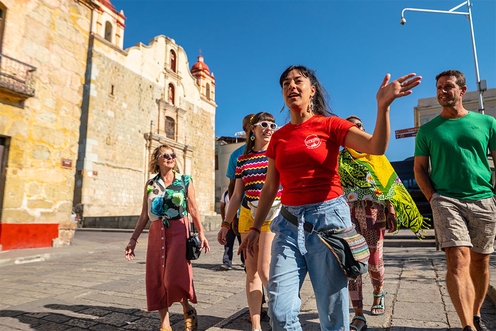
Tailor-Made trips
Take four or more on an exclusive trip and tailor your itinerary
The different itineraries
While all our Everest Base Camp treks take you right to Base Camp, there are some differences. For example, if you're a nature-lover and want to see the crystal waters of the Gokyo Lakes, try our 19-Day Everest Base Camp & Gokyo Lakes Trek. If you want to immerse yourself in the local Nepalese culture, our 15-day Everest Base Camp trip might be for you, as it includes an overnight stay in the famous Sherpa Village.
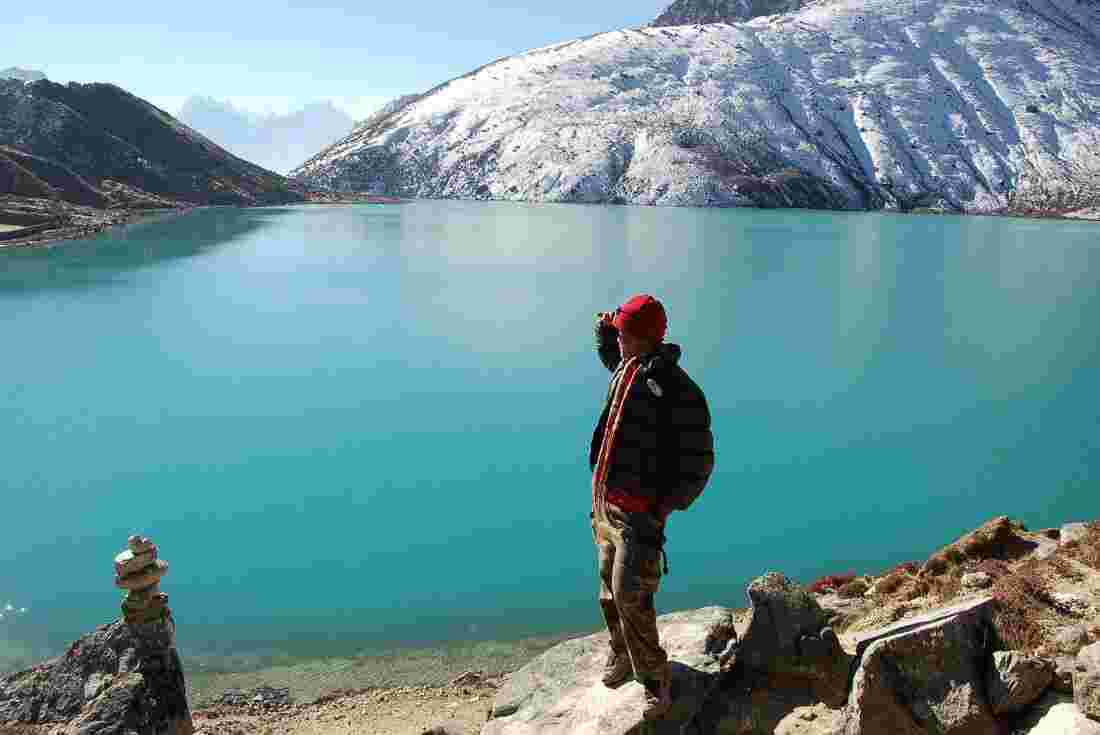
19-day Everest Base Camp & Gokyo Lakes trek
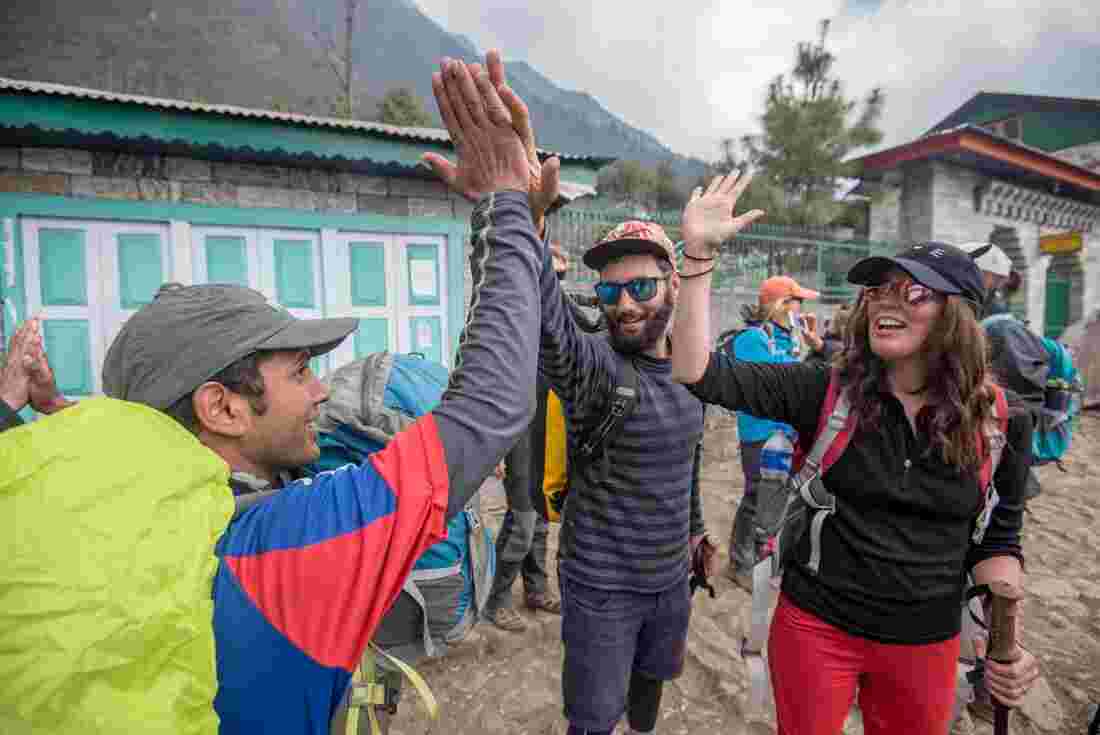
15-day Everest Base Camp trek
Why choose Intrepid

Trekking experts
As owners of the largest inbound tour operator in Nepal , we have years of experience on the ground. Our English-speaking local leaders are more than just someone to make sure you don’t get lost on the trail, they are there to share their stories and insights about the culture and history of the region too.
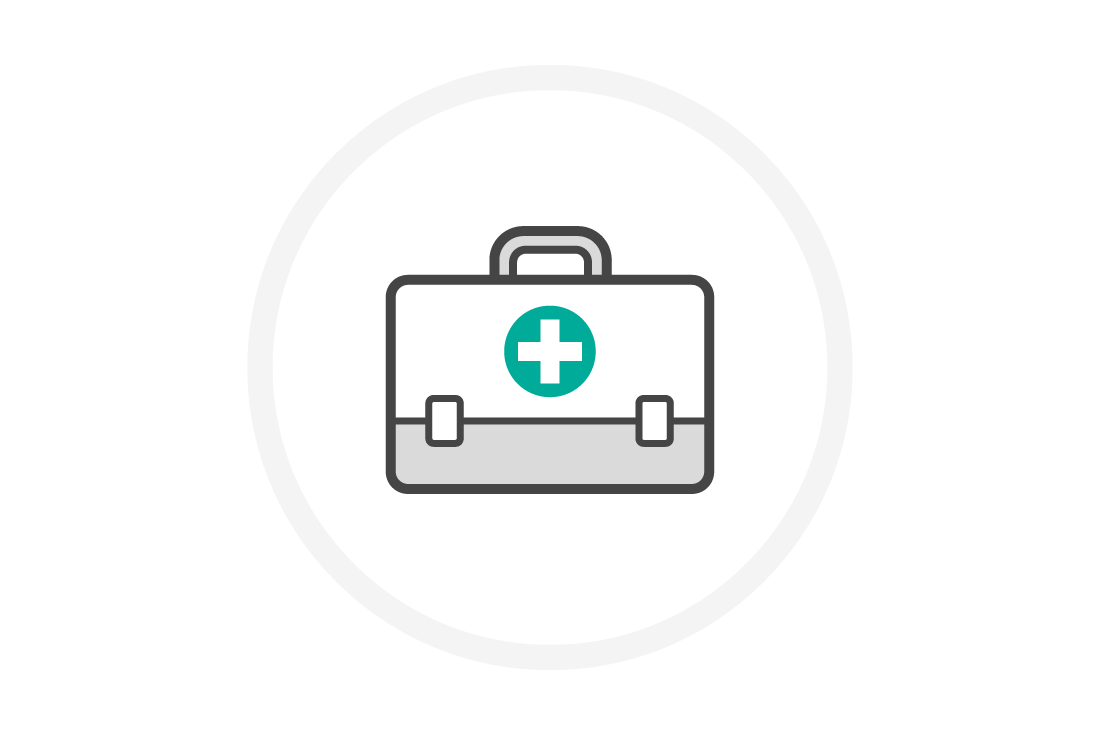
Safety first
Your safety is our number one priority. All of our leaders are trained in Advanced Wilderness First Aid and are qualified AMS (Acute Mountain Sickness) specialists. Thanks to our specialised safety equipment and crew, our annual helicopter evacuation rescue rate is less than two per cent, well below industry average.

Local matters
All of our guides, assistant guides and porters are local to the Everest region and experienced in their field. But they’re not only trekking experts, they are your key to connecting with the local people, food, landscape and culture. With plenty of stories and tips to share, you’ll feel like an adopted local in no time.

Porter care
We are committed to ensuring respectful and fair working conditions for all trekking porters. Any leaders that join Intrepid must start out as a porter, even if they have led for another company before. This ensures that all our leaders understand the important role a porter plays on a trek. Learn more about our Porter Policy .

Our trips don’t only include our incredible crew but also all the safety gear required to help get you to Everest Base Camp safely. All accommodation and transport is included, plus a return flight to Lukla to get you to the start of the trek.

Sustainable travel
We have a ‘bring in, bring out’ philosophy on our Base Camp treks, meaning any rubbish should be taken back to Kathmandu and disposed of there. Rubbish disposed of in villages along the trek has to be walked back to major hubs using porters or yaks, so the less we leave behind, the better.
Meet the team
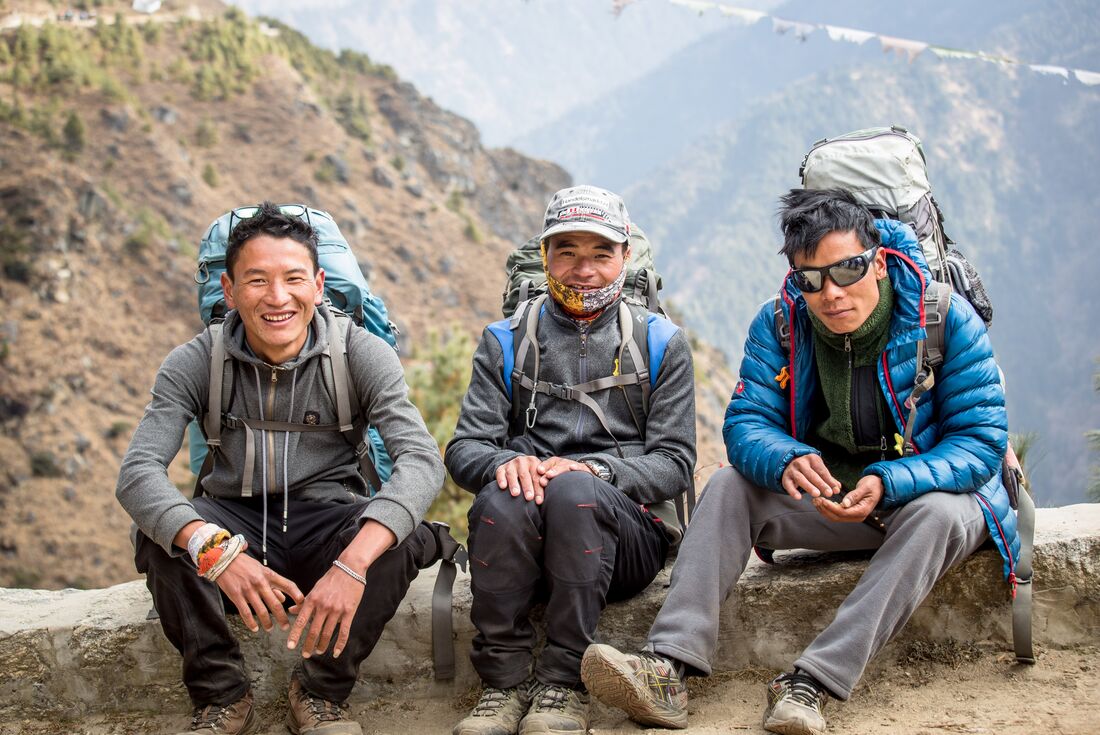
We have very experienced crew, with most of our local leaders having worked with us for over 10 years. Many of our porters and assistant guides on Everest Base Camp trek are Sherpas. The term Sherpa is commonly misused by foreigners to refer to almost any guide or climbing supporter hired for trekking expeditions in the Himalayas, regardless of their ethnicity. However, Sherpas are a local ethnic group from the Everest region, renowned in the international climbing and mountaineering community for their hardiness, expertise, and experience at very high altitudes. Many Sherpas are highly regarded as leading mountaineers and specialists in their local area.
How far will I walk each day?
We walk for between four and eight hours each day, some days being more strenuous than others. Trekking is mostly done on paths, but there is the occasional rough terrain along the way, and some days will include ascents and descents of 500 metres or more. This, in addition to the altitude can account for the variation in hiking time and distance per day.
Do I need hiking boots?
Well fitted, comfortable and sturdy shoes are essential, and can make a great difference in the enjoyment of your trip. Make sure to break them in before your trip, either by wearing them on training hikes or even just around the house. The first time you wear your boots should not be on the trail!
Will I suffer from altitude sickness?
Everest Base Camp sits at 5,380m/17,600 feet. At this altitude it’s common for travellers to experience some adverse health effects – regardless of age, gender or fitness level. Everyone will adapt to the altitude and thinning air differently. This is why we always try to keep the ascent slow and steady, to allow your body to acclimatise and make your journey to the summit easier. Some pre-existing medical conditions are known to worsen at high altitude and be difficult to adequately treat on the ground, leading to more serious consequences, so it’s important that you discuss any pre-existing medical conditions with your doctor before you leave home.
Find out more about altitude sickness
What can I do to help reduce my chances of getting altitude sickness?
You can help your body to acclimatise and avoid altitude sickness by:
- Drinking plenty of water – at least four litres per day on top of other forms of fluids such as tea or soups.
- Avoiding alcohol, tobacco and substances that can interfere with good delivery of oxygen to the body or cause dehydration.
- Eating small, frequent meals high in carbohydrates.
- Taking it easy or have a regular break. Walk at a slower pace than you would at sea level and avoid overexertion.
What training should I do in preparation?
We have a number of different training guides available:
- Top training tips for Everest Base Camp
- Our trekking training guide
- 5 things to know before you trek Everest Base Camp
How can I help myself acclimatise once I am there?
Your body needs time to adjust to the altitudes and acclimatise, which will make you feel better in the long run. We have taken this into account in our Itinerary by limiting the altitude we increase daily, and by giving you extra nights to acclimatise in Namche Bazaar.
What is the accommodation like?
Teahouses are the most common accommodation style on Everest Base Camp trek. They are simple but cosy, with shared toilets and washing facilities. As a general rule, the closer you are to Base Camp the more basic the teahouses are. While the views of Everest and the surrounding Himalayas are spectacular, the amenities are understandably basic.
Hot shower facilities are available in some teahouses for a price but occasionally a hot shower means a bucket of hot water.
Electricity to charge devices as well as paid WiFi is sometimes available. We suggest purchasing a solar charged portable charger to bring with you.
What is the food like?
Food along the Everest Base Camp trail is simple and filling. All food must be carried to your guesthouses by yaks or people, so the higher you get, the more limited and expensive your food options will be. The most common meal on the trail is Dal Bhat, sometimes served with a small side of cooked or pickled veg. Dal is lentil soup, and Baht is rice. It’s filling, delicious, and you can have free refills! You can get western style food like pizza but it’s usually quite expensive. Breakfast is typically a choice of noodle soup, porridge, fried bread, and eggs.
We do not include meals while trekking, allowing you to choose what you want to eat and when. We know from experience that the altitude and physical exercise can affect appetites differently.
Where do we eat on the trek?
While it’s not compulsory, our leaders will always encourage our groups to eat together to help build group dynamics over shared meals. The places your leader will recommend are usually the teahouses we use for accommodation. These teahouses have been inspected and approved by our local operations team and are continually tried and tested by our travellers, guides, and leaders that eat there.
The teahouses we sleep in do not rely on our travellers buying food and beverages for payment, as is sometimes the case with independent travellers and other operators. Intrepid pays the teahouses for the accommodation they provide to our groups and any other services they provide generates additional income for them.
How will I get clean drinking water?
It is essential to bring two 1-litre water bottles to refill along the way. While trekking, boiled or safe water is available for drinking, however you should also carry a water purification method. This could be in the form of filtered water bottles, purification drops/tablets, or ultraviolet sterilisation pens that are available in camping stores, some pharmacies, or online.
How do the porters work? Do I carry my own luggage?
The evening before you leave Kathmandu, you'll receive a duffle bag to pack all the clothes and necessities you’ll need for the duration of the trek (10 kilograms or 22 pounds maximum). Your excess luggage will be stored at our starting point hotel in Kathmandu.
Your team of porters will carry the duffle bags for you, together with the food and equipment for the trail. Keep in mind that you won't have access to these items until the end of each day, as the porters will always be ahead of the group. While hiking you will need to carry your own day pack with your water, camera, sunscreen, rain jacket, warm layers, hand sanitiser, and any other personal items.
What should I pack?
It’s important you refer to the packing recommendations in your Essential Trip Information, however, for a general guide check out our blog, ‘ What to pack for a trekking trip to Nepal ’.
Do I need to bring all my own hiking gear?
We understand that you might not own all the appropriate gear required to trek in the Himalayas. Thankfully Kathmandu has plenty of shops where you can rent or buy hiking apparel, sleeping bags, and trekking poles. While there are a few stores which sell real brand names, most sell knock offs with varying degrees of quality. Your trip leader can assist you in renting or purchasing the items you require.
When is the best time to trek?
Autumn: The most popular trekking season for Everest Base Camp runs from mid-September to November. October is traditionally the most popular time for this trek, when the views are great, the skies are usually clear, and the temperatures are not too extreme.
Winter: Some travellers prefer the colder winter months, from December to February, when the days are still sunny, but the trails are quieter. If you’re travelling over this time be sure to bring some extra layers of warm clothes.
Spring: If you go to Everest Base Camp over March, April and May you may be lucky enough to meet the people who will be attempting to summit the mountain. Mid-March to mid-May is one of the best times to see rhododendrons, Nepal’s national flower, in full bloom.
Summer: Is monsoon season, so we don't recommend trekking in June or July.
What is the weather like?
Depending on when you travel the weather can be vastly different, but it is best to prepare for all weather, as it can vary throughout the day. During the day in the earlier months of the trekking season it can get very warm and sunny, but during the winter months it can drop well below 0 degrees Celsius, so warm clothing is vital.
No matter what the temperature, or how cloudy it is, always use sun protection! The atmosphere is thinner at high altitude meaning the UV rays are more extreme. Snow can also reflect UV rays, which greatly intensifies UV radiation.
Are there ATMs along the trek?
ATMs are not common on the Everest Base Camp region. There are only two towns where you will see ATMs: Lukla and Namche Bazar. It is quite common for there to be problems with those ATMs or for them to be out of money, so we advise our travellers not to rely on them and make sure you leave Kathmandu with sufficient cash for meals and anything else you might require.
What is the difference between trekking to Everest Base Camp and summiting Everest?
At Intrepid, we offer treks to Everest Base Camp, not to the summit. Trekking to the summit of Everest can cost upwards of $60,000USD and is far more technical than the trek to Base Camp. The summit climb requires previous trekking experience and knowledge of how to climb ice, rock and use summit equipment. Base Camp, on the other hand, requires no technical trekking skills or experience and is considered much safer than summitting. The trek to Base Camp takes between seven to nine days, whereas a summit expedition takes between seven and nine weeks.
Most people who trek to Base Camp go for the experience of seeing Mt Everest, while exploring the local culture. Those who undertake a summit expedition have the primary goal of making it to the top.
Do the porters carry first aid kits?
Yes. We carry multiple, comprehensive first aid kits and our porters and leaders are fully trained on their use. We also take oxygen cylinders, oximeter, portable altitude chamber, and satellite phone.
Are your leaders trained to recognise the symptoms of Acute Mountain Sickness (AMS)?
Absolutely! Intrepid have invested in the highest standards of training of our staff, including advanced altitude training delivered by local doctors who undergo refresher training every two years. We also train them on how to respond in the case of a moderate or severe case of altitude sickness – which will always mean organising for the affected traveller to descend immediately. During your briefing on the first evening of your trip, your leader will talk to you about symptoms of AMS and how to recognise them.
Do you carry medicine for altitude?
Yes – there are three key, potentially life-saving drugs that our teams carry on the mountain. These are Dexamethasone, Diamox and Nifedipine and they used to treat cerebral and pulmonary oedema, which are the two potentially life-threatening complications of severe AMS. Our mountain guides are fully trained on the use of these drugs for altitude related illnesses.
Will oxygen be available?
We carry medical oxygen – and when a group has four travellers or more, this will mean multiple cylinders will be distributed among the team of porters to ensure that oxygen is always quickly available in the case of an emergency. The oxygen that we carry is strictly for emergency use only – and cannot be used by clients to assist in climbing.
Do you carry Gamow bags or PACs?
Yes. We carry PACs, a portable altitude chamber, which are used for sufferers of severe AMS. When a person is suffering from AMS a descent of just a few hundred metres back down the mountain is enough to make a difference. However, a rapid descent on foot is not always possible on Everest Base Camp trek, in which case PACs are more effective.
How do your leaders communicate on the trek?
Mobile (cell) phone coverage on the mountain is improving – but it's still patchy in many areas. For this reason, Intrepid leaders carry short wave radios to allow for communication in the case of an emergency.
Who is your trekking operator in Nepal?
All our trips in Nepal are operated by PEAK DMC Nepal, which is a fully owned Intrepid Travel company based in Kathmandu.
Responsible Travel
We use porters on our treks instead of yaks to carry bags and equipment. Even though animal transport is much cheaper, we have found the animals aren’t treated well and there is no weight limit enforced while using these animals as carriers. We have a detailed Porter Policy in place, to ensure our porters are respected and treated in a dignified way.
At the end of your tour please consider donating to the KEEP Porters Clothing Bank . Contrary to the belief that porters are well-adjusted to the cold and altitude of the Himalayas, every year many porters suffer from a variety of illnesses such as altitude sickness, snow blindness, hypothermia and frostbite and some even die as a result. The Clothing Bank was set up in 2009 to provide ill-prepared porters with better clothing suitable for trekking in a mountain environment and reduce the number of unnecessary illnesses and fatalities which occur each year.
Read more about Everest Base Camp
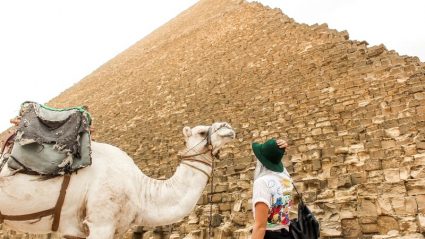
Mar 01, 2023
10 awesome places to go for your 21st....
Big birthdays deserve BIG celebrations...
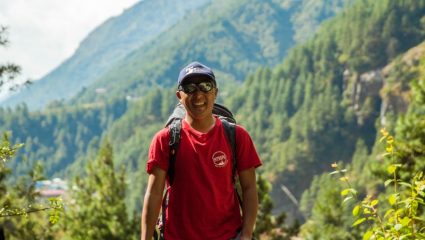
Apr 10, 2019
5 things to know about base camp....
We quizzed this Intrepid leader on all things Base Camp-related, and here’s his...
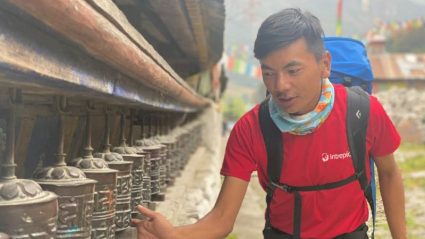
Sep 14, 2023
It’s official: phurba sherpa is the....
Freshly crowned the world's best outdoor/walking guide, Phurba reflects on the...
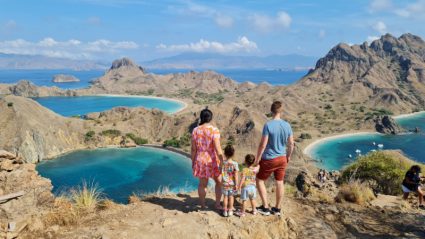
Feb 06, 2023
Peak romance: the intrepid couple who....
If you’re single and ready to mingle, finding a little travel romance on the road...
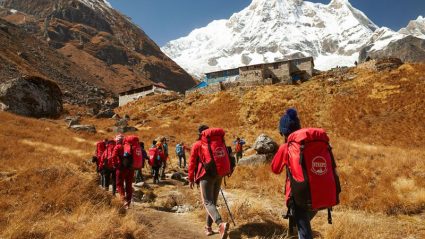
Jan 29, 2020
Meet the organisation helping to....
As the most important group of people in Nepal's trekking industry, porters tend...
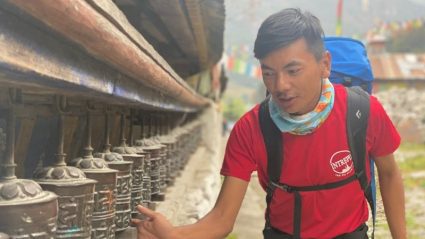
Dec 01, 2022
Intrepid leader phurba sherpa on....
Tackle Everest Base Camp, or the Annapurna Ranges, and you may well find yourself...
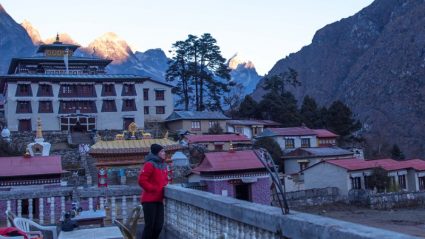
Jun 05, 2019
5 things i learned hiking everest....
Besides learning that, yes indeed, women can do anything, I also came back down to...
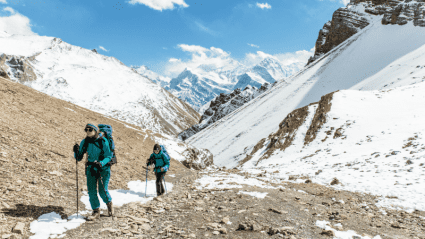
Jul 09, 2018
What to pack for a trekking trip to....
Packing for Nepal can be a tricky one, but after three trips and numerous treks...
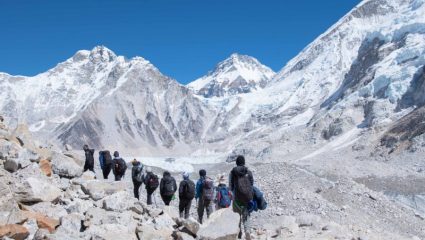
Mar 14, 2019
Why you should hike everest base camp....
While we firmly believe that Everest Base Camp is for everyone (at whatever age),...
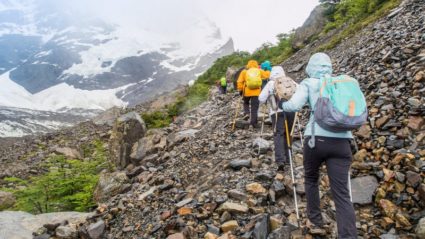
Mar 14, 2018
How to prepare for your trekking....
Sure, you can rock up at the foot of Mt Kilimanjaro with nothing but a song in...
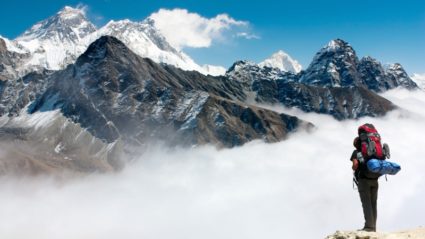
Jun 14, 2017
What to expect on a trek to everest....
Ready for the climb of your life? Here's what to know before you take on a trek to...
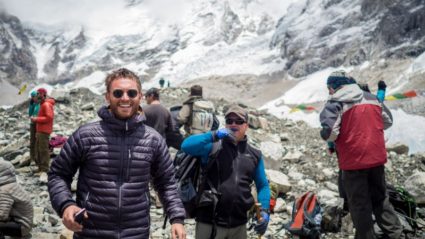
Jul 24, 2018
What to pack for everest base camp.
The Himalayas have long bridged the extremes of outstanding natural beauty and...
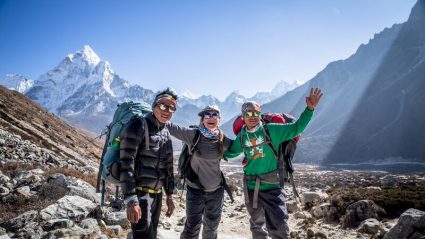
Feb 20, 2019
Why to hike to everest base camp, in....
It will challenge you. It will change you. And it's a trek you will never forget.
Intrepid Travelling
Intrepid Travelling Experiences, Reviews and Advice
- Hiking to Everest Base Camp and the Khumbu Glacier
On day 11 of our three weeks hiking and climbing in the Sagmartha National Park we arrived into Gorak Shep after the relatively short hike up the valley from Lobuche. Gorak Shep is the closest group of teahouses/lodges to Kala Pattar and the Everest Base Camp. The day we arrived happen to be the day a group of English lads were playing cricket on a dried up lake bed to raise money for charity. Quite appropriately the teams were Hillary vs. Tenzing, with Hillary coming out on top...I.e. Team Hillary was first, Team Tenzing came second.
Due to the cricket, the four teahouses in Gorak were full, so a teahouse made a former Mount Everest expedition tent available to us for the three days to sleep in outside. That suited us just fine as it made the experience all the more intrepid, including nights when the temperature dropped to below -10°C. Each morning when we emerged from the tent we would be welcomed by the incredible sight of the Nuptse mountain and to the left of it you can just make out Sagamartha (Mount Everest) herself peaking out above the ridgeline; a magic spot for some camping.
- Crossing the Cho La Pass to Gokyo Ri and back to Civilization
- Hiking in the Incomparable Everest National Park; Chhukhung Ri
- Kathmandu to the Roof of the World – Trekking to Everest Base Camp
Two things you must do when in Gorak Shep is firstly, climb the near-by ray flag covered Kala Pattar which affords you the most popular vantage point for viewing Mount Everest, the Khumbu Ice Fall (that flows from the Western Cwm) and of course a view directly down onto Everest Base Camp. The morning air is cool and clear making for incredibly crisp clear colours that are just something else.
The second thing you must to is make the day trip further up the Khumbu Valley alongside the Khumbu Glacier to see firsthand the Everest Base Camp which is literally located on the glacier. Climbers attempting to summit Mt Everest from the south (as Hillary’s 1953 expedition did) have all based their expeditions here and must first climb up through the treacherous Khumbu Ice Fall.
Having brought crampons in Kathmandu it seemed an obvious opportunity to try them out and venture into the Ice Fall ourselves, moving aside as the Sherpas and Everest climbers passed us. This was an unreal experience considering New Zealand’s history with the mountain and having had a flatmate who was near obsessed with the Discovery’s series – Everest and Beyond – starring another New Zealander, Russell Brice.
Having been to the steps of Mt Doom after three amazing night at Gorak Shep we began the long hike back to Lukla. We would stay at the lodge village of Zonglha and trek over the ice covered Cho La Pass to Gokyo, passing through Dragnag and the crossing the Gyazumba glacier which promises yet more fantastic views.
Hiking Everest National Park; Chhukhung Ri
Cho La Pass to Gokyo Ri
Recommended Reads

Everest Base Camp Trek Blog: A Day by Day Guide
By: Author Amanda OBrien
Posted on Last updated: 16/02/2024
Trekking to Everest Base Camp is not for the faint of heart. I trained for several months before my base camp trek and still found it extremely challenging. I also found the food and accommodations very challenging as well!
Here is my Everest Base Camp trek blog with a blow-by-blow account of each trek day.
Everest base camp Trek Blog Day One: Kathmandu to Phakding
My Everest Base Camp Trek Blog starts very early on Day One in Kathmandu . You quickly learn that the best weather of the day for Everest Base Camp trekking is first thing eg 5 or 6 am.
To get to Lukla, you want to be on the first flight out of Kathmandu as anything can happen with the weather and many delays. This is also when it is an excellent time to be traveling with an organised tour as they have a lot of clout in terms of seats on airlines.
⇒ My Complete Everest Base Camp Packing Guide

Flying to Lukla

We got on the first flight out – flying from Kathmandu to Lukla on a 14 seater – and headed to the world’s scariest airport Lukla! The flight is quite spectacular – I had read to sit up the front on the left side as you enter from the back of the plane.
There were then two seats next to me. I had a great seat for most of the flight – but the seat next to me eg the middle seat of the first row had the best view of the runway and Lukla airport. It is a very short runway and then straight into a mountain. A second bucket list experience for this trip!
I enjoyed the flight, but I am not a fearful flyer. It would be challenging if you were. Upon arrival, we got a coffee at a nearby lodge and waited for our bags to arrive.
Our bags came across three different flights. And then, it was time to start the hike from Lukla to Everest Base Camp.
⇒ My Everest Base Camp Trek Itinerary – What I did plus what I would have done differently .

Lukla to Everest Base Camp: The beginning of the Trek
We walked through the rather small town of Lukla – the streets are full of people and “joeys” which is the name for the horses. Yaks don’t operate under 3000m – too warm for them with all that underbelly of hair – so the joeys take care of carrying bags etc at the lower levels.

We had a beautiful first day of walking – clear skies. Unlike Kilimanjaro, which is entirely a national park with no one living in it, – there is always something going on during the hike to Everest base camp.
Villages, people, joeys, yaks, monasteries. The first day was a half-day of walking, and it was a pretty relaxed session – a bit of up and down but not much.
Everest Base Camp Trek Difficulty Day One: 3/10
Accommodation

We got into our first tea house Sunrise Lodge & Restaurant quite early – about 4 pm. We found our rooms and put in our dinner orders. The rooms at the Nepal tea houses are basic as promised. Twin beds – each bed has a fitted sheet, a pillow with a pillowcase, and a duvet of sorts.
I only used my sleeping bag as a base the first few nights as I would have been too hot in it. That and I hate sleeping bags as you really can’t move much in them but that’s what keeps you warm.

I wasn’t looking for a shower option at this Nepalese tea house as I had had one that morning. This was probably the only time on the Everest Base Camp Trek I really sat outside and read my book on the trip.
Dinner was fine – I was able to have a glass of wine with my vegetarian Momos, so I was happy.
⇒ If you want to know more about Nepal Tea Houses on the trek – from showers to charging to the food – read all about it here .

Everest Base Camp Blog Day Two: Phakding to Namche Bazaar

The Everest Base Camp Blog begins at 7 am on Day Two for an 8 am exit from Phakding. This was one of the toughest days of the Everest Base Camp trek in terms of physical exercise – 16km of rather relentless up and down – particularly the last two hours.
It is, however, quite a stunning walk. There are quite a few firsts on day two of the ebc trek – first suspension bridge, first entry into the official Sagarmatha national park and the first view of Everest weather permitting! We saw a very exciting first hint of Everest.
Namche Bazaar

Namche Bazaar is the London of the Everest Base Camp Trek. It is a bustling village with lots of shops and restaurants. I was very excited to find many Illy coffee signs and takeaway coffees. And the coffee in Namche Bazaar wasn’t bad either.
Some treks have two nights here for acclimatization but we were only one night. We got into Namche Bazaar by about 4 pm which gave me time to have a quick wander. This is the last good place to pick up chocolate, biscuits, pharmacy items, gear for the trek etc etc.
Day Two Everest Base Camp Trek Difficulty: 7/10

This was probably the best tea house of the Everest Base Camp Trek – The Green Tara Hotel . We even had an ensuite – albeit the shower only had cold water. There were two excellent hot showers on a different floor of this Namche Bazaar tea house.
Most excitingly, the Green Tara Hotel owner had a hairdryer that he allowed us to use free of charge. The owner here was very friendly and this tea house had a great feel. The Green Tara Hotel was also very very clean.

Everest Base Camp Trekking Day Three: Namche Bazaar to Khumjung
Namche Bazaar to Khumjung is one of the most stunning days of Everest Base Camp Trekking. We had earned our views after a very steep trek out of Namche. Our morning coffee stop was the best of the trip – the Everest View Hotel .
On the way there we got amazing views of Mount Everest – the scenery was just jaw-dropping.

⇒ And definitely log in to 12Go when you’re organising how you’re going to get around Nepal. This super easy-to-use platform has all modes of transport on one platform and allows you to compare based on time, cost, and reviews.

The Everest View Hotel itself is lovely. A massive terrace allows everyone to enjoy their coffee with what must be one of the best views in the world.

We then had a lovely trek down to Kunde where we visited the Edmund Hillary Hospital and learned about how emergency medicine works on the mountain and what had happened during the earthquake.
It was amazing what can be accomplished at such an altitude. We also visited a local school which is also funded by the Edmund Hillary organisation .

We then visited a monastery in Khumjung which was quite picturesque. It claims to have the only Yeti skull in the world. Of course, a fee is involved to see such an amazing icon.
It appeared to be kept in a rather non-museum like box in a cupboard. Two members of our group agreed to pay, and the rest of us were told in no uncertain terms to pay up or head out of Khumjung monastery.
Day 3 Everest Base Camp Trek Difficulty: 4/10

Our tea house for night three was Amadablam View Lodge . This was nothing particularly exciting, but it was decent and clean which is all that was needed and again I was able to have a hot shower which was exciting.
This marked my first consumption of Sherpa stew which became my signature dinner meal of the trip. I always went vegetarian – which meant carrot and potato rather than anything green.
Hike to Everest Base Camp Day 4: Kyanjuma to Tengboche 3867m

The hike to Everest Base Camp Day four is blessedly more of a half-day as the altitude kicks up. It begins with a descending walk and then moves into a climb through the forest. We arrived in Tengboche around lunchtime.
This was one of my favorite places we visited on the trek. Tengboche has a lovely feel to it, and it was one of the best tea houses in terms of food and it definitely won for the best coffee on the trek.

In the afternoon we visited Tengboche Monastery , again a trip’s highlight. Every person who has climbed Mount Everest has visited this monastery to be blessed from Sir Edmund Hilary onwards.
We went to the afternoon prayer ceremony at Tengboche Monastery and it was packed. Sitting where every Everest climber has sat was humbling and a bit awesome.

The monks wander in and out of the ceremony, bringing some food, having a laugh and a chat and then picking up on the chanting. It is a very enjoyable hour and I highly recommend attending Tengboche Monastery.
Day 4 Everest Base Camp Trek Difficulty: 5/10

Himalaya Trekking Day 5: Tengboche to Dingboche 4350m
The hike to Everest Base Camp Trek Day 5 has some spectacular walking and a lot of up and down. Well every day on the trek has a lot of up and down, but I did seem to feel it more on Day 5 – and it added to get some great views.
Day 5 Everest Base Camp Trek Difficulty: 6/10

Base Camp Trek Day 6: Acclimatisation Day Dingboche 4350m

This is where I really started to feel the altitude. We did a decent-sized acclimatization climb to the Nangkartshang Peak, which is 5100m. It was tough work.
The physical strain became very clear, and the headaches started to get stronger. I also noticed at this point my appetite was quite shot and I was getting dependent on chocolate – and even that was an effort.
However, we were rewarded with some spectacular views, which always helps and allowed for some great photos for the Everest Base Camp Trek Blog.

Getting down was almost more of a challenge than getting up. This was one of our first descents. I do prefer an ascent to a descent in general. I always think I must have gone toppling down a mountain in a previous life.
Night two at the Dingboche tea house started to wear a bit thin – especially as it became very cold in the late afternoon with snow, They did offer clothes washing at this tea house, but it was too cold to do so as they needed to be able to hang the clothes outside to dry.

This was quite a big tea house though so there were a couple of communal warm areas. They also still had a good range of snacks and of course ginger, honey and lemon tea to help make the afternoon and evening go faster.
Day 6 Everest Base Camp Trek Difficulty: 6/10
Everest Base Camp Trek Blog Day Seven

The morning was one of if not the most stunning scenery of my Everest Base Camp Trekking. It is hard climbing from Dingboche, but once you ascend, you are rewarded with spectacular 360 views. It is jaw-droppingly beautiful.

It is then some seriously high walking to the first-morning tea stop. I began to feel very weird and unwell at this point. I made it to the rest stop, but it wasn’t easy, and I was quite disoriented.
Anyway, I continued, and we made it to the very basic tea house in Lobuche. This was a difficult night as you are at just over 4900m, so sleeping is tough, and the need to urinate and the thirst frequent.
Day 7 Everest Base Camp Trek Difficulty: 9/10

Everest Base Camp Blog Day Eight – Everest Base Camp
So this is the big day. An early start and some serious walking to get to Gorak Shep for lunchtime. I felt very lousy, but I won’t bore you with all those details.
It is tough to eat at this point, and everyone is feeling the altitude. It is then a flat walk followed by some tough walking mostly due to the altitude, to get to Everest Base camp.
The weather at base camp can be very mixed. Visibility was not great when we arrived, but we were very lucky and the sun came out after we had been there for about 30 minutes. We spent one hour at Everest Base camp which was sufficient time.
You, of course, need to get your photo taken with the rock formations and prayer flags and there is quite a queue! And you need to get a group shot done here.

The views of the Khumbu icefall are fantastic. I had always wanted to see this as I have watched many Everest movies and read many Everest books. It appears to be pure ice, and I have no idea how anyone climbs it.
No one ventures that far once you get to base camp, as everyone is feeling the altitude. I felt dreadful but forced myself to go and take photos etc as heck I had made it now.

You don’t see climbers etc as the tents are scattered over quite a large area. It is most powerful to stay near the rocks and prayer flags as it allows you to get a good view over base camp.
Otherwise to be honest, it would be a cold camping ground with some stunning mountains around it. The trek back was tough – about 2 hours.
The last hour is pretty flat thank goodness. I collapsed into bed as soon as we got back at 5 pm. It was another up at 2 am with a vice-like headache/loo issue evening as well which was not fun at 5100m. Definitely the worst night of the trip.
Day 8 Everest Base Camp Trek Difficulty: 10/10
Himalaya Trekking Base Camp Day Nine:

Day Nine gives you the option of getting up at 330am and ascending Kala Pattar . Of course, before the trip, I had been confident that I would want to do this.
On the trip, I would have rather stuck long hot needles into my eyes than do this! About half of our group went, and half didn’t. Their photos were great, but all said it was very tough.

This was a tough day as the Everest Base Camp Trek is 90% up and down whether you are going up or down, so it is hard trekking. We ended the day in Pheriche .
This is where I ended my trek as I felt so absolutely dreadful and was not recovering from altitude sickness as I should have been at that point. A doctor in Pheriche agreed that I needed to head down and I got a helicopter out the next morning.
The rest of the group then had three days of trekking ahead of them and three more nights of tea houses before returning to Kathmandu. I spent those three days in bed sick as a dog so I definitely felt that I had made the right decision to head down sooner rather than later.
I was quite happy with my Everest Base Camp Trek Blog ending. Having said that, it was a difficult conversation with the leader of my trek, despite my having a certificate from a doctor to head down the mountain.
I clearly wasn’t about to die – which I openly stated – but I felt extremely sick and was sure that if I continued I would hurt myself. I hadn’t had a proper meal in four days and still had no appetite.
Also, I had Kilimanjaro for comparison, where I quickly recovered my appetite and physical ability after a much higher ascent. I soon realized that, as always, the key issue was money.
It took me a while to realize how huge the cost to helicopter me out was from my guide’s point of view. I had asked one of the sherpas that day, and he had estimated US$1200. I have to tell you that it felt like a bargain to me at that point, as I had felt so dreadful in such difficult conditions for several days.
Anyway, I offered to give him my credit card to book the helicopter and said that I would handle the whole process through my insurance company when I returned to London. This changed the conversation and got the helicopter going for the next day.
When I returned to London, I completed my insurance claim and all my costs were covered. I was far too unwell to continue – as I told the doctor, if I felt like this at home, I wouldn’t leave my flat let alone take on three more days of intensive trekking.
It was quite upsetting to be met with resistance when I had a doctor’s certificate and felt so unwell, and initially, I got quite upset and angry. However, a calm voice in my head said that I needed to get out of there and get my credit card out, and it worked.
Day 9 Everest Base Camp Trek Difficulty: 8/10

How to get to Kathmandu:
⇒ Flights to Kathmandu
This is one trip where you MUST take out travel insurance ! I certainly ended up using mine.

Everest Base Camp Trek Guided Tour Options
⇒ If you’re planning on heading up to Everest Base Camp check out this really good comparison of tour options on Viator.
I did the Everest Base Camp Trek with Exodus . Exodus is the biggest tour operator for Everest Base Camp so there are quite a few benefits in going with them in terms of expertise, access to the best teahouses etc.
They also know what they are doing and are very organised. As Exodus is a big deal in Nepal anyone working with them locally will be keen for this to continue and therefore service levels are pretty good.
⇒ Click here for Exodus Everest Base Camp Treks.
In terms of UK based tour operators, we saw quite a few G Adventures groups during our trek. They tend to stay at the same kinds of tea houses and have a similar setup.
I have also heard that Intrepid is a good operator for base camp.

Everest Base Camp Trek Frequently Asked Questions
How difficult is the everest base camp trek.

This depends on your level of fitness. It would be extremely difficult for an unfit person to attempt to climb Everest Base Camp. For the average trekker, it is considered to be moderately difficult.
How Much Money Should I take on the Everest Base Camp Trek?

Most trekkers heading to Everest Base Camp will do so as part of a guided tour. Most guided tours will cover all of the major costs of the trek as part of their package eg meals and accommodation. However, there are opportunities to buy sweets etc as well as wifi, clothes washing, extra coffee etc. I would recommend bringing at least $USD10 per day on top of having all expenses covered.
Is trekking to Everest Base Camp Worth It?

As long as you don’t get too sick or injure yourself then yes. It is an amazing feeling to have managed to trek to Everest Base Camp and an achievement that will stay with you for the rest of your life.
What is the best time to visit Everest Base Camp?

In my opinion, the best time to visit Everest Base Camp is April/May. Weather conditions are quite stable and the skies are quite clear. Also, these are generally the times when it is best to attempt to summit Mount Everest. This means that Everest Base Camp will be populated with many tents and people. If you visit in September/October it will be empty.
Boutique Hotels in Kathmandu
I recommend enjoying some luxury pre and post the Nepal Tea Houses! Without question, the best boutique hotel in Kathmandu is the lovely lovely Dwarika Hotel Kathmandu .
It was also my best place to visit in Kathmandu Nepal, for its restaurants and stunning building.
It isn’t exactly boutique, but as options at a higher boutique end are a bit low in Kathmandu, I am going to list the Hyatt Regency Kathmandu .
⇒ Read reviews on TripAdvisor ⇒ Book Now
Kathmandu has some more basic boutique hotels that offer great value for money. Dalai-La and Kantipur Temple Hous e offer traditional Nepalese style.
⇒ Read reviews of Dalai-La on TripAdvisor ⇒ Book Now
⇒ Read reviews of Kantipur Temple House on TripAdvisor ⇒ Book
Now Aria Boutique Hotel & Spa is somewhat more modern with its offer. Uniquely for Kathmandu, its interiors are heavy on white!
If you’re after a real treat check out my post on the stunning Dwarika’s Dhulikhel Resort – stunning Himalayan luxury.

Who Paid for What in this Post
I covered the costs associated with most of this trip, but Dwarika’s were kind enough to give me a discount on my accommodation costs. But as always my opinion is my own.
This post contains affiliate links. That means if you click through on them and end up making a purchase I will receive a small commission. This won’t affect the price that you pay. I just wanted to make sure that you were aware of this.
Related Posts:
World’s Most Beautiful Cities
Famous Landmarks around the world
Best Sunsets in the World
Asia Landmarks
Like this post? Why not Pin It?

Amanda O’Brien is the creator and editor of The Boutique Adventurer. She has visited 80 countries and is a member of the British Guild of Travel Writers as well as the IFTWTA. She is passionate about wine had has just completed Level 3 of the WSET. Born in Australia, she lives in London.
This site uses Akismet to reduce spam. Learn how your comment data is processed .
Monday 16th of January 2023
Great post and beautiful photos! I see your recommendation that April/May is the best time to visit but is that when you were actually there? We’re booked on a tour that goes from April 28th -May 12th (reaches base camp on May 6th) and I’m getting a little nervous because I’d originally read this was a great time to go and now I’ve seen a lot of articles talking about how it’s more likely to be rainy/clouded in/low visibility at that time of year (versus the fall). I know you can’t control the weather but it would be so disappointing to go all that way and never be able to see the mountains! If you were there around that same time it gives me some hope!
Amanda OBrien
Monday 6th of February 2023
Hi Erin. Sorry for the delay in reply. I visited at the same time you are eg early May. We still had many blue sky days and I think it is a great time to go. Hope you have a wonderful experience!
Tuesday 4th of October 2022
Hi Who did you use for insurance? Hard to find one that covers the altitude Thanks
Thursday 6th of October 2022
Hi Laina. I booked my insurance through Exodus Travel as my trip was with them. I checked my emails and it seems that they used this company https://www.csal.co.uk/ I would definitely find an insurer who covers altitude. Best of luck!
Doug Geniesse
Sunday 22nd of May 2022
Great write up!
I did the trek in 1980 with my dad. It was before all the hospitality. We stayed in tents. We climbed Kayla Patar but did not go to the base camp. Our trek cost $800 each. The trekking was just getting started so they did not know how to price it yet…
Wednesday 25th of May 2022
Thanks for sharing Doug - sounds like trekking in Nepal has changed alot over the years!
Tuesday 27th of April 2021
Hi. Thanks soooo much for sharing your experience. Me and my wife are contemplating doing the EBC in November. We are good hikers but NOT trekkers !!?? Very healthy, swimming and treadmill 2-3 times/week. Is it doable in your opinion? Is there a possibility to stay 2 days instead of one day only at the same level / segment of the trek? Thanks so much for your non-binding advice. Michael and Terry.
The Boutique Adventurer
Wednesday 28th of April 2021
Hi Michael and Terry. It is probably doable but I think it is more about how much you enjoy it. Due to the level of trekking it would probably be best to add some weights into your exercise regime - it's all about strengthening your legs and glutes to deal with the uphill elements. If you get your own guide you can design your own trip and probably stay more than one night at stops. best of luck!
Arjun Rijal
Sunday 9th of August 2020
Great and detail info, thank you for sharing !
Like this post? Why Not Share It?
Thanks for Sharing!

Everest Base Camp Trek – 13 Things to Know for Your Trip in 2024

Just a mention of the Everest Base Camp Trek (EBC) in Nepal is usually enough to stir the soul of hikers all over the world. Thousands of aspirational ramblers have gained valuable experience on this Himalayan route. Some see this hike as a rite of passage for all true trekkers. Others go on this trek because it’s a ticket to the soaring roof of the world, where an up-close encounter with the highest summit of all awaits. The Everest Base Camp in Nepal itself sits at an impressive 17,598 feet (5,364m) high, but more on its impressive heights later on.
Whatever your reason for wanting to strike the Everest Base Camp Trek from the bucket list this year or the next, this guide can help in your pursuit. It will run through all the basics of this iconic trekking route between Namche Bazaar and EBC in Nepal, detailing the best time of year to go, what sort of challenges can be expected along the way, what trekking gear you’ll need on such a trip, and so much more. Find answers to the most frequently asked EBC Trek questions here. Dive in!
Our experience on the Everest Base Camp Trek
Like many, we began offering the trek to Everest Base Camp largely because of its reputation as one of the most extraordinary adventures on the planet. As soon as our team set foot on this legendary path we could instantly see why it was the case. Travelers of all stripes, all nationalities, join together on this true Himalayan adventure. The EBC Trek has the feel of a true expedition as you fly into the small airport at Lukla and take your first steps on the wooded trail towards the small village of Namche Bazaar.
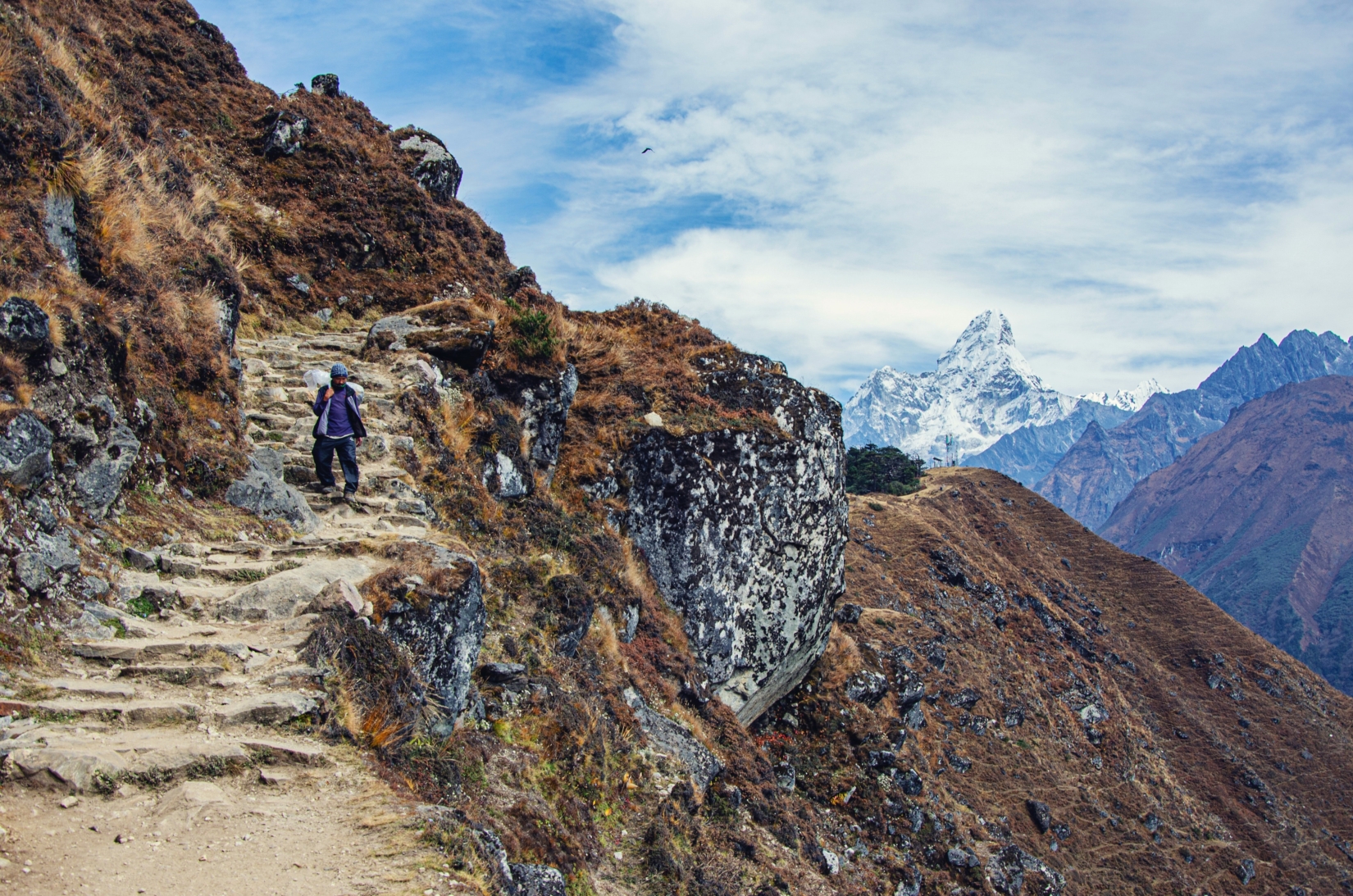
For me, Nepal is unlike any country I have visited. On my visit to this culturally rich and diverse nation I felt like I had entered into a new world. With the influences of both Buddhism and Hindi, the capital city of Kathmandu provides a window into the beautiful culture and history of the Nepalese people and bags you to explore more of this remarkable country.
What’s in this guide?
- Where is Everest Base Camp (EBC)?
- History of Everest Base Camp
- How long is the trek to EBC?
- Is it worth it? Things to see & costs
- How hard is the trek? Terrain, elevation, and altitude
- Food on the Everest Base Camp Trek
- Accommodations on Everest Base Camp
- When’s the best time to go? Temperatures & weather
- What gear and equipment should I pack?
- Should I use a porter service?
- Getting there
- Travel visas and permits
- A typical Everest Base Camp Trek itinerary
1. Where is Everest Base Camp (EBC)?
There are actually two base camps for Everest trekking: the North Base Camp in Tibet and the South Base Camp in Nepal. The Nepalese camp in the Khumbu region is the Everest Base Camp that most people talk about, and the endpoint of this legendary trek. It’s tucked away at the end of a long valley that carves through the Himalayas after splitting at the Sherpa village of Dingboche. The formidable Khumbu Icefall – the first obstacle for those attempting a summit push to Everest – begins right on the doorstep of the camp, leading up to the Western Cwm (also known as the Valley of Silence) and the peaks of Lhotse and Nuptse.
2. History of Everest Base Camp
Climbing on Mount Everest started at the beginning of the 1920s, when a team led by George Mallory (who some think may well have been the first person to reach the summit) came to map out the north face. However, Mallory and his team never established a permanent base camp on their trips, and the north route was all but shut when China invaded Tibet in 1949.
Then came the conquering expedition of Edmund Hillary and Tenzing Norgay . It took place on the south slopes in Nepal. Hillary and Norgay realized it made more sense to have a place to store supplies at the base of the mountain rather than trek the whole length of the Khumbu Valley whenever they needed gear. Thus, Everest Base Camp was born.
3. How long is the trek to EBC?
The Everest Base Camp Trek may be the single most famous trek in Asia, and arguably the world. Some say its booming popularity is the trek’s own worst enemy, and it’s true that the trail has suffered from overcrowding and some pollution in recent years. However, nothing can take away from the thrilling sense of adventure that comes with climbing towards the edge of the world’s highest peak. That reaches a fever pitch in the early days of your hike, when you’ll catch a jaw-dropping broadside of Mount Everest from a lookout on the south side of Ama Dablam.

Distance
The rewards of the trek don’t come so easily. EBC is a high-altitude path that requires considerable acclimatization over a good distance. You’ll typically need 12-14 days of full-on trekking (that’s right, your “rest days” involve walking too!) to complete the 80-mile (130km) roundtrip that starts from Lukla.
This distance is roughly divided into individual daily sections of 8-10 miles (13-16km), but the reason the whole adventure takes so many days is because it needs to be broken down into bite-sized chunks due to the altitude with acclimatization and rest days mixed in. Most itineraries will leave enough time to complete each leg on any given day at well below the average trekking pace.
Walking times
Most walkers find that they hike a maximum of 8 hours each day, though that can go up a little when you reach the higher altitude sections of the route – not just because of the physical challenge, but because you’ll be stopping often to take in all the breathtaking views!
4. Is it worth it? Everest Base Camp trip highlights & costs
The joy is in the journey here, as you trek further up to gaze from the roof of the world. Some of the best sightings of the famous Everest arguably come during the Everest Base Camp Trek itself, from various lookout points along the way. These magnificent views combined with mystical monasteries and Sherpa villages offer a host of intriguing trip attractions en route. For me, the best highlights of the trek are:
- Kala Patthar (Kalapathar) – Roughly translates to “Black Rock”. Detour to this soaring lookout point that’s 18,208 feet (5,550m) up on the ridges above Gorak Shep . It’s a real challenge (think a 1,640-feet / 500-meter ascent in 2 hours) but is hailed by many as the best view over Everest, with the Khumbu Icefall crashing through the valley below.

- Gorak Shep (Gorakshep) – A settlement that seems at the end of the world, this tiny town is the heartland of the Sherpa people and sits at the base of Kala Patthar.
- Sagarmatha National Park Museum – You’ll encounter this one very early on in the trek during your rest day in Namche Bazaar. It’s worth the climb to its perch above the village, mainly because the forecourt has incredible views of Everest and Nuptse – your first glimpse of the great mountain. Inside, you can learn all about the unique culture of the Khumbu Sherpa people .
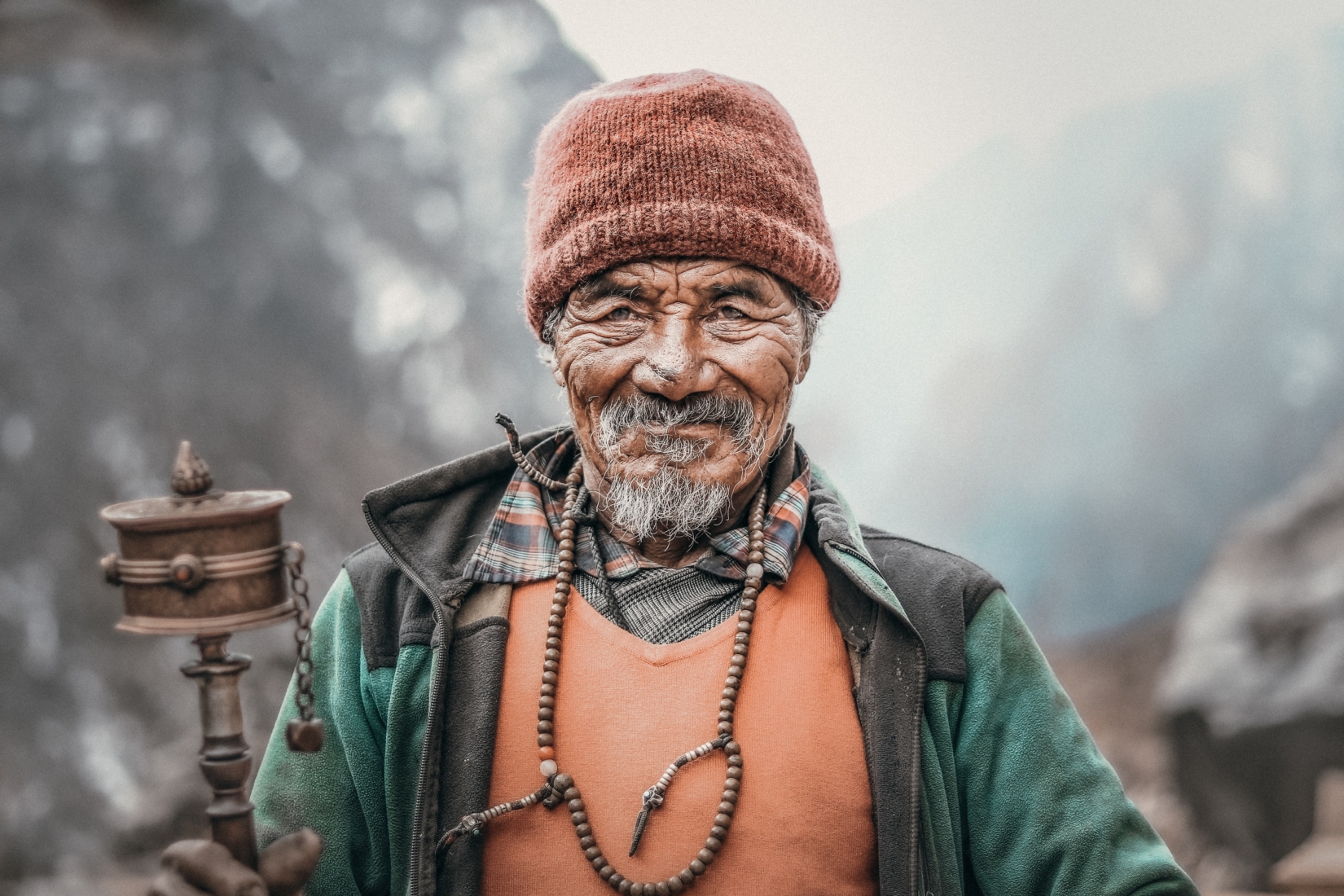
- Tengboche Monastery (Thyangboche Monastery or Dawa Choling Gompa) – The largest Buddhist gompa in the valley of Everest, Tengboche Monastery is a pitstop for determined trekkers bound for the summit. They come to light candles and ask for blessings.
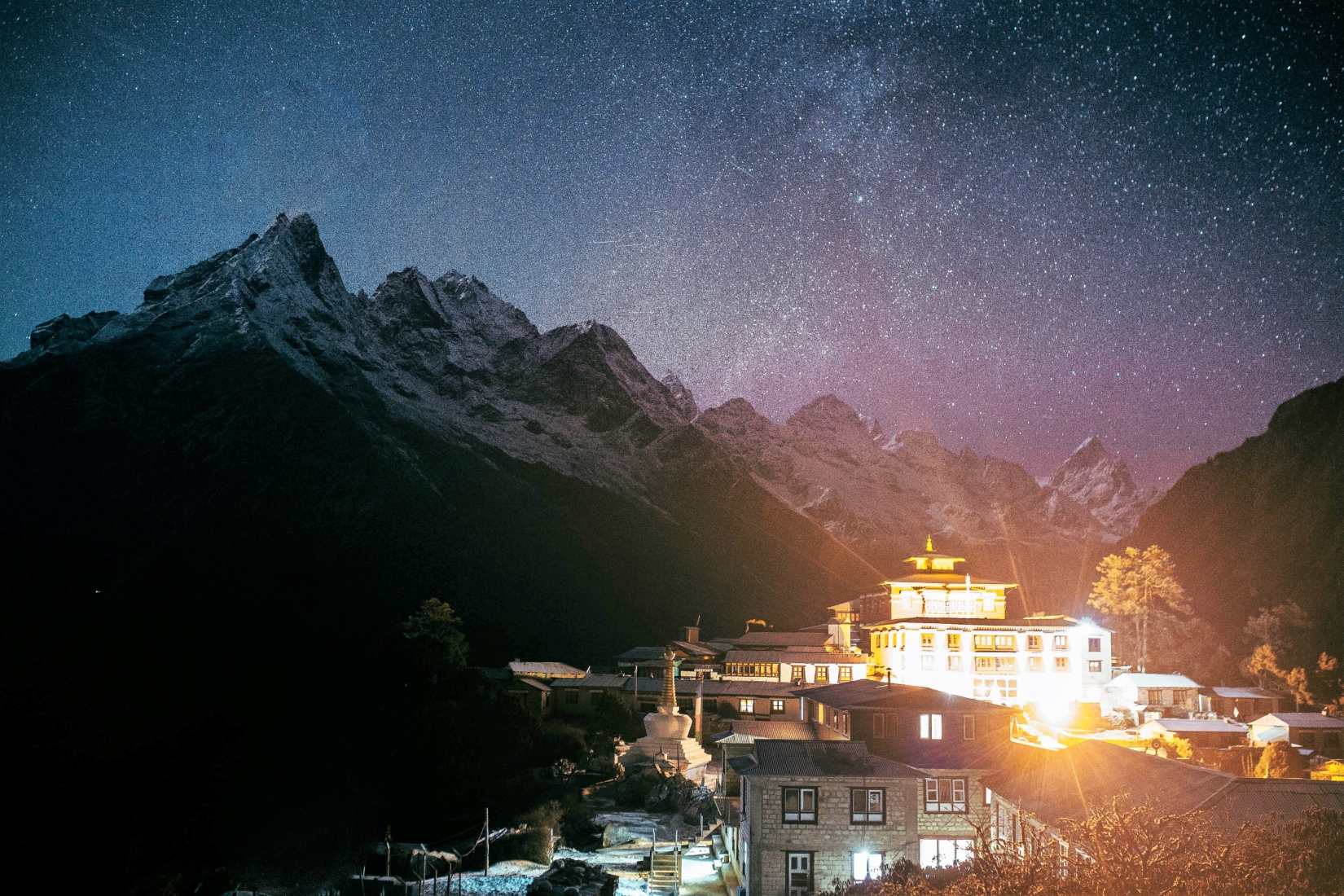
- Nangkar Tsang / Dingboche Viewpoint – Above the town of Dingboche, this detour off the main route is good acclimatization trekking and offers a panorama that takes in the Khumbu Glacier and the whole Imja Khola Valley.
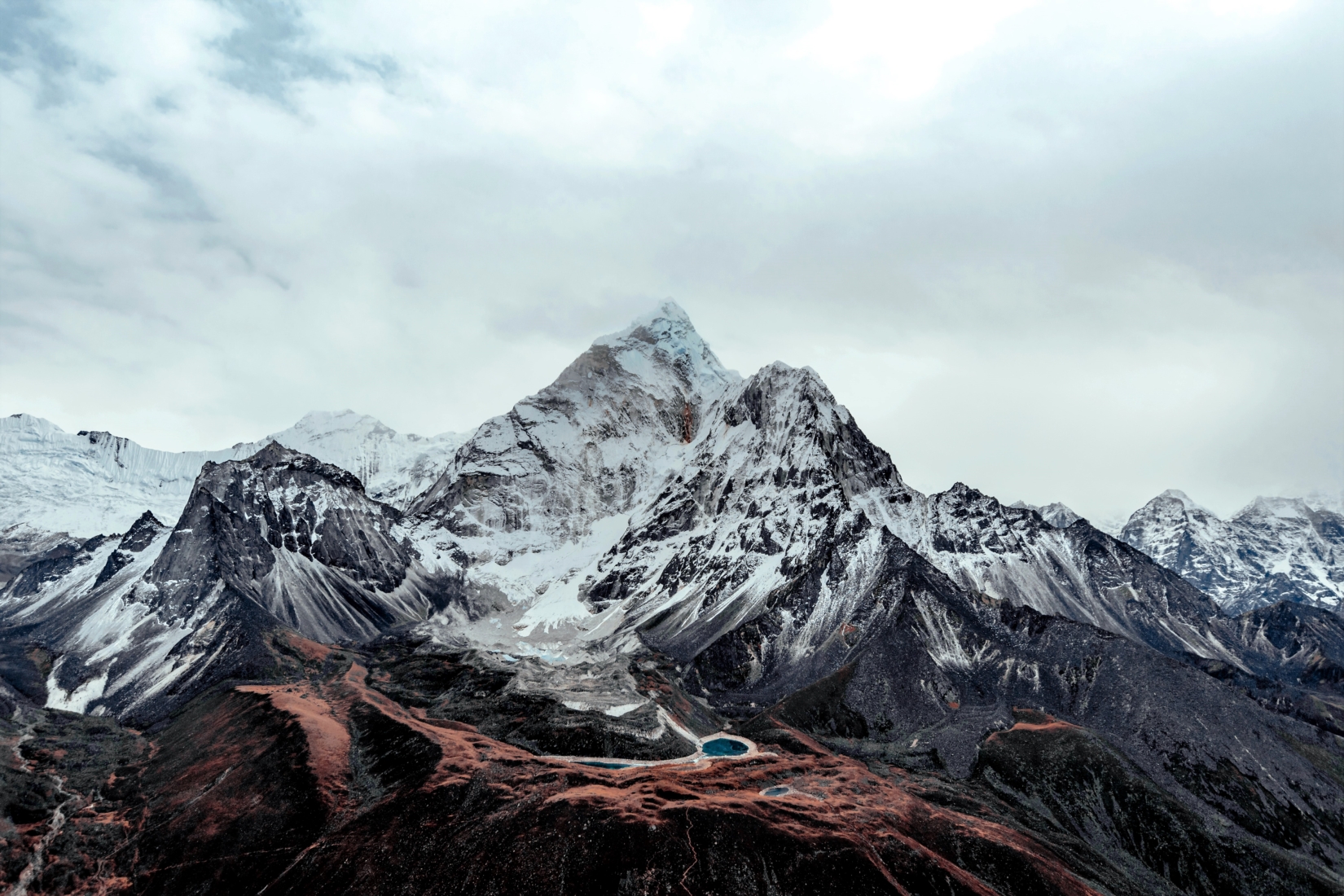
With so much natural beauty to be experienced, how much will it set you back? When it comes to pricing, costs of the Everest Base Camp Trek can range widely but the best all-inclusive tour packages start at around US$4,295 (including domestic flights to/from the trek start point) . If this number is giving you sticker shock, don’t let it deter you from the trip of a lifetime to Nepal, because my team at The Explorer’s Passage is always here to work with you and your preferences to craft a trip that fits your needs .
5. How hard is the trek? Terrain, elevation, and altitude
So just how difficult is the trek to Everest Base Camp? To answer this, you’ll have to consider the terrain and heights of EBC. Your physical fitness also plays a factor in the perceived difficulty of this adventure. Based on our Trip Activity Level Guide , we classify this trek as an advanced level, but you may be glad to know that no technical training or mountaineering experience is required.
Not sure if this Himalayan adventure is right for you? Contact us and we’ll walk you through details on the physical demands, recommended training, and more so you can make an informed decision.
The Everest Base Camp hike graduates from the alpine surroundings at the south end of the Sagarmatha National Park to the scree-covered ridges of ancient moraines in the final push towards the trekking finish line. The first sections are easier in terms of terrain but more difficult because they are constantly steep. You’ll notice this in the ascent from Lukla to Namche Bazaar, and then again from Namche Bazaar to Tengboche. The path there is largely shaded by pine and ironwood forests, muddy when wet but also interspersed with rocks wedged into the ground. You’ll stroll across suspension bridges to cross most rivers.
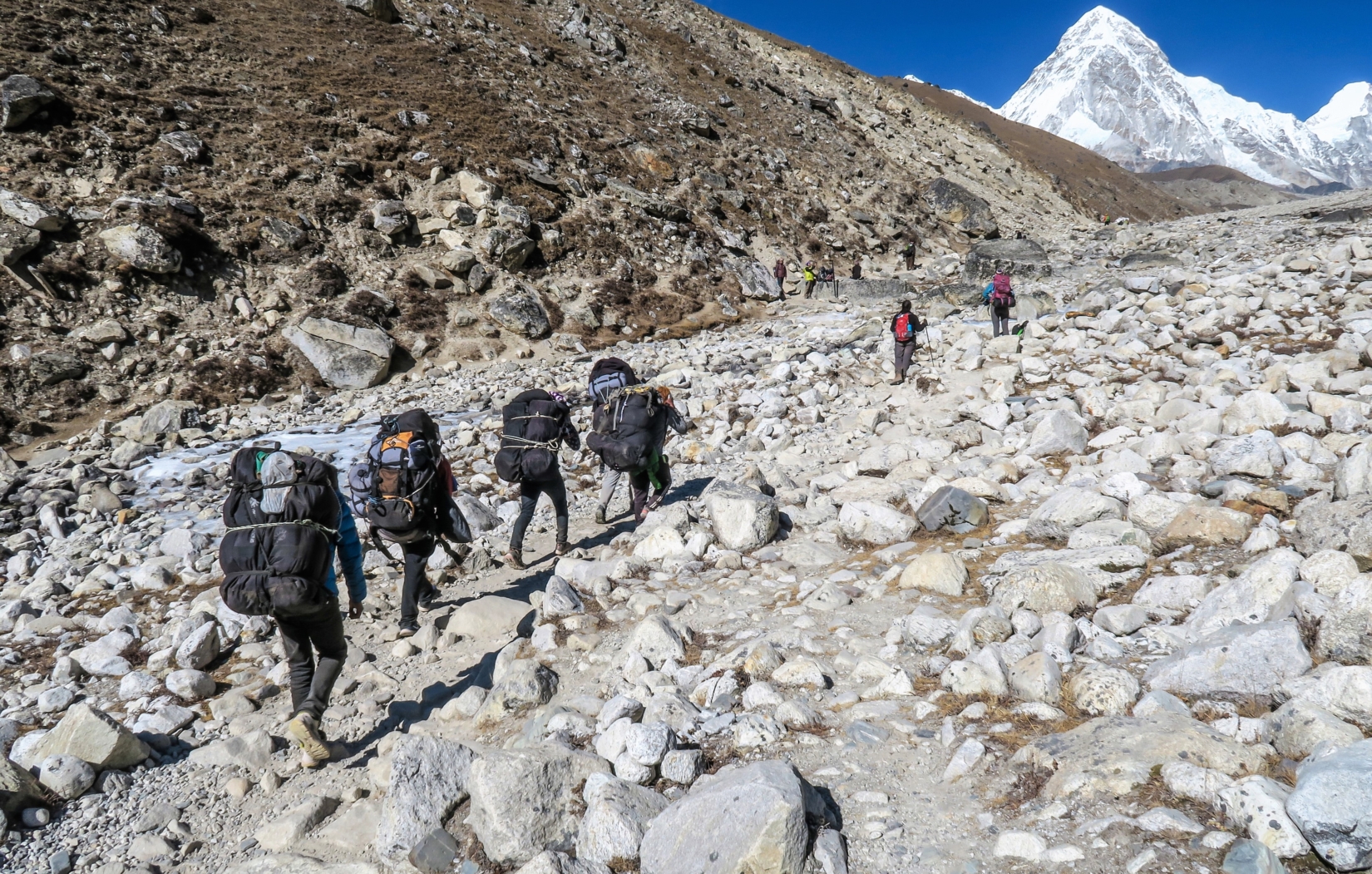
After the first few days of your trip, you’ll see that the trekking path levels a little as it skirts a wide, flat valley with the mighty Himalayas looming on all sides. This is where you lose the tree cover for good, so be sure to have the sunscreen handy. It’s rock and grit underfoot until you near Gorak Shep. There, the route sort of merges with the great pebble and rock moraine at the end of the Khumbu Icefall. It’s normal to find snow coverage in those parts, especially if you’re trekking between November and March.
Elevation and altitude
How high is Everest Base Camp? Well, altitude is commonly travelers’ biggest challenge on this tall trek. As mentioned before, you’re going to have to clock up a hefty 17,598 feet (5,364m) above sea level. You’ll manage 9,400 feet (2,865m) at the EBC trailhead, which is taken care of by the flight from Kathmandu to Lukla. The rest is up to your legs. You’ll knock out about 1,800 feet (549m) by climbing to Namche Bazaar. After that, days on the trail (not including acclimatization days) average around 1,200-1,600 feet (366-488m) in elevation gain, though it’s on less-steep paths once you cross the tree line around Tengboche. Everest Base Camp elevation is no joke and can be difficult for some.
Acute Mountain Sickness (AMS) – the mildest form of altitude sickness – is certainly a risk here. It can affect anyone over altitudes of 8,000 feet (2,438m), but usually has severe impacts at higher levels. Since the EBC Trek reaches altitudes of more than double the height where AMS can possibly kick in, there are usually two full acclimatization days planned in – one in Namche Bazaar and the another in Dingboche or Lobuche. These days aren’t for resting but instead used to climb high and then descend to sleep at lower altitudes, a common practice that’s known to help the body acclimate to conditions at higher elevations.
Don’t be surprised if your Everest Base Camp Trek guide constantly reminds you to drink enough water as it’s another way to combat AMS. Once you hit the higher altitude parts of the path, you can typically expect your guide to be prepared with a supply of oxygen, should you need it. You might also want to consider packing an AMS medication like Diamox on your trip to Nepal.
Even seasoned alpinists find the trip a challenge and lots of climbers struggle with Acute Mountain Sickness. Just remember: no pain, no gain on this most incredible of trails! On this trip, you’ll see the sheer majesty of the Nepalese Himalayas up close and scale to viewpoints that are simply some of the best you’ll ever hike to.
6. Food on the Everest Base Camp Trek
All that trekking is going to work up a serious appetite, you can be sure of that. Thankfully, EBC teahouses tout some decent grub for when it’s time to refuel. Don’t be surprised to find that the menus are virtually identical the whole way along, even if the dishes themselves vary greatly with the whims of different chefs up and down the trip route.
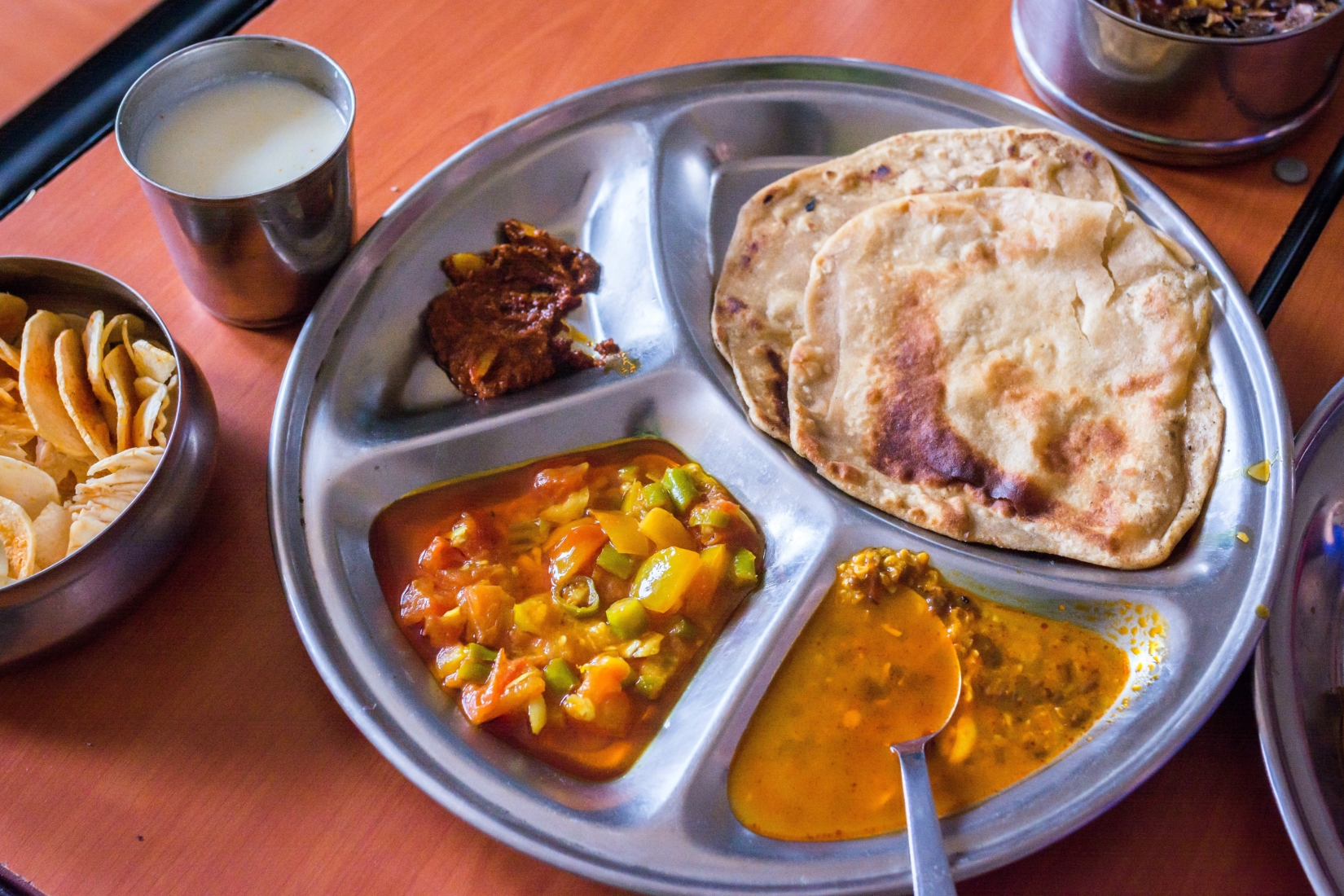
Common dishes include:
- Dal bhat – The most popular EBC meal of all. Every hiker who’s done the route has warmed up with this spicy lentil stew at least once. It’s usually served with rice and chapati flatbread.
- Egg and fries – A hearty option for those feeling really hungry, this one includes hand-cut, fried potatoes and a double-egg omelette.
- Shyakpa ( Sherpa stew ) – A classic favorite of sherpas in Nepal and a great vegetarian option that’s basically broth with cut potatoes, carrots, and other root vegetables.
- Pizza – Some teahouses try their hand at pizza. We’ll let you be the judge of whether or not the Italians would be proud.
Is your mouth watering yet? These dishes will surely give you the energy you need to power through the trek.
7. Accommodations on Everest Base Camp
Apart from the hotels in Kathmandu at the start and at the end of your quest, all of your accommodations on the Everest Base Camp Trek route are likely to be teahouses. Don’t let the name fool you – these aren’t just places to stop for a hot drink. They’re actually full-fledged bed and breakfast lodges purposely designed to host travelers.
EBC teahouse accommodations in Nepal are simple, clean, and comfortable. The general rule is that the quality is better towards the start of the trek, where the teahouses are both larger and better supplied. Rooms are usually minimally decorated. They have wood-paneled or plastered walls and, for the most part, a single window, along with low-rise beds with foam mattress pads. Some have in-room heating, while other teahouses are warmed by a central stove that’s kept alight in the evenings. Some places offer hot showers, but most only offer cold. Electrical charging of devices is on offer at most places, though that could come at an extra cost.
For more details on accommodations, check out our Everest Base Camp tour page .
8. Best time to trek to Everest Base Camp
There are two main seasons for trekking to Everest Base Camp in Nepal. The first is in the spring (late March to May) and the second comes in the autumn (late September to November) . Both high seasons essentially straddle the main monsoon season, offering more dryness and clearer skies without too much precipitation. Although, it’s important to note that zero rain can never be guaranteed this high up.
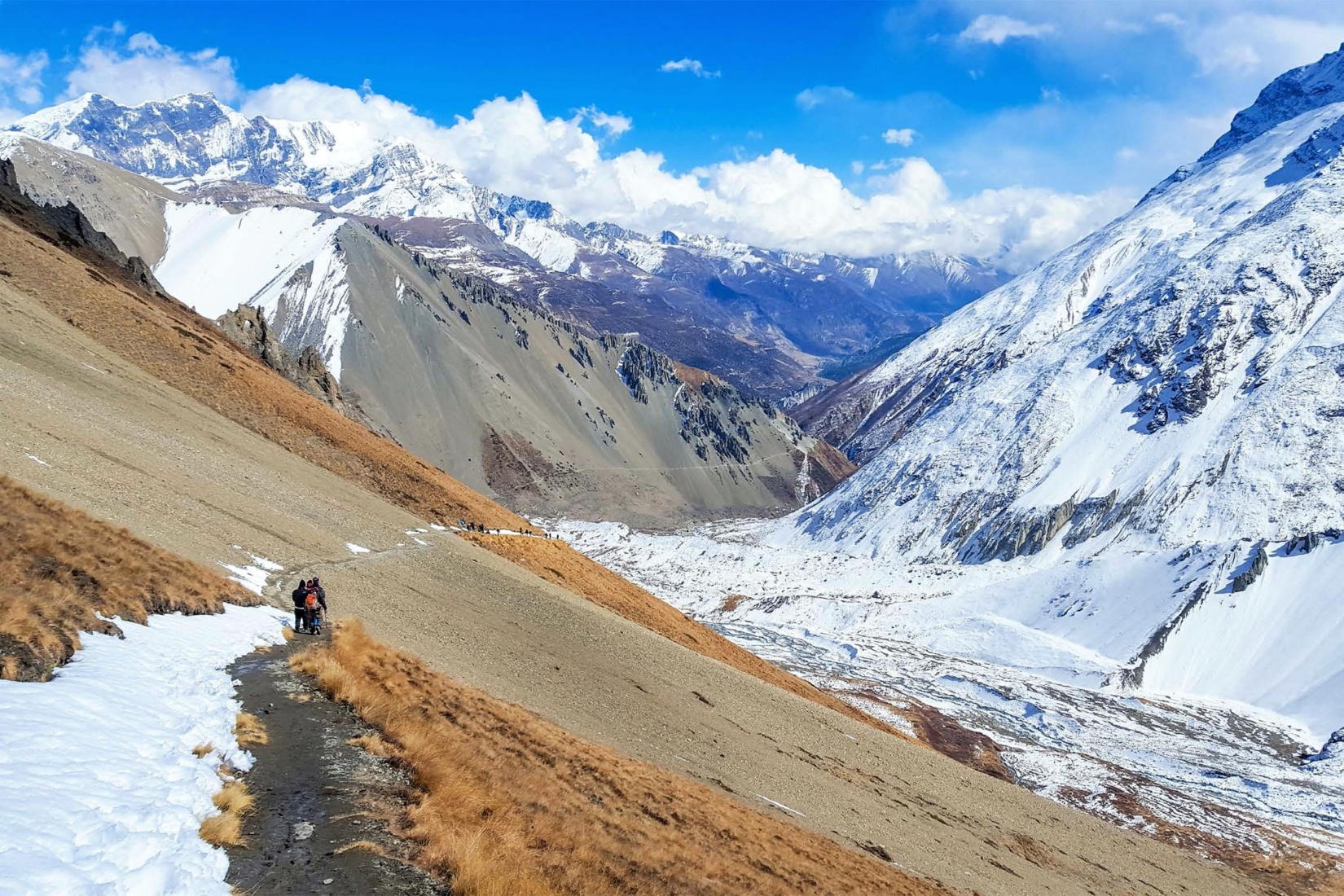
Here’s a breakdown of the best months to go:
- March – Marks the beginning of the trekking season proper but it’s not its peak. That means a good balance of smaller crowds, availability in teahouses and affordability. Most of the ground snow has melted by this point, but rising temperatures do mean there can be some heat haze to obscure the views.
- April – The busiest time of all on the Mount Everest Base Camp Trek, but for good reason: Clear skies abound, the views are wonderful, and temperatures are comfortable. You can also come in April if you’re keen to see the hardcore mountaineers prepping for a summit push up Mount Everest itself.
- May – The hottest month on the trail with less harsh conditions in the evening. Downsides include heat haze that can obstruct the views and the potential for some early-monsoon rains.
- September – The first month after the monsoon can see some rains stick around. However, that also means the lower-altitude parts of the trek between Lukla and Namche Bazaar are wonderfully lush with flower blooms and vivid greenery.
- October – Second only to April in terms of crowds of travelers. Lots of people hit the EBC trail at this time because there’s a great balance between comfortable temperatures and clear skies. In fact, I’d say that this is the clearest time of all, so it’s perfect for those wanting uninterrupted views of Everest.
- November – Cold winter conditions can start to set in by November. It’s not unusual to encounter snow at higher altitudes and you’ll need proper thermal gear to get through the nights. The payoff is super-clear skies and way fewer hikers on the trail.
December to February is the low season for one main reason: Snow. Temperatures during these colder days drop to an average of 25 degrees fahrenheit (-4℃) in the middle of the winter season, and that’s in Namche Bazaar, one of the lowest points on the trek. It’s not ideal for overnight hikes that rely on teahouses made of plywood walls. That said however, completing the EBC certainly isn’t impossible at this time, it just presents unique challenges. You’ll need way more thermal layering, special trekking equipment to handle the snowdrifts, and probably extra days to complete the trek. The upside is that winter days offer very clear skies and there’s rarely a big crowd on the trail.

9. What gear and equipment should I pack?
When considering what to pack for your trip, it’s good to know there are strict limits on the weight each passenger can take on that initial flight from Kathmandu to Lukla. What’s more, there are limits on the size and weight of bags that you can ask porters to shuttle up and back to EBC for you. Due to these limits, you’ll want to think very carefully about what to bring for this once-in-a-lifetime trek. As a general rule, it’s good to stick to about 22-33 pounds (10-15kg) in your main pack, with a small 30-litre day pack on the side to carry the things you’ll need on the trail.
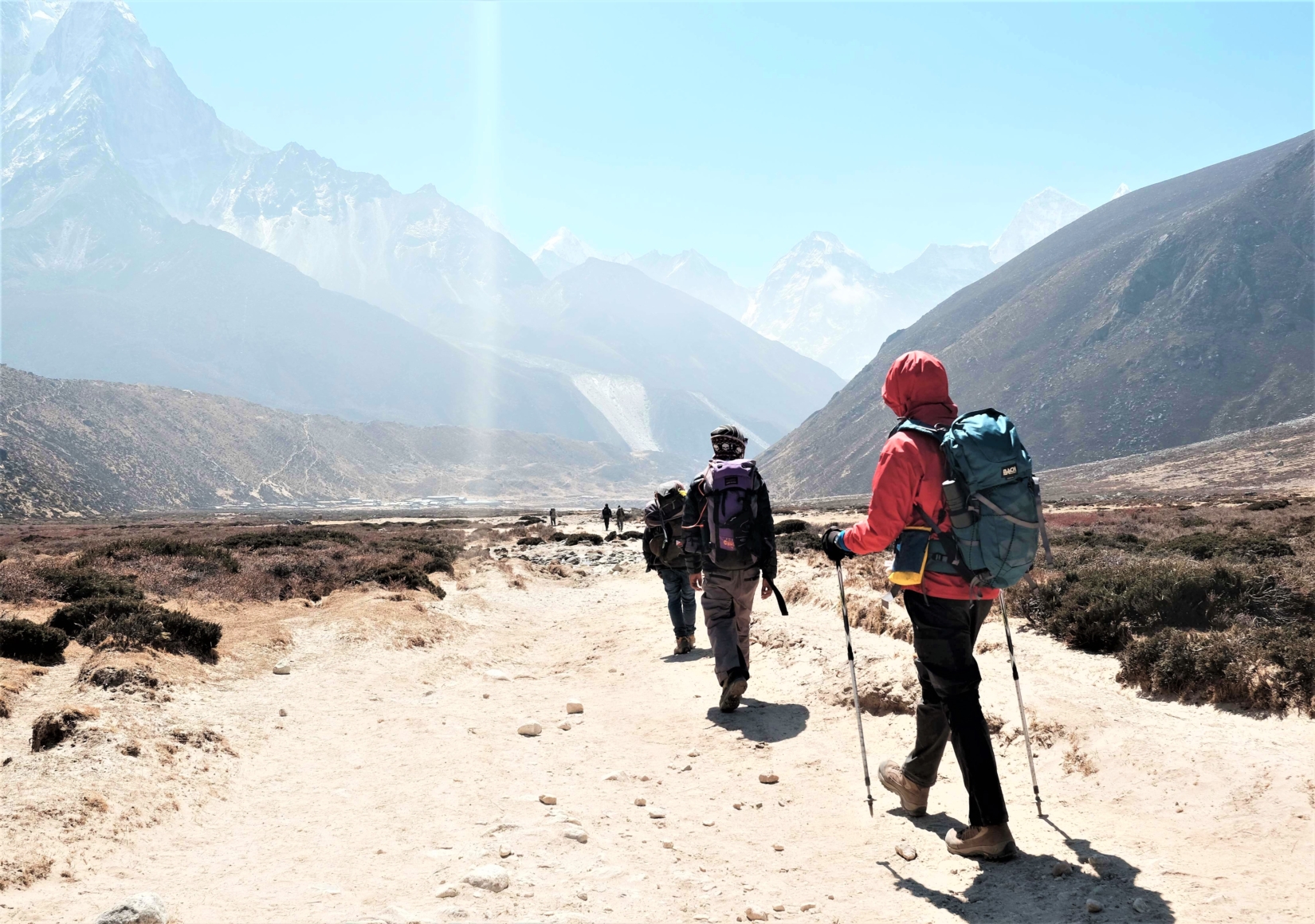
Layers are always key in the Nepalese mountains, as temperatures can warm up considerably during the day and drop suddenly at night. You’ll want to be able to add and remove fleeces and thermals on the upper body to match the fluctuating temperatures. For the lower body, I’d recommend bringing both shorts (mainly for the lower elevations of the trek where it can be positively balmy) and sturdy trekking pants (for higher elevations), backed up by good thermal-rated underlayers.
Waterproofs are also essential for your trip. Rain and snowfall can come without warning in the high Himalayas, and weather patterns on the EBC Trek have little respect for the so-called high season, so inclement weather can happen any time of the year. Winter trekkers will need to plan a little more, though, in order to deal with all that ground ice and much colder conditions.
On top of that, you’ll need to think about all those hiking essentials. Good boots, a pair of hiking poles you feel comfortable with, both a wool hat and a sun hat, strong sweat-resistant sunscreen, headlamps, and a decent-capacity water bottle should all be on your packing list.
That’s just scratching the surface, but The Explorer’s Passage will make sure you’re fully prepared for your chosen season on the EBC route when you plan with us – just ask us for a full packing list !
10. Should I use a porter service?
Put simply, porters are essential on the trek to Everest Base Camp. They’re very much the superheroes of the expedition, transporting the bulk of most trekkers’ gear and equipment from camp to camp outside of Lukla or Namche Bazaar. For larger groups of trekkers, some operators will utilize animal support for transport assistance. Porters will carry one standard rucksack or duffle bag per hiker. Usually, that’s limited to a weight of between 22-33 pounds (10-15kg) per person, though it can be lower or higher depending on the Everest Base Camp tour you pick. That leaves you to only carry what you need for the day. As mentioned above, a 30-litre pack typically works best, just enough for water, snacks, fleece and waterproof layers, your camera, and sunscreen.
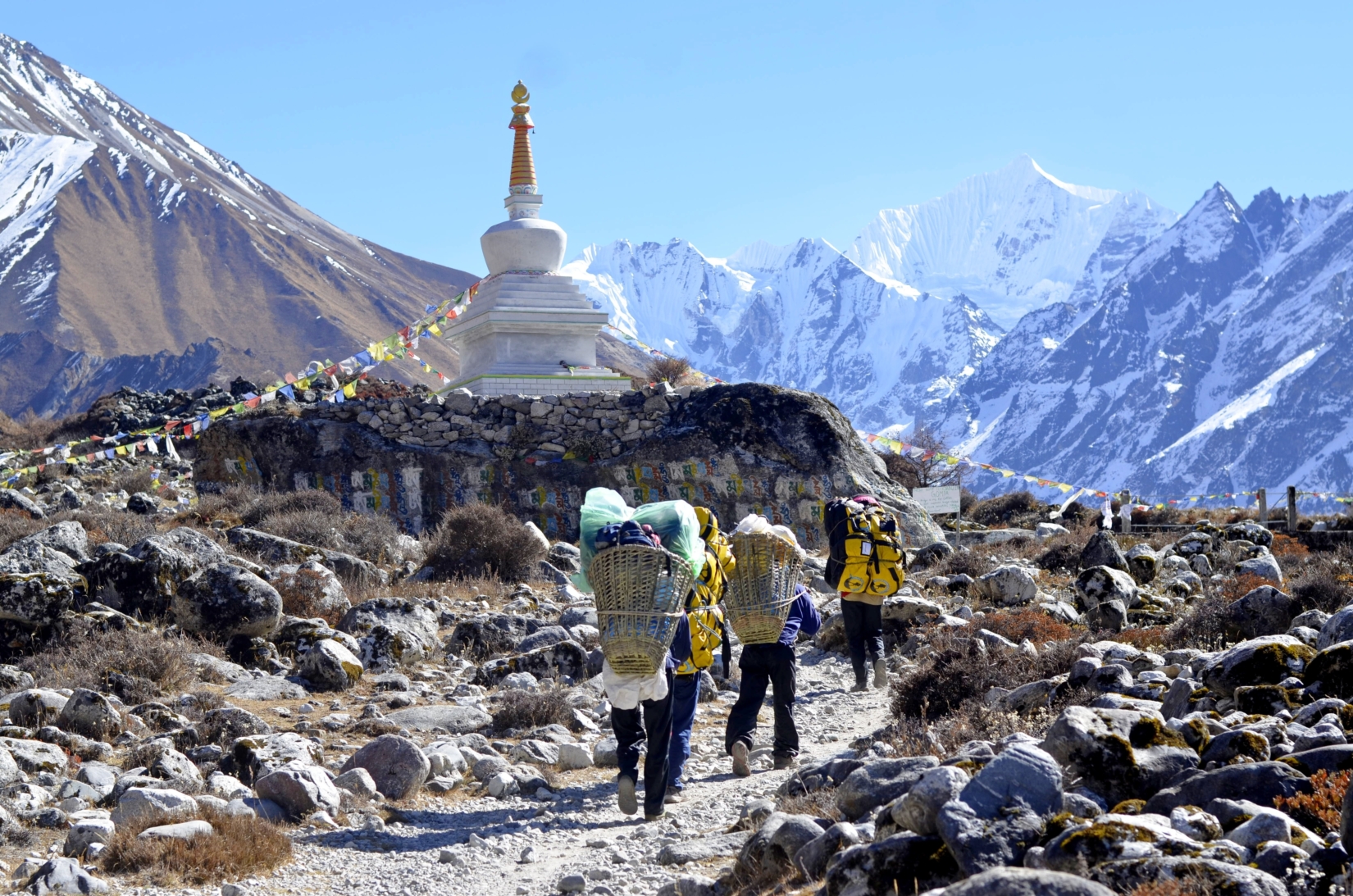
I do, occasionally, see people who choose not to engage a porter but that’s a tough task. Ultimately, when you’re deciding whether or not porter service is right for you, remember that the Mt. Everest Base Camp hike involves several days of walking at altitudes over 12,000 feet (3,658m) above sea level, on tricky terrain to boot. It’s a challenge even without 44 pounds (20kg) of gear strapped to your back!
11. Getting there
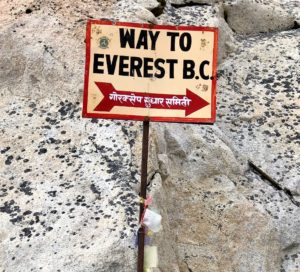
So now you know what this infamous excursion holds and you can’t wait another moment to go, how will you get there? The trip to the start of EBC is a journey in itself. You’ll first jet into Kathmandu, the heady, rickshaw-rattling capital of Nepal. It’s an amazing place, filled with UNESCO temples and the aromatic spices of Nepalese curry houses. We usually recommend that travelers arrive at least a couple of days before they are due to set off for the trek, not really to help with altitude acclimatization – Kathmandu is a relatively modest 4,500 feet (1,372m) up – but more for cultural acclimatization.
Doing that means you’ll have time to score any last-minute gear you might have forgotten for the hike itself. Kathmandu has plenty of decent outfitters that offer good deals on key items like down sleeping bags and thermals. It also means you’ll get to see some of the great cultural treasures of the country, including the tower-topped temples of Durbar Square and the colossal Boudhanath Stupa, which is usually writhed in prayer flags dancing in the wind.
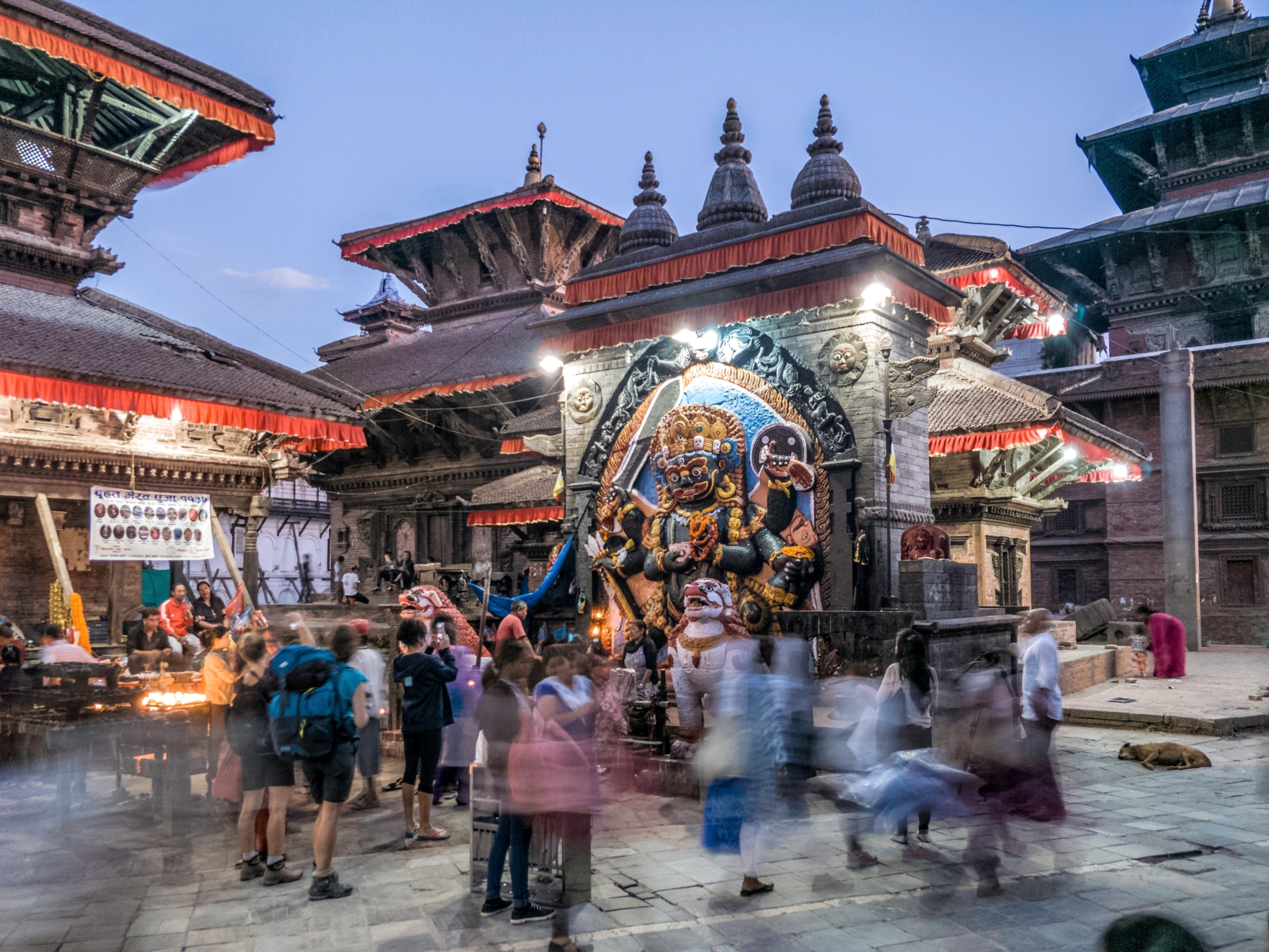
After Kathmandu, there’s a short-haul flight from the domestic terminal of Kathmandu Airport that takes you all the way to the trailhead of Everest Base Camp in Lukla. The plane ride is relatively quick – about 30 minutes total – and pretty spine-tingling, especially as the landing strip on the Lukla side sits a whopping 9,300 feet (2,835 meters) above sea level on a precipitous mountain plateau. It’s not a flight you’ll forget in a hurry!
12. Travel visas and permits
Some nationals of specific countries can enter Nepal without a visa, but most travelers will require one. For those who do, entry visas for tourists traveling into Nepal are generally available in advance or upon arrival at Tribhuvan International Airport and various land borders. If you’re unsure of which category you fall into, use this easy tool to double check your entry and health requirements .
When it comes to permits, there are no permits for the Everest Base Camp Trek itself, at least not like there are for the Inca Trail and some other bucket-list hikes elsewhere on the planet. However, there are limits to the number of guests teahouses can host (so it’s important to book early) and you will be passing through some regions and conservation areas that require visitors to obtain special passes, but no need to worry as The Explorer’s Passage will handle all of these details for you. Just make sure your travel documents and essentials are still valid.
For the route to Everest Base Camp from Lukla, there are two key documents that we will secure for you:
- Khumbu Pasang Lhamu Rural Municipality Entrance Permit – This is a pass for access to the whole Khumbu region.
- Sagarmatha National Park Entry Permit – This is your pass to enter the national park that contains Mt. Everest.
It is important to note, those looking to do the longer, 20-day extension to the EBC Trek, going from Kathmandu by road and then onwards by foot from Jiri, will also need a pass for access to the Gaurishankar Conservation Area.
13. A typical Everest Base Camp Trek itinerary
The temple-topped, bazaar-busting city of Kathmandu is likely to be where you enter Nepal. You’ll definitely want to take some time out of your trip to explore this amazing city first. Then, it’s time to head northeast to start your Everest Base Camp hike. Most travelers do that with a flight to Lukla and then walk from there, but it’s also possible to trek all the way if you have the time. Still, most Everest Base Camp Trek itineraries officially start at Lukla airport.
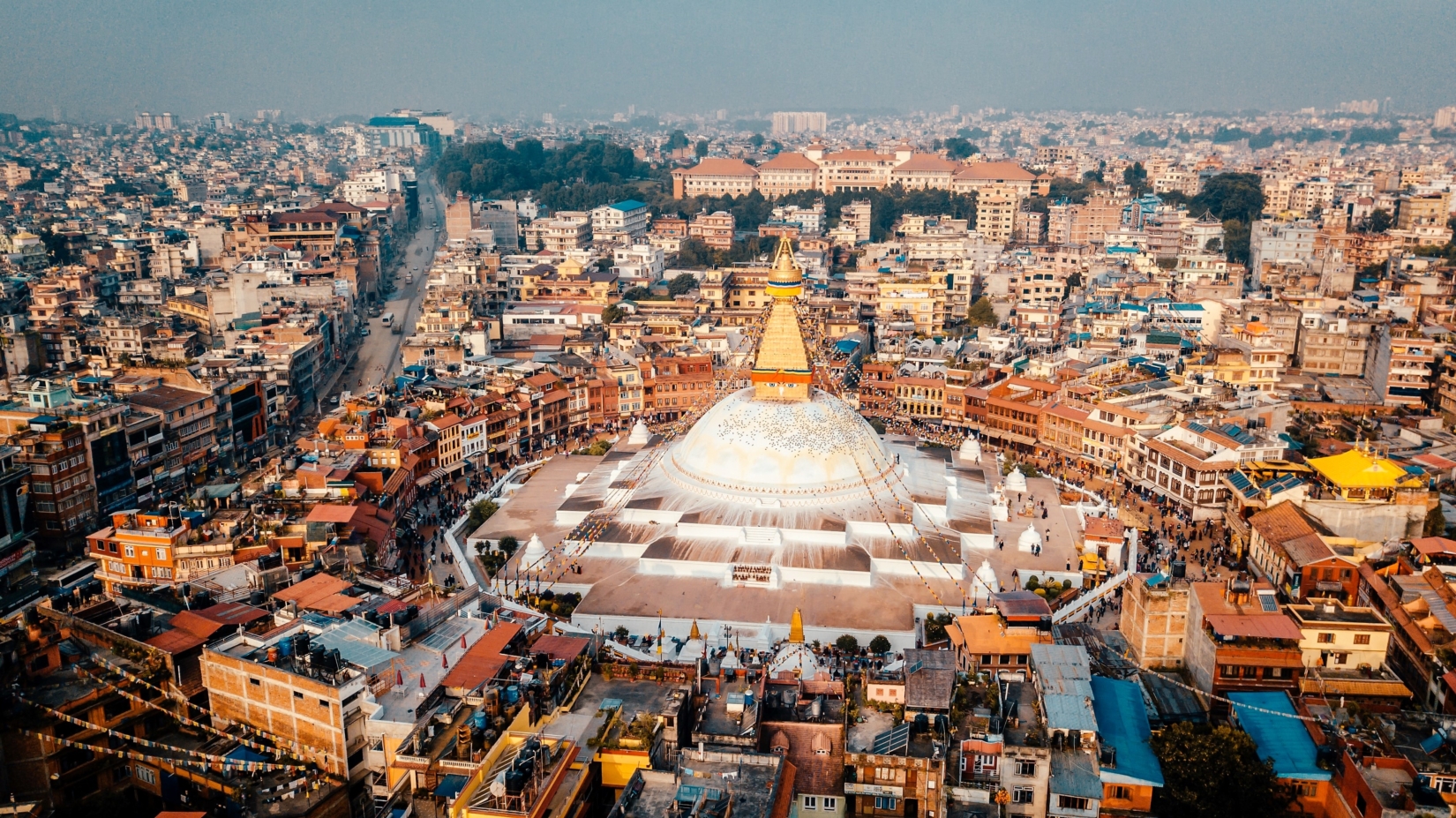
For a customized itinerary, connect with us to craft your ideal trip.
- Day 1: Namaste and welcome to Kathmandu! Get ready to experience one of the most awe-inspiring journeys our planet has to offer. You’ll arrive in Kathmandu and explore the dynamism, scenery, and history the city has to offer.
- Day 2: Today will be filled with cultural immersion. Begin by exploring three UNESCO World Heritage Sites. The first is Boudhanath, one of the largest stupas in Nepal. Next is Pashupatinath, a sacred Hindu temple located on the banks of the Bagmati River. Finally, you’ll visit Durbar Square, which sits in front of the old royal palace. Finish your day with one of the most classic walks through the old narrow streets of Kathmandu. In the heart of this city, soak up the buzzing atmosphere of the local markets and stores, before heading back to the hotel.
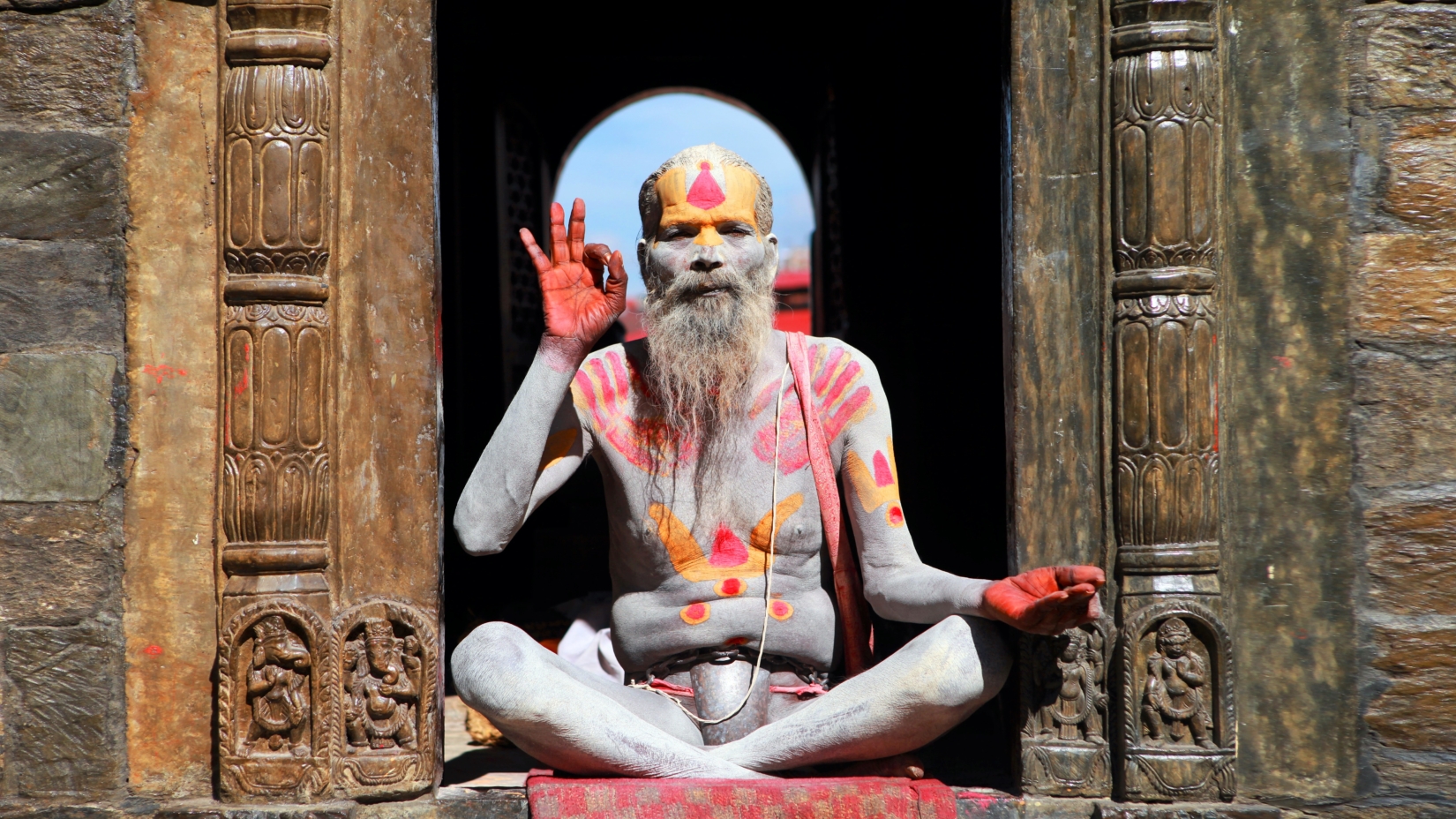
- Day 3: Kathmandu to Phakding (8,562 ft / 2,610 m) – After a short flight to Lukla, it’s a pleasant hike through dense pine forests and steep gorges traversed by swinging suspension bridges. There’s a real bustle about this part of the path, with oodles of hikers fresh onto the trail to chat to. It’s also the lushest part of the trail, with wildflowers and roaring riverways, more Alps than Himalaya.

- Day 4: Phakding to Namche Bazaar (11,286 ft / 3,440 m) – Today you’ll go up to the main hub of EBC: Namche Bazaar. This is a good place to stock up on any essentials you may have forgotten to bring on your trip. Enjoy the town that’s abuzz with hiker cafes and lodges, and comes with stunning views of the jagged Mount Khumbu Yül-Lha (Khumbila), loosely translated as “God of Khumbu” peak, to the north.
- Day 5: Namche Bazaar (11,286 ft / 3,440 m) – This is your first official acclimatization day. The best way to prepare for the altitude is to hike high during the day and return to lower altitudes in the evening to sleep. The Khunde and Khumjung Loop is the perfect option for that, taking you to long-lost Sherpa villages with mystical Buddhist stupas.
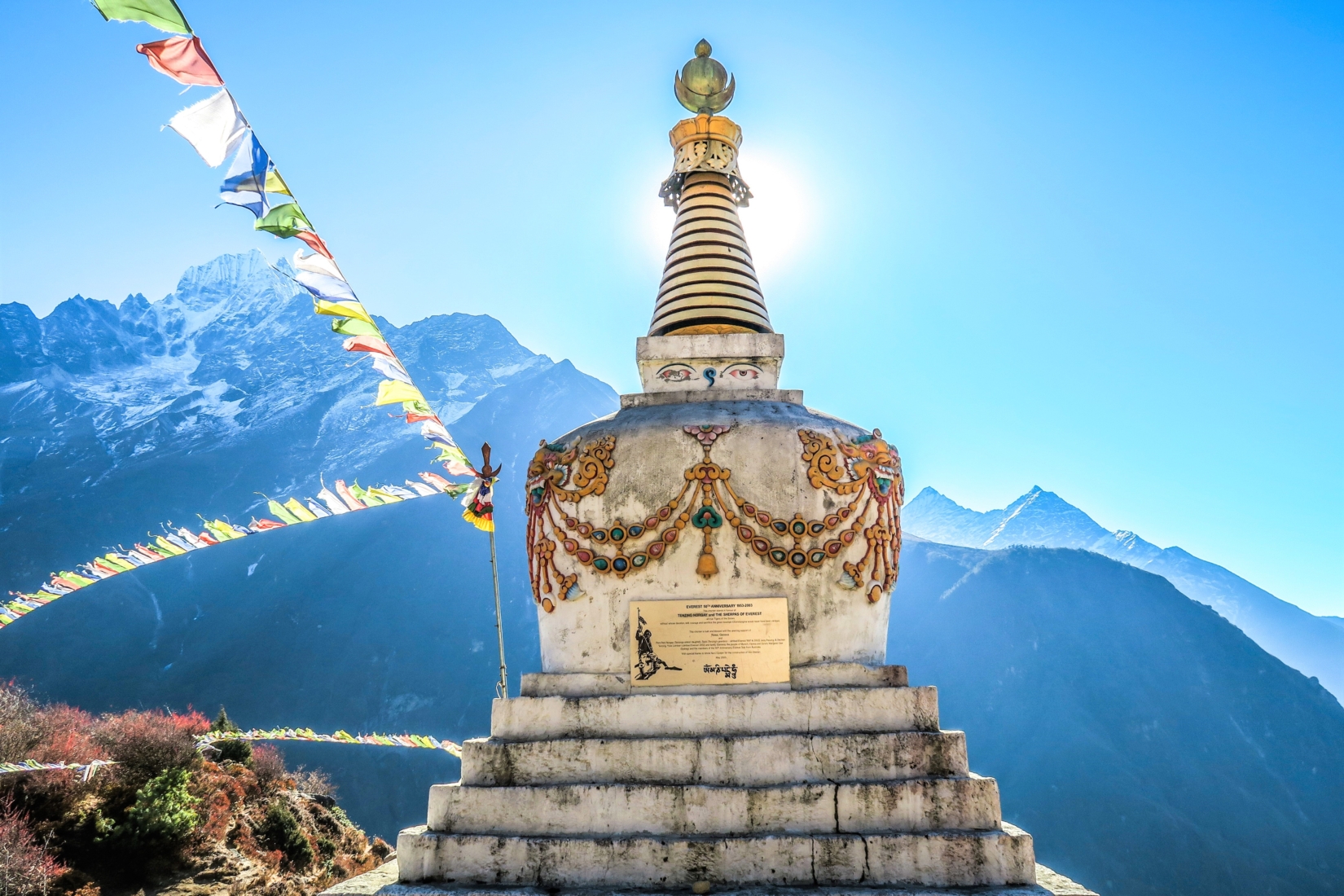
- Day 6: Namche Bazaar to Tengboche (12,664 ft / 3,860 m) – Your first steps on the Everest Base Camp Trek proper begin with a steep incline that takes you almost out of the treeline. The path levels and then emerges into a lunar-like world of big brown rocks where the Himalayas draw ever closer. The destination? The rhododendron forest, where you’ll stay for the evening.
- Day 7: Tengboche to Dingboche (14,470 ft / 4,410 m) – Expect exposed trekking except for some sections through high-altitude pine woods. Later in the day, the trail wiggles across the sides of Ama Dablam peak and you’ll get to appreciate the Everest massif in all its glory looming overhead.
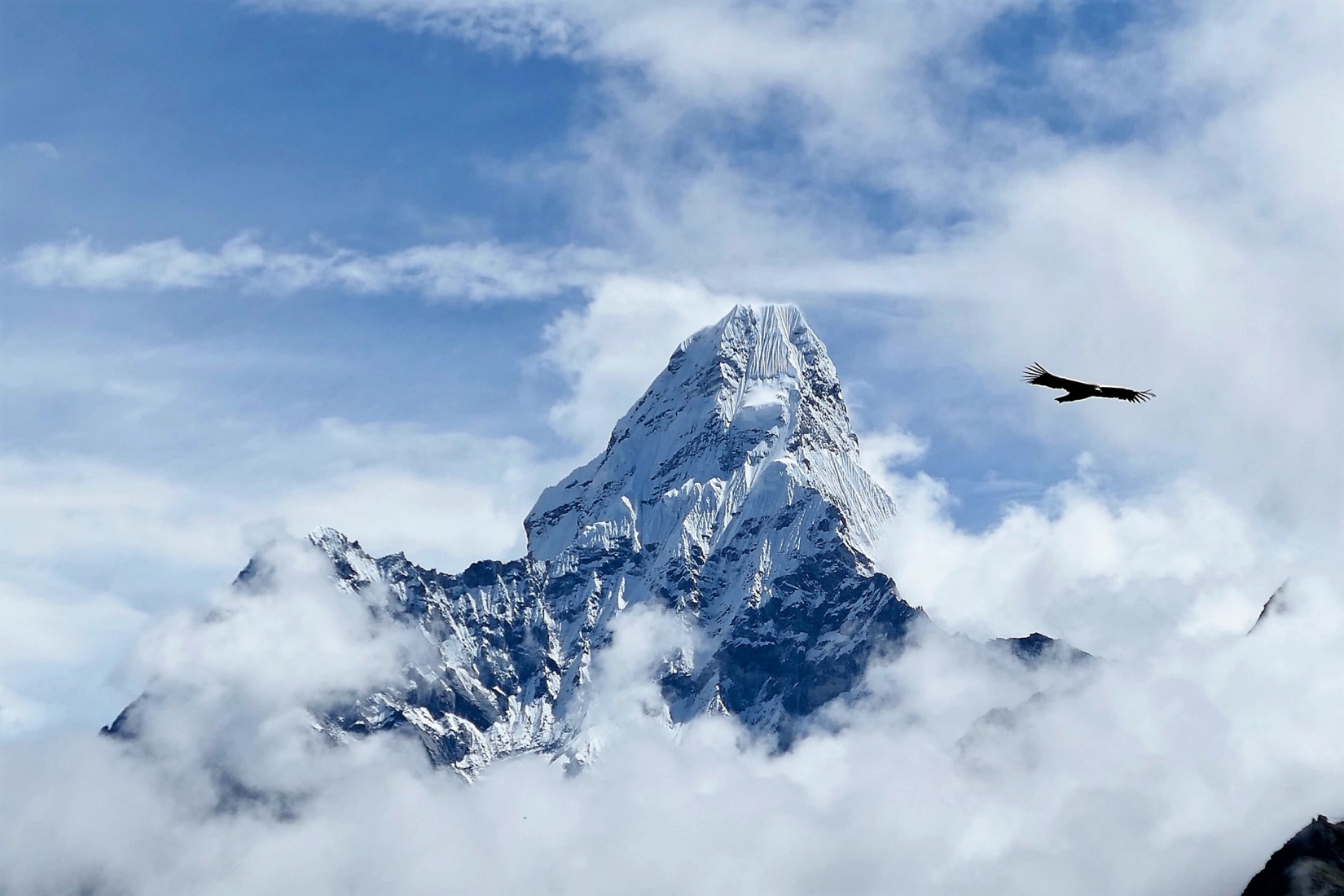
- Day 8: Dingboche (14,470 ft / 4,410 m) – A second acclimatization day is needed at this stage of the trip. Perhapstake some time to experience Chukhung (15,518 feet / 4,730 meters), a place traditionally used to raise yak. Lodges rise up amongst the peaks, making it a perfect spot for relaxation, observation and absorbing the scenery and local life.
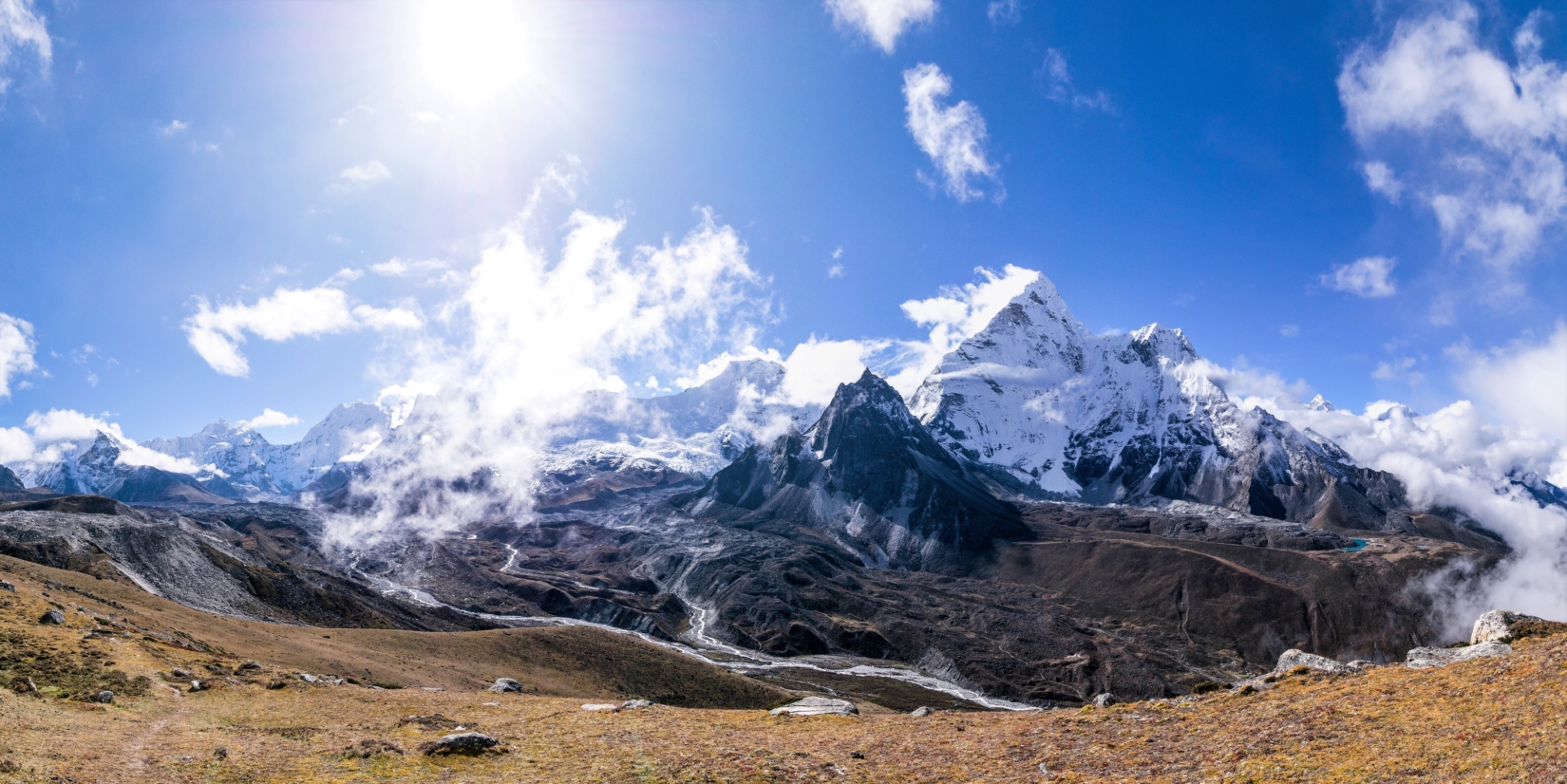
- Day 9: Dingboche to Lobuche (16,210 ft / 4,941 m) – You’re now onto the penultimate push towards Everest Base Camp. Welcome to the high Himalayas. Trees are long gone in this land of rugged rocks and the cascading tongues of glaciers. The day includes some amazing visions of the approaching Everest massif, especially the closer face of Nuptse.
- Day 10: Lobuche to Everest Base Camp (17,598 ft / 5,364 m) – The final part of the trail starts by weaving over rocky highland terrain and then passes through the Gorak Shep village, where a small trekking lodge clutches the edge of the Khumbu Icefall. There’s a chance of a small rest there, but not for long, because EBC is only another 1.5 hours up the valley!
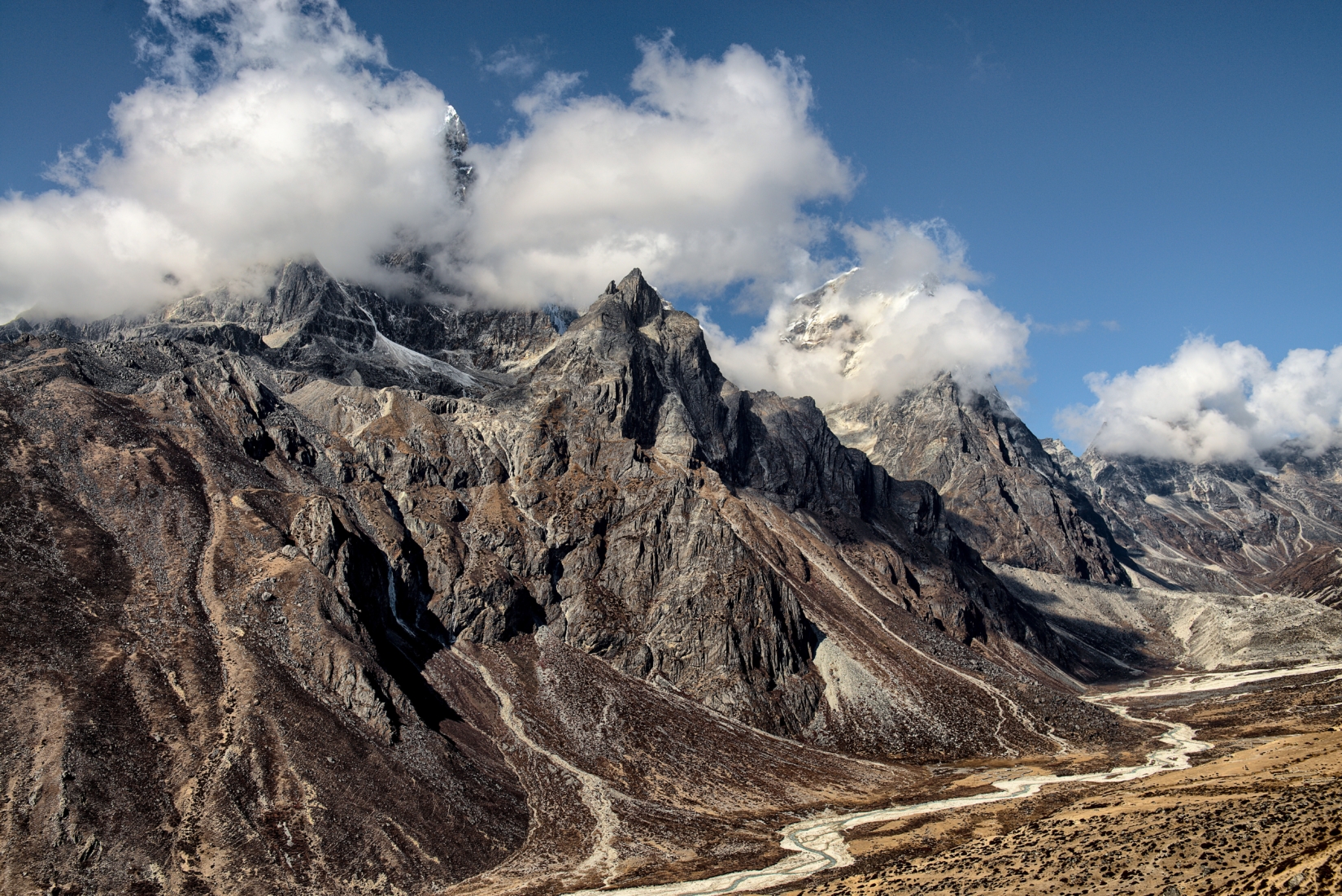
- Day 11: Everest Base Camp to Pheriche (14,340 ft / 4,371 m) – Today you’ll retrace your steps towards Pheriche, hiking first towards Kala Patthar. Oxygen begins to increase and much of this portion is downhill, and you’ll have the chance to take in the panoramic views with an easier trek.
- Day 12: Pheriche to Debouche (12,533 ft / 3,820 m) – You’ll work back via Deboche, passing the Old Nunnery. Follow the river back towards Debouche, a campsite, not far from the Tengboche Monastery.
- Day 13: Debouche to Namche Bazaar (11,286 ft / 3,440 m) – Today you’ll double back towards Namche Bazaar, the Sherpa village that is the hub of activity and local culture. Here you’ll see many porters like Norgay, who aid climbers and know this terrain better than anyone. Observe the local mountain life, as you continue on tomorrow towards Phakding.
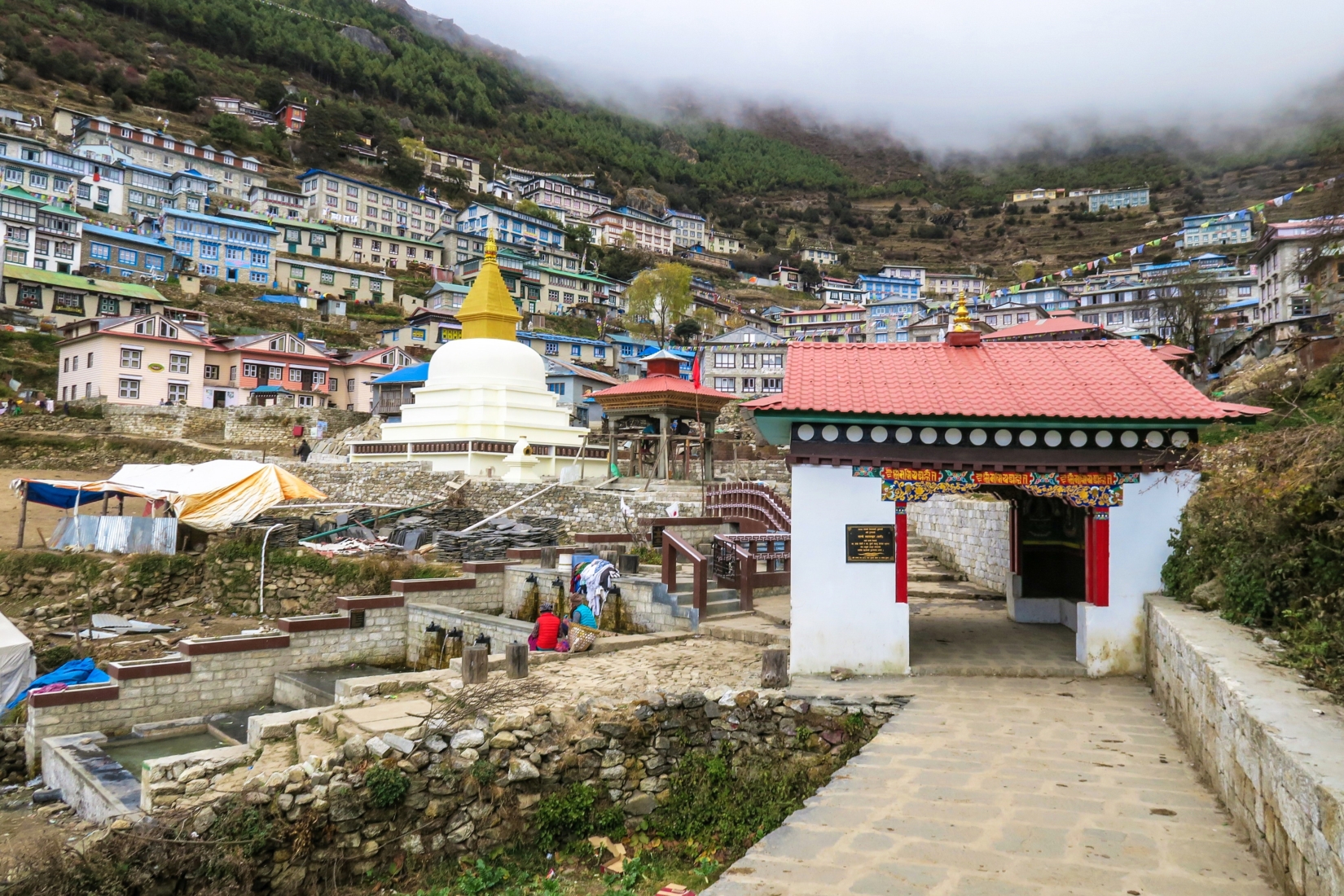
- Day 14: Namche Bazaar to Phakding (8,562 ft / 2,610 m) – As you continue downhill towards Phakding, observe the local agriculture and yak pastures as you pass by the majesty of the Himalayan peaks. You’ll spend the evening alongside the Dudh Kosi River, and take in the sights and sounds of the crystalline waters.
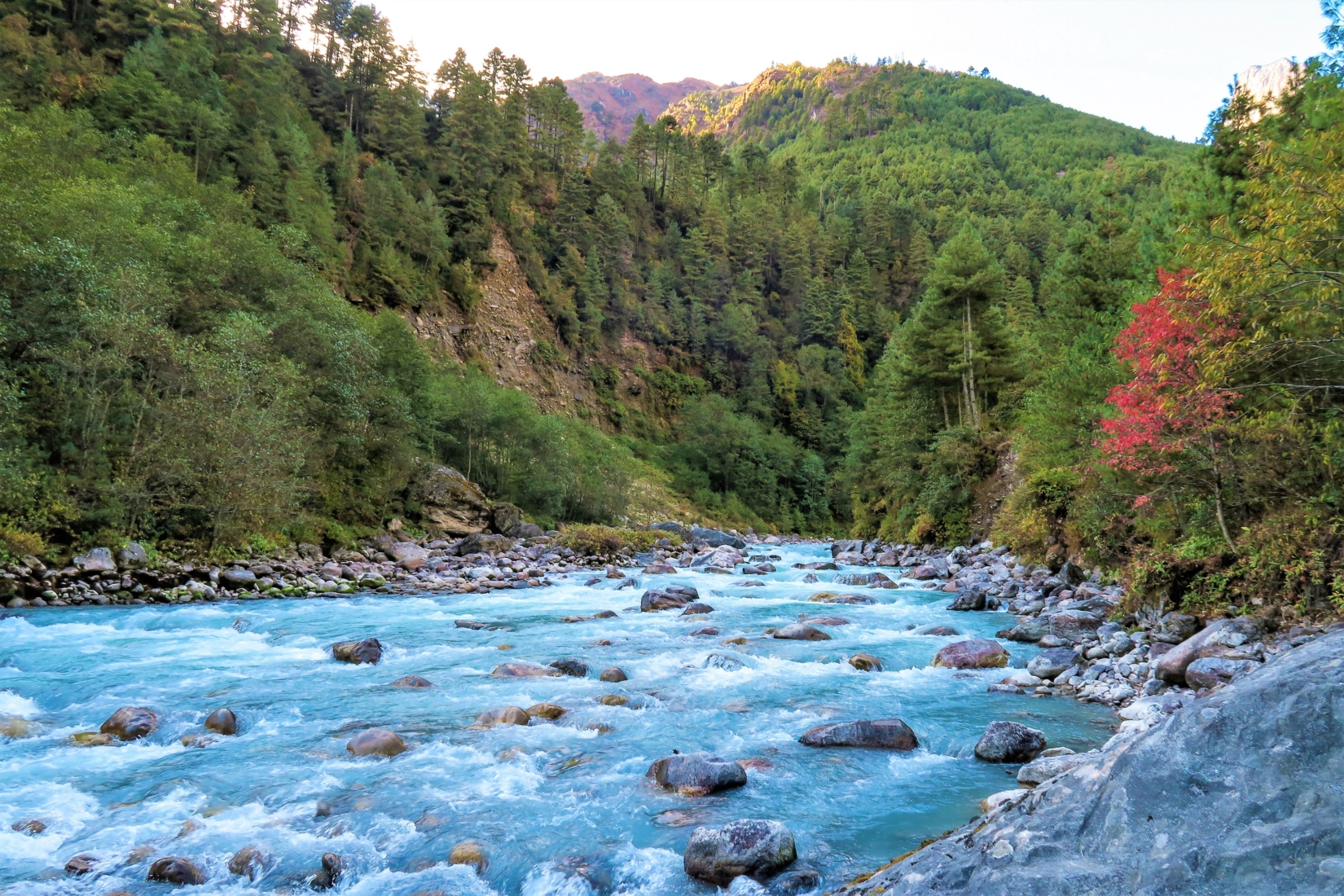
- Day 15: Phakding to Lukla – From Phakding, you’ll make our approach towards Lukla. Gather your new memories from the trip and enjoy your last days amongst unparalleled natural views in Nepal. You’ll stop for lunch in Lukla, with plenty of time to appreciate the clear landscape.
- Day 16: Lukla to Kathmandu – Returning to Kathmandu, you’ll have time and space to explore after having a chance to refresh and recuperate in your hotel. The Thamel district is a great place to wander with its many winding streets lined with souvenir shops, bars, restaurants, and more. There’s plenty to see and to try on the final day of your trip in Kathmandu. Soak up as much of the city’s offerings as you can as the end of our trip approaches.
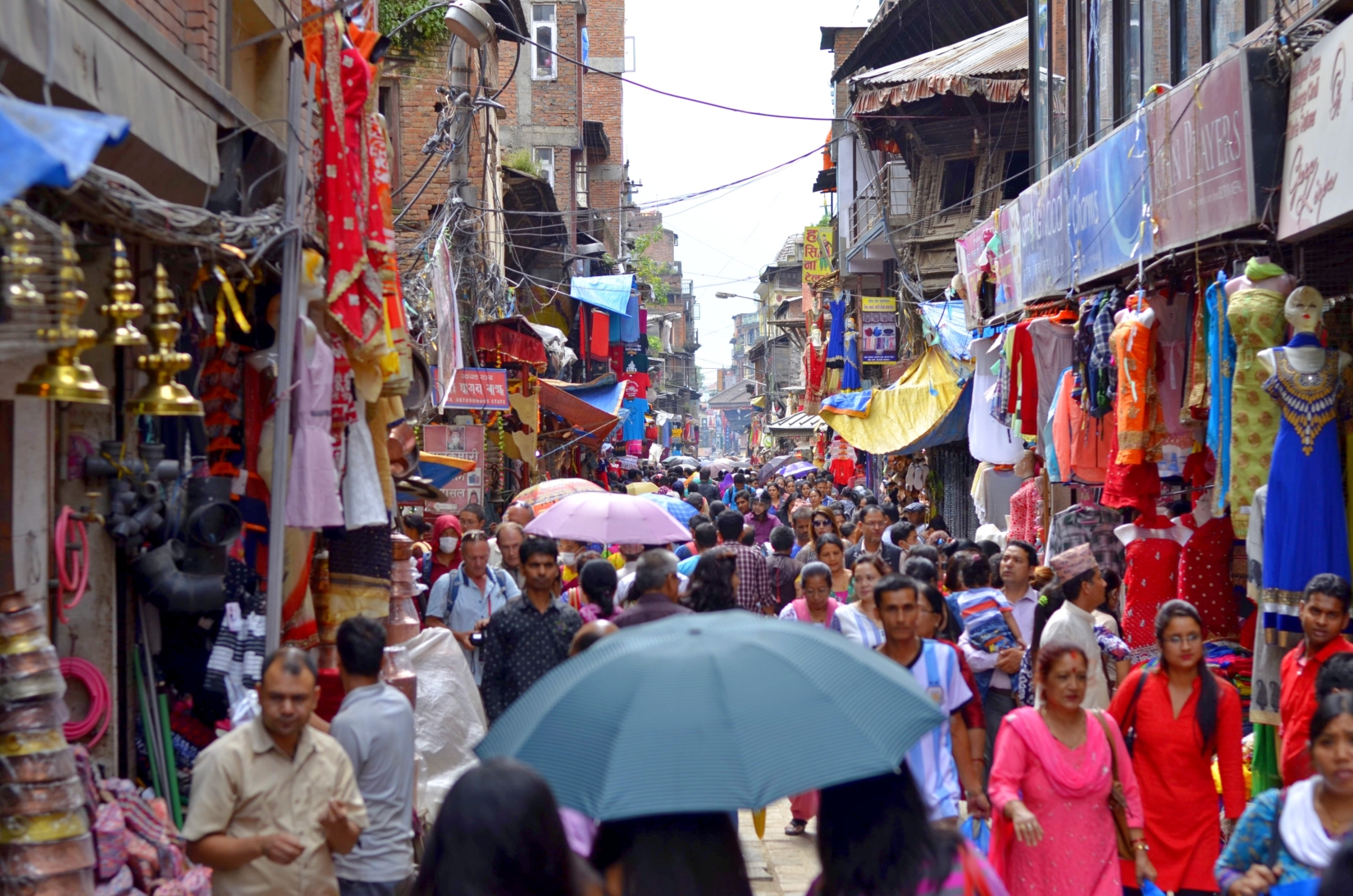
- Day 17: Today is your final day as an intrepid traveler exploring Nepal. You might have time to see some live music in Lazimpat or venture to Patan, which was originally known as Lalitpur, or the “City of Beauty”. Stop off at Newa Chen to add a visit to a 350-year-old Newari home, restored to its former glory and open to the public, to your trip. Be sure to experience as much of Kathmandu as you can, before you reluctantly head back home from this exhilarating adventure trip!
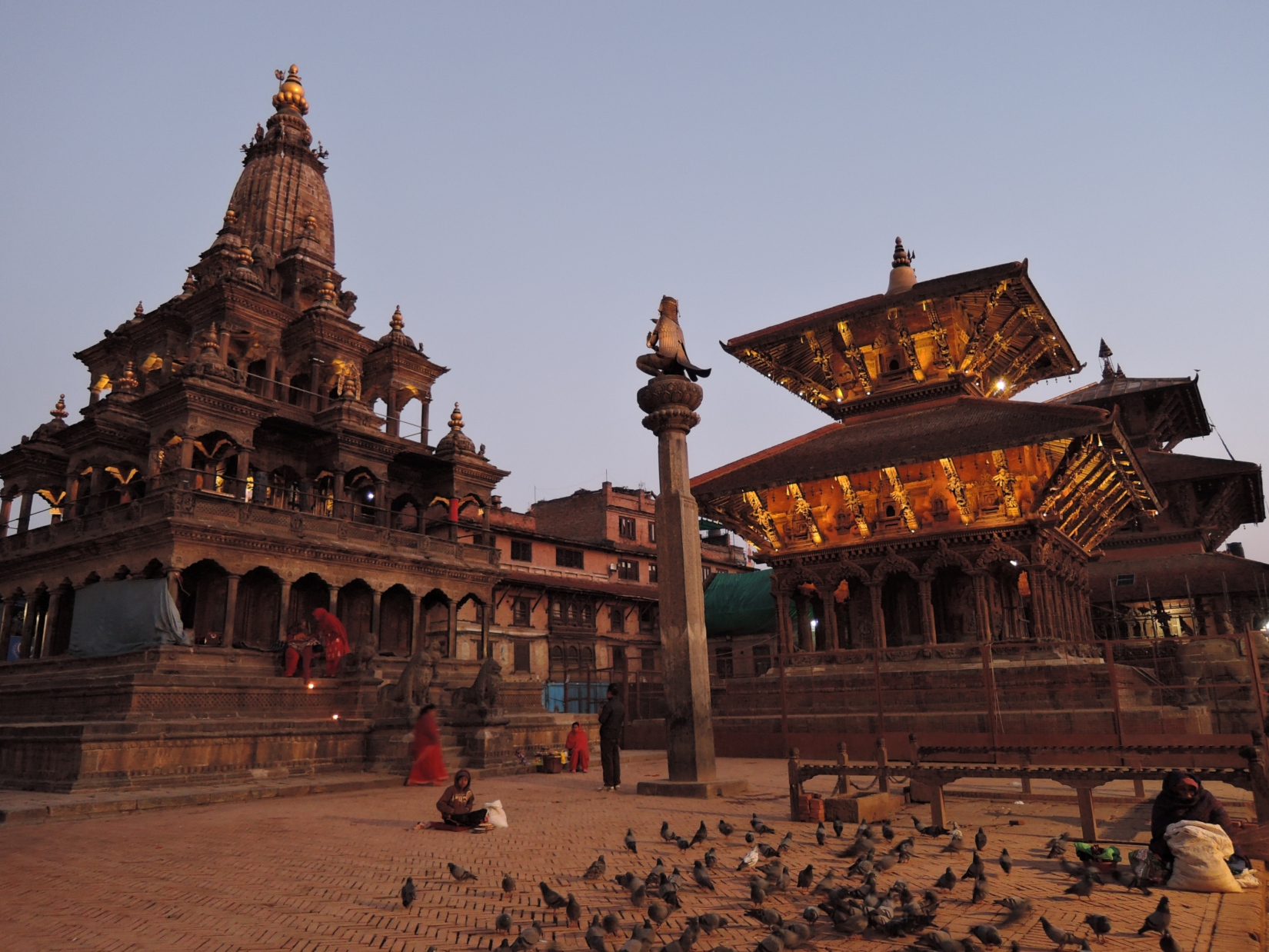
- Day 18: Depart from Kathmandu. Today you’ll return home having retraced many of Hillary and Norgay’s historic steps. You’re officially one of the lucky few who have witnessed the majesty of Everest up close!
Other Variations of the EBC Trek
The main up-and-back EBC Trek outlined above is by far the most popular route to the fabled camp on the slopes of Mount Everest, but there are also other options. Take the Three Passes Trek. It’s a circular romp that encompasses a trio of the highest traversable passes immediately around Everest itself, starting with Kongma La (18,175 feet) before pushing on through Cho La (17,782 feet) and then Renjo La (17,585 feet).
This is a considerably more challenging undertaking than the classic Everest Base Camp Trek, usually reserved for hikers with high-altitude experience. The reason? You spend multiple days walking at heights of over 16,400 feet. There’s also more chance you’ll have to contend with snowpacks – especially late and early in the main trekking seasons (April and November). The reward is a chance to explore all the nooks and crannies of the Khumbu Region, with visions of the gleaming Gokyo Lakes and remote Sherpa hill villages along the way.
Other variations include the dedicated Gokyo Lakes Trek, which involves portions of the Three Passes Trek at Cho La to offer a fuller visit of the Gokyo Valley before re-joining the route to base camp at Lobuche.
This trip guide is just a taste of what you should know before embarking on the remarkable trek to Everest Base Camp. For more details on general trip costs, accommodations, and more, check out the specifics on our Everest Base Camp tour page .
Better yet, if you have more questions on hiking to Everest Base Camp or need help planning your trip to the Himalayas, let’s connect! Our knowledgeable Adventure Consultants would love to hear from you so contact us and let us show you what’s possible .

Why travel with The Explorer’s Passage?
Experience the Everest Base Camp Trek with the best tour operator in Nepal. Our guides have been leading adventure trips in the Himalayas for over 30 years and are experts of trekking to Mount Everest Base Camp. They are also native to the Khumbu region of Nepal, the home of the Sherpa community, so you know you’ll enjoy an authentic experience.
We pride ourselves on delivering extraordinary tours based on travelers’ needs and are humbled by our guests’ testimonials . In fact, our dedication has earned us a 5-star rating on Tripadvisor , and awards by Travel+Leisure Magazine and Newsweek. Check us out and discover why so many travelers worldwide choose us . My team and I would love for you to join us on the trek to Everest Base Camp or any of our many other adventure trips !
I hope to go exploring with you soon!
Jeff Bonaldi Founder & CEO The Explorer’s Passage
About Jeff Bonaldi
Jeff Bonaldi is the Founder and CEO of The Explorer’s Passage, a premier adventure travel company. His mission is to provide travelers with the opportunity to transform their lives and the planet through the power of adventure.
Learn more about Jeff’s story and his company HERE .
Share This Amazing Location!
Related posts.
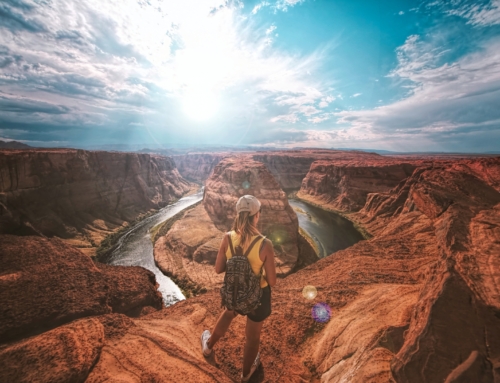
Expert Guide to Solo Travel & Top Destinations in 2024
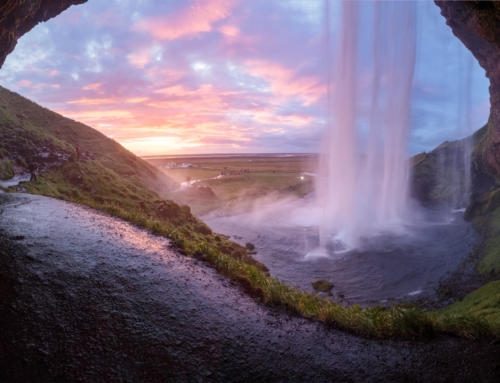
14 Best Places to Visit in Iceland in 2024
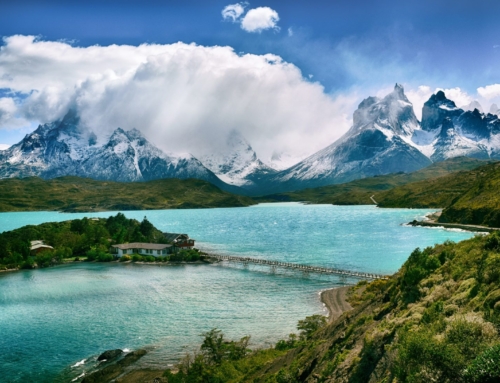
19 Things to Know Before Hiking the W Trek in Patagonia’s Torres del Paine in 2024

14 Things to Know Before You Climb Mount Kilimanjaro in 2024

The Ultimate Guide to Inca Trail Permits for 2024
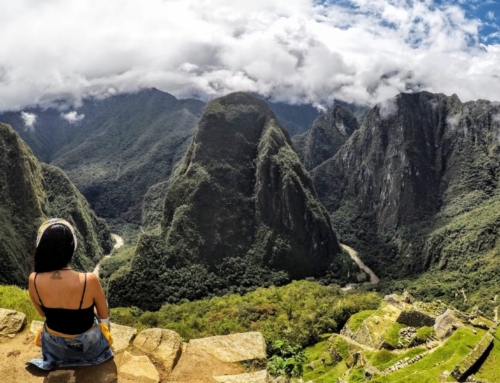
The Classic Inca Trail Route: A Day by Day Guide
- REI Accessibility Statement
- Skip to main content
- Skip to REI Uncommon Path categories
- My REI Find your store
- Open menu Close menu
How to Trek to Everest Base Camp
The Himalayas are the highest-reaching and most dramatic collection of peaks in the world. Shaped like a crescent, the range curls unremittingly for 1,550 miles from Afghanistan to China and cradles Mount Everest, the tallest point above the Earth’s surface, which stretches 29,029 feet into the sky.
In comparison, Everest Base Camp sits at an elevation of 17,600 feet, abutting the southern face of Everest. For two months each spring and fall (the most stable weather windows), expedition teams that are pursuing Everest’s summit construct an anchorage of colorful tents atop the moraine at the mouth of Khumbu Glacier—a towering labyrinth of ever-shifting ice. The heap of granite and limestone rocks becomes a haven for 400-plus climbers to sort their gear, rest, acclimatize and seek shelter from bouts of weather.
Dwarfed by jagged ridgelines, Everest Base Camp is also a pinnacle for trekkers, where they can revel in the overwhelming vista and the culmination of their human-powered journey. So if you’re diving into planning your trek to Everest Base Camp, this guide will cover:
Why Visit Everest Base Camp?
Top things to do while trekking to everest base camp, top things to do in kathmandu, how to get to everest base camp, planning your trip.
- How to Prepare for Everest
“Everest is in the DNA of the Co-op,” says Jeff Stivers, of REI. “The journey to Everest Base Camp has the power to transform one’s mind, body and spirit. Through the humility and care of our expert Sherpa guides, this fully supported trip will inspire you for the rest of your life.”
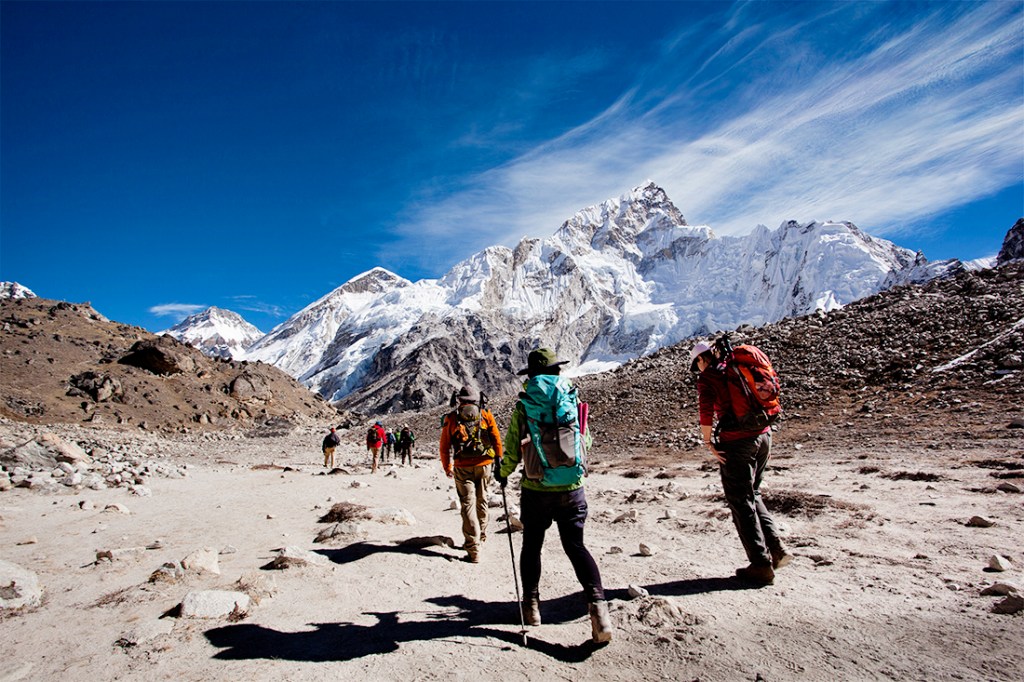
Nuptse and Lhotse rise up to meet a hiking group as they near Everest Base Camp.
Remote and exposed, the Himalayas are home to the highest peaks on Earth. Throughout the starkly beautiful landscape, Sherpa villages are adorned with teahouses, prayer flags and wheels, chortens (pagoda-style structures), and painted mani stones.
You’ll find that the local Sherpa people—rooted in Tibetan Buddhism—have a spiritual reverence for the mountains and forest, preserve their traditional monasteries, and practice a peaceful coexistence with the land. But beyond the ancient customs, the unparalleled kindness of the Nepalese people is reason enough for thousands of trekkers to venture each year through this UNESCO World Heritage site toward Everest’s piercing silhouette.
The majority of the classic trek ascends through Sagarmatha National Park , which became a UNESCO World Heritage site in 1979. For 443 square miles, the reserve stretches northbound across Nepal’s Khumbu region until it reaches and surrounds Mount Everest. Sagarmatha’s protected landscape supports rare animal species such as the snow leopard and red panda, features six diverse vegetation zones, and holds glacial-fed rivers. To the northwest, Ngozumpa Glacier—the longest ice flow in Nepal—feeds the Gokyo lakes: six piercingly blue bodies of water that are the highest-elevation freshwater lakes in the world.
The journey to Everest Base Camp continues to grow in popularity with more than 75,000 trekkers exploring the Nepal Himalayas and 45,000 visitors entering Sagarmatha National Park in a given year. Rightfully so. The mix of exquisite topography, cross-cultural connection and available resources makes Everest Base Camp one of the most enriching treks on the planet.
Note: While all trekkers share the trails and teahouses in the Everest Base Camp area, most trekkers do not visit the climbing camp out of respect for the health and privacy of climbers.
Kala Patthar
This could be the best possible spot to watch a sunset shift light on the spire of Everest: from the soaring height of Kala Patthar, a ridge that sits due west of Everest and reaches an elevation of 18,510 feet. Hugging the base of the giant peak is Gorakshep, a small village that lies at 16,865 feet. After scoping out Khumbu Glacier, hikers can continue uphill to the settlement of Gorakshep, followed by the Kala Patthar climb.
In total, the round-trip excursion from Gorakshep to Kala Patthar (which means black rock in Nepali) is two miles with an elevation gain/loss of 1,645 feet—it’s steep. From the perch, travelers can see the brilliant cluster of tents at Everest Base Camp, as well as a panorama of Lhotse, Changtse and Nuptse peaks.
Pangboche Monastery
Constructed 350 years ago, Pangboche is the oldest monastery in the Everest region. Adorned in bright red paint, the Gompa (religious building) stands out among the terraces, which cradle the traditional light-toned homes and fields of its namesake village. The community gazes up at the immense, bright-white faces of the Himalayas.
After hikers leave the rhododendron forest and village of Phortse, they gradually make a 400-foot ascent to Pangboche. Overseen by a single monk, the ancient monastery is also the last permanent settlement located at the altitude of 12,795 feet along the trek to Mount Everest.
Himalayan Rescue Association
More than 40 years ago, the Himalayan Rescue Association of Nepal was established to help support the health and safety of climbers, trekkers and locals in the remote reaches of the Himalayas. The first-ever aid post launched in the village of Pheriche, at 14,600 feet in elevation. Pheriche’s clinic still thrives today and is recognized as the highest-elevation health facility in the world.

A group of hikers around Thokla Pass.
When you arrive in Pheriche, ask your teahouse host or the aid-post volunteers about the clinic’s daily presentations on altitude sickness and other travel-related illnesses. The talks are usually free to the public, interesting and informative and offer real-time data. Plus, you’ll get to meet other trekkers from around the globe.
Gokyo Lakes
The Gokyo Lakes are considered sacred to both Hindus and Buddhists. The centerpiece in a grouping of six lakes, Gokyo Lake is held in a magnificent crease between Gokyo Peak ( also called, Gokyo Ri) and its life source: Ngozumpa Glacier, a 12.4-mile ice block and the longest glacier in Nepal.
A handful of hotels (around $14-$30 US per night) sit on the lateral moraine wall, which looks like a sharp spine that creates a border between Gokyo Lake and Ngozumpa. Alpine tundra with juniper shrubs and rhododendrons lead to the silty-clay water, which appears intensely teal against the quartz- and gneiss-speckled basin. Located at 15,583 feet in elevation, Gokyo Lake and its surrounding chain of pools are believed to be the highest collection of freshwater lakes in the world.
The first portion of the trek to reach Gokyo Lakes follows the same route for Everest Base Camp, so hikers can add a visit to Gokyo Lakes to their approach to Everest Base Camp, or their return. After reaching these Himalayan pearls, hikers can opt to ascend Gokyo Peak, which stands 17,575 feet above sea level and offers an earth-shattering glimpse of four of the six highest mountains in the world: Everest, Lhotse, Makalu and Cho Oyu.
Nangkar Tshang
In the village of Pheriche, trekkers can opt for a fulfilling push up to Nangkar Tshang Peak (also known as Nangkartshang Peak), a viewpoint that nears 16,700 feet above sea level. The hike is one of the most stunning experiences of the Everest Base Camp trek. Following a 2,100-foot climb, trekkers pass cliffside sacred sites to reach the sub-peak and are rewarded with a show of Lhotse, Makalu and Cho Oyu: three of the six highest peaks in the world. Between two nights in Pheriche, trekkers often weave this hike into their acclimatization day.
Kathmandu is Nepal’s capital city in a hilly region on the edge of the Bhairav Kund Range. Founded in 723 AD, Kathmandu (which means, wooden temple ) is a living museum brimming with Hindu and Buddhist religious sites, Newa architecture, stupas and traditional ceremonies. As the country’s largest metropolis and the primary gateway for travelers who are heading to the Himalayas, tourist-friendly accommodations and restaurants line the streets. The markets, narrow alleyways and roads of Kathmandu bustle with rickshaws, foot traffic and cars.
Tip: If you tend to catch travelers’ bugs, include a couple of extra travel days in Nepal post-trek.
Within the fast vibe, though, you’ll notice slow moments of warm hospitality extended from the Nepali locals, who practice a cultural value known as Atithi Devo Bhava , meaning, guests are equivalent to deities. There’s so much history and culture to explore in this city that it’s worth at least a couple of extra days. Prior to heading to the Himalayas, many trekkers plan on spending at least one day in Kathmandu to pick up any last-minute gear and permits.
Earthquake update: The April 2015 earthquake devastated Nepal , and the country suffered its worst loss of heritage since the earthquake of 1934. A total of 2,900 structures with cultural and religious significance were affected, including 691 historic buildings—of which, 131 were completely destroyed. In response, a union of archaeological experts and the Government of Nepal immediately launched a post-disaster plan to recover and reconstruct the damaged heritage sites within six years, by 2020.
To safeguard collections of artifacts, museums are using the aftermath as an opportunity to create digital inventories. New buildings will be retrofitted with seismic solutions. In some cases, extensive restoration work is necessary to re-create the original grandeur of immaculate sites. Yet, many palace buildings and temples also survived the tremor with only minor harm. Ultimately, Nepal’s recovery is well underway and many cultural sites have reopened.
For more information, read about REI’s mission to build an earthquake relief center in Namche Bazaar immediately after the disaster.
Swayambhu is a UNESCO World Heritage site and the oldest Buddhist monument, a stupa, in Kathmandu Valley. Also known as Swayambhunath and Monkey Temple, the site is considered to be one of the country’s holiest Chaityas (prayer halls). The intimidating stupa is surrounded by a maze of shrines, statues, prayer wheels and monasteries that all stand together at the top of steep stairs built into a hillock that overlooks the entire city.
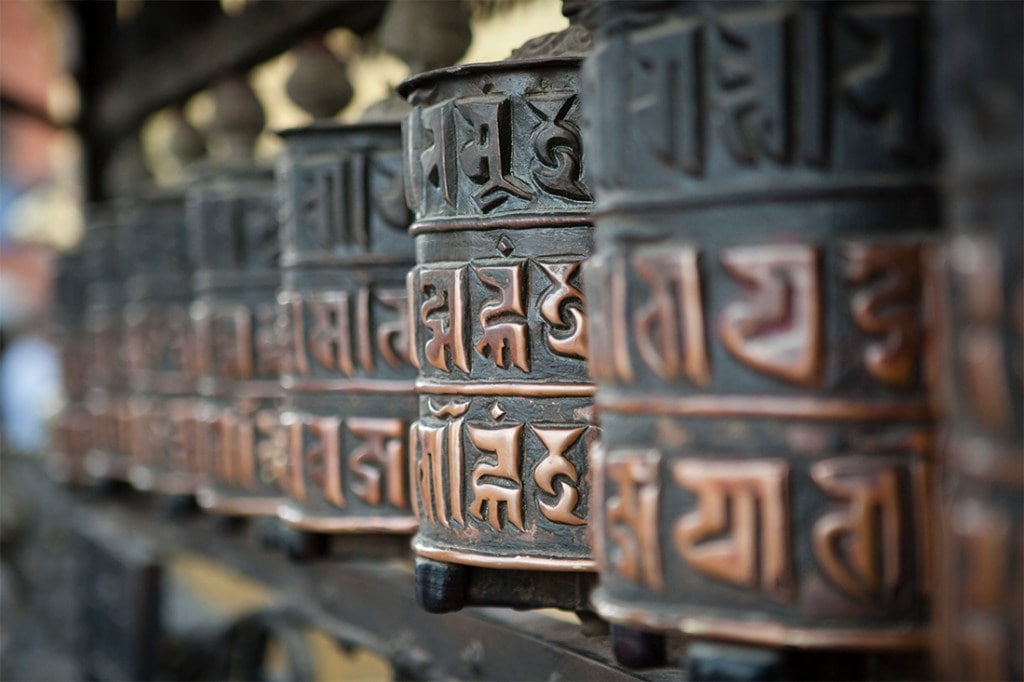
Prayer wheels are a common sight in Kathmandu and on the trek to Everest Base Camp. In Tibetan Buddhism, the wheels aid in expressions of devotion when spun clockwise by hand.
Legends say that Kathmandu valley was once filled with water, and the hill where Swayambhu stands was an island where a crystal stupa was placed. Eventually, a Buddhist monk drained the lake, so that anyone could visit the stupa and be liberated when the wind that blows around the structure touches them: Swayambhu literally means self-manifested. Today, the stupa is intended to represent Buddha’s teachings and to provide peace, freedom and joy.
Note: Entry fee required
Thamel is the buzzing tourist epicenter of Kathmandu. Many travelers catch a ride from the airport to this frenetic hub of crisscrossed streets, where accommodations, restaurants and shops are all within a short walk of each other. The density of storefronts also includes tour agents, mountain guides and outdoor stores—where you can grab any layers or gear you may have left back home.
Durbar Square
Kathmandu’s Durbar Square is a UNESCO World Heritage site and is in the heart of the city. Durbar, meaning palace, is historically significant as a site of royal coronation. Today, the palaces, temples and public gathering spaces are still relished as a place to connect and reflect.
The majority of the square dates back to the 17th and 18th centuries—or even older—and came during a period of architectural evolution. Buddhism and Hinduism were flourishing throughout Asia, which strongly influenced the artistry and intricate ornamentation of the structures created during that era.
Pashupatinath
Pashupatinath was built in the 5th century and is considered to be one of the most important religious sites in Asia. The designated UNESCO World Heritage site features an enormous collection of significant antiquities including close to 492 temples, 15 shrines, and 12 phallic shrines. Situated northwest of Kathmandu, the complex sits along the banks of the Bagmati River. Pashupatinath is both a treasury for the past and a stage for the future where visitors can observe Hindus practicing their daily religious, spiritual and cultural rituals.
Tibetan Refugee Carpet Center
The Jawalakhel Handicraft Center was established by Tibetan refugees who fled from the Chinese invasion to seek asylum in 1959. Several organizations including the Committee of the Red Cross provided aid to help this community of skilled carpet weavers launch the center, which is also known as the Tibetan Refugee Camp. Beyond the hundreds of employees, the center is home to more than 1,000 Tibetans and is recognized as the pioneer of Nepal’s Tibetan carpet industry. Visitors can observe each stage of carpet production from wool sorting and hand-brushing to dyeing, trimming and yarn spinning.
Beyond the classic Everest Base Camp trek, there are a handful of trail variations that can add mileage to your standard route, extend your time on foot, and show you even more historic sites, natural landmarks and vistas along the way. After you land in Nepal, you’ll also have at least a half-day to discover the outstanding monuments in Kathmandu Valley .
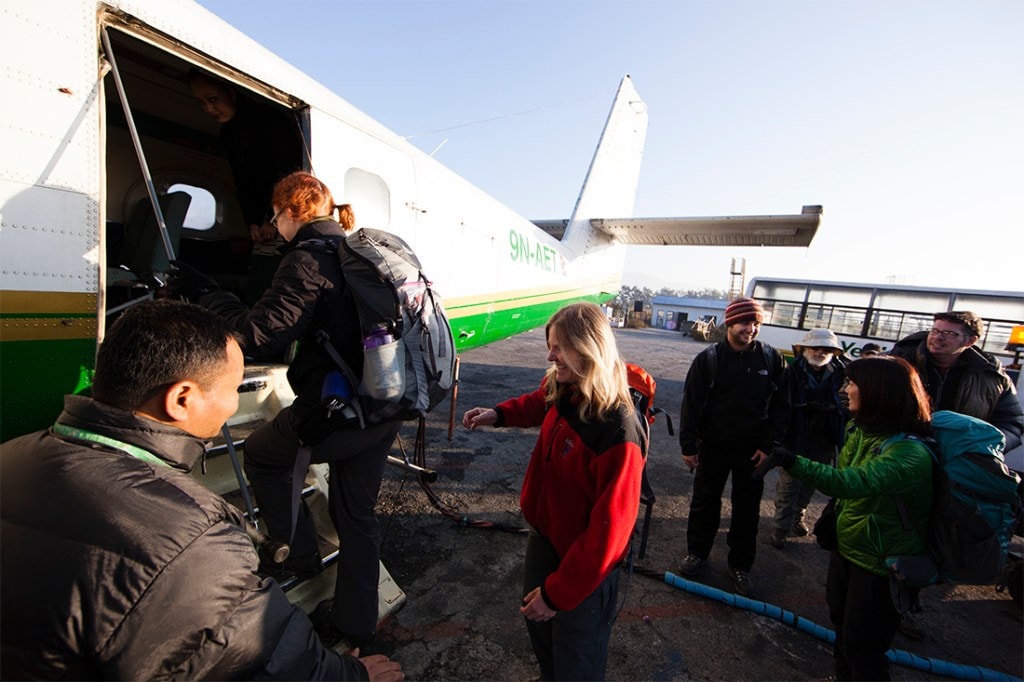
Air travel is a common means of access for hikers starting and ending the Everest Base Camp trek. Here, a tour group boards a flight at Tribhuvan International Airport in Kathmandu.
Fly into Kathmandu, Nepal
In eastern Nepal, Kathmandu is the country’s capital city and typically the first touchdown point for international travelers. If you’re not trekking with an organized group that will take care of your permits in advance, it’s helpful to plan on spending at least one day in Kathmandu after you land, so that you can rest and sort out logistics. If your schedule allows, the city is worth enjoying for a couple of days after you finish the Everest Base Camp trek.
Fly to Lukla, Nepal
Most people fly east from Kathmandu to Lukla, which is where the Everest Base Camp trek begins high on a mountain slope in the Khumbu region of the Himalayas. Some travelers land in the morning and start the trek the same day.
Travel to Jiri by Bus
Prior to the establishment of Lukla airport, trekkers used to start the Everest Base Camp trek in Jiri, Nepal. As the crow flies, Jiri is about 30 miles west of Lukla. Trekkers who want to experience this old-school iteration of the trek can take a scenic seven-hour-long bus ride through the countryside, from Kathmandu to Jiri, where the extended hike begins. When trekkers start in Jiri, they need about six to seven extra days to hike to Lukla. When they reach the village of Surkhe, they can also choose to veer north to Chaurikharka village and intercept the Everest Base Camp trek between Lukla and Phakding.
Trekking into Everest Base Camp
Pencil a few extra days into your travel plan so that you have the flexibility to be spontaneous and opt for side excursions if you choose. Having buffer days on your schedule can also help if you happen to experience any weather or flight delays, ailments or want to slow down the hiking pace. No matter how many days you spend trekking, you can’t go wrong.
Guides and porters are not required for the Everest Base Camp trek. But choosing a professionally predesigned trip can be a tremendous help for travelers who are new to Nepal, don’t have time to plan their own trek or simply love group travel. Some trekkers choose to hire porters—and no guide—so that they can travel each day with a lighter pack.
Most Everest Base Camp itineraries typically range from 17 to 20 days, which include a reasonable amount of time for rest and altitude adjustment in Kathmandu and in the high mountains. It’s also possible to complete the mileage in 14 days sans time for acclimatization. The effects felt by altitude are very personal and depend on each person.
Top Everest Base Camp Treks
The South Base Camp Trek in Nepal
The classic Everest Base Camp trek starts in Lukla and weaves through a handful of picturesque villages, which are painted in tones that stand out richly against the landscape—including Phakding, Namche Bazaar, Tengboche, Pheriche and Gorakshep—before reaching Everest Base Camp. The trek follows a network of trails and is adaptable, meaning hikers can visit other remote mountain villages and minor peaks along the way.
Overall, the classic trek is more or less an out-and-back with a gradual ascent into the Himalayas followed by a descent back to Lukla. The cumulative mileage and elevation varies greatly depending on which towns and summits you choose to link together. An average total distance ranges from 75 to 90 miles with 17,500 feet of vertical gain and loss.
The North Base Camp Trek in Tibet
On the north side of Mount Everest is a second base camp, tucked between the sweeping plateaus and mountains of the Tibet Autonomous Region of China , also known as the roof of the world. Much like the Himalayan communities of Nepal, this mountainous region is chock-full of spiritual monasteries, high-altitude monoliths and kind reception.
Before trekkers can enter this area they need to apply for a Chinese visa . Then, they need to apply for a Tibet Entry Permit, which is issued by the Tibet Tourism Bureau and is only obtainable through qualified travel agencies. Once trekkers fly from Kathmandu to Lhasa, they apply for the Aliens’ Travel Permit.
Note: Obtaining a Chinese visa can be a time-consuming process, so it might be a good idea to allocate extra time (3-4 days) for this leg of the journey.
Group Travel
Given that Nepal is a nerve center for experiencing the Himalayas, people from all around the world find what they need in Kathmandu and the surrounding villages for a successful, safe trip. The benefit of choosing a well-trodden path, rather than a lesser-known or undiscovered place, is that the adventure travel industry is up-and-running, which helps to support visitors and locals along the way.
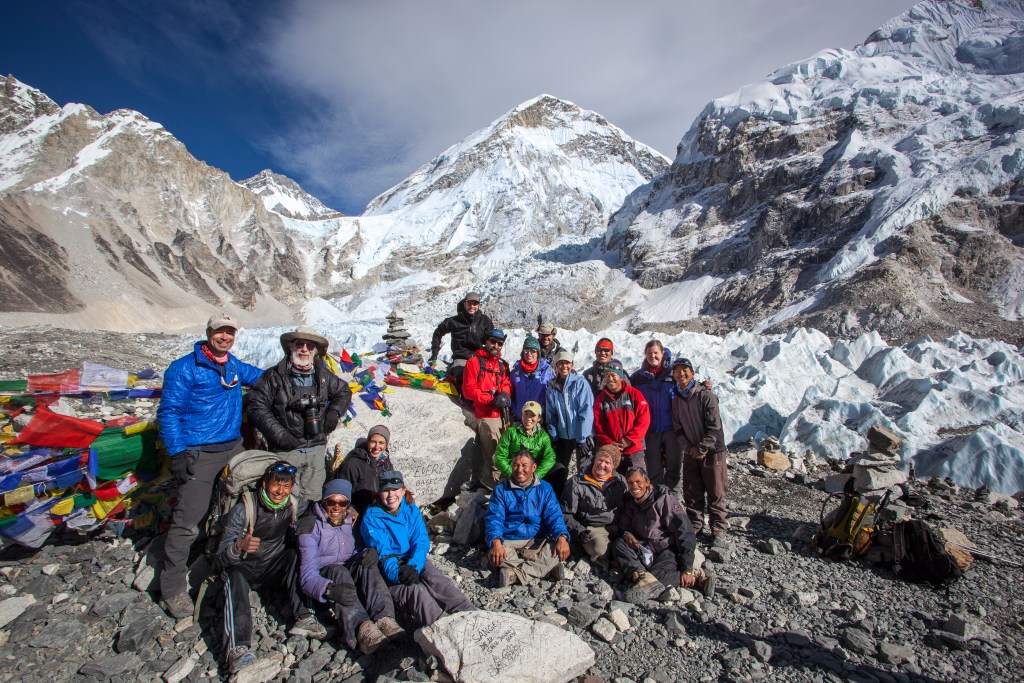
It’s possible to hike to Everest Base Camp without a group, but having a support team can make the trip relatively less challenging.
And since you’ll be hiking such a popular circuit, you’ll most likely see and meet other trekkers along the way who can become comrades on the trail or a potential soundboard if questions pop up. In each community, the teahouses are readily apparent and offer a place to dine and sleep overnight. Some even have hot water for a shower.
There are many benefits to joining a group trip. If you don’t have time to plan and organize your Himalayan trek, this is a streamlined, easy way to ensure that you minimize stress and maximize your enjoyment from preparation to finish.
Coordinated trips typically arrange the permits, guides, porters, accommodations and food on their trekkers’ behalf. Working with a single company provides a support system for questions you’ll have prior to landing in Nepal. Plus, walking and chatting with a guide each day can provide cultural insight and historic background, which helps to deepen the experience.
Best Time to Visit Everest Base Camp
The best time of year to trek in the Himalayas of Nepal is March through May, and again in the fall, from September to November. In the spring (March and April), the rhododendrons bloom along the trails. After the spring season, the monsoon season picks up, and you can expect daily rain from June through September.
As a whole, October is the month with the largest number of trekkers in Nepal, followed by April and March. The highest visitation of international travelers to Sagarmatha National Park is also in October and November, followed by April, May and March.
The foremost climb period for summiting Mount Everest is April and May. So, if you’re excited to have the chance to meet mountaineers and observe the vibrant tent capital at the base of Everest, spring is the prime opportunity.
By October, there is less chance of mud on the trails following the summer monsoons. Plus, the air is particularly transparent with fewer clouds and heat haze, which means the outline of the surrounding peaks are even sharper. However, there’s always a chance of weather in the mountains and at high altitude: Snow can potentially dust the ground at any time of year, so be prepared for cold temperatures, no matter the season.
Everest Base Camp Permits
If you choose to travel solo and decline to have a tour operator manage your entrance tickets and permits, make sure to reserve your own. Current regulations (which are subject to change) is that Sagarmatha National Park requires an entry fee (3,000 Nepalese rupees, which is about $26 US), that can be paid at the Tourist Service Center located at Bhrikutimandap, Kathmandu.
Note: Bring extra rupees for any additional tax that could be included.
Trekkers also need to attain a Trekkers’ Information Management Systems (TIMS) Card (1,000 Nepalese Rupees per person in a group; 2,000 Nepalese Rupees for solo hikers; at print, 1,000 Nepalese Rupees is equal to $8.87 US), which can be picked up at the same Tourist Service Center. The TIMS counter office hours are from 10am to 5pm, seven days a week. The counter remains open on Saturdays and public holidays, too.
Travelers often plan to spend at least one day in Kathmandu prior to the day they fly to Lukla, so there’s time to square away these two permits before starting the trek. If you want to explore extra trails or peaks during your Everest Base Camp trek, be sure to confirm with the Tourist Service Center if you need to purchase additional permits for public land-use access, such as the Gaurishankar Conservation Area Permit or the Solukhumbu trekking permit.
How to Prepare
Getting in Shape
Treks in the Himalayas and to Everest Base Camp inherently follow rugged, sun-kissed trails that zigzag to very high altitudes: The majority of Sagarmatha National Park is barren and reaches higher than 16,000 feet above sea level. The colossal scale of the mountains and the region’s remoteness requires travelers to hike back-to-back days on foot while carrying a loaded backpack. Even athletic and fit travelers will benefit from preparing their body for walking in the mountains.
Packing the right gear is extremely important. Choose a sturdy set of hiking shoes or boots that are broken in , supportive enough for multiday use and that protect your feet from the rocky terrain. Practice walking on unstable trails that simulate the conditions of the trek. Start with a one-hour hike and gradually build stamina by increasing your time on foot until you can comfortably complete a six-hour day. In a given week, take a rest day after a few days of endurance work. As you train for your Himalayan trek , it might be natural to focus on the climb up—but don’t forget to prepare your body for the returning descent. Everest Base Camp is located at a much higher elevation than the start of the trek. Furthermore, in following the standard route, a hiker accumulates close to 17,500 feet of vertical gain and loss.
Altitude Acclimation
Everest Base Camp is perched at a very high altitude of 17,598 feet, and is surrounded by Himalayan peaks that reach even more extreme altitudes. Travelers can add excursions to even higher elevations, such as Kala Patthar peak, which offers a stunning snapshot of Everest from an elevation of 18,510 feet. But all trekkers begin their journey much lower: The most common port of entry in Nepal for travelers is Kathmandu, which sits at 4,593 feet above sea level. Lukla—where the trek to Everest Base Camp starts—rests at 9,383 feet in elevation.
Given the altitude of Everest Base Camp, historically, some hikers have experienced acute mountain sickness (AMS). AMS “is caused by reduced air pressure and lower oxygen levels at high altitudes,” according to the U.S. National Library of Medicine . Ascending quickly or not allowing for time to acclimatize can increase the risk for AMS.
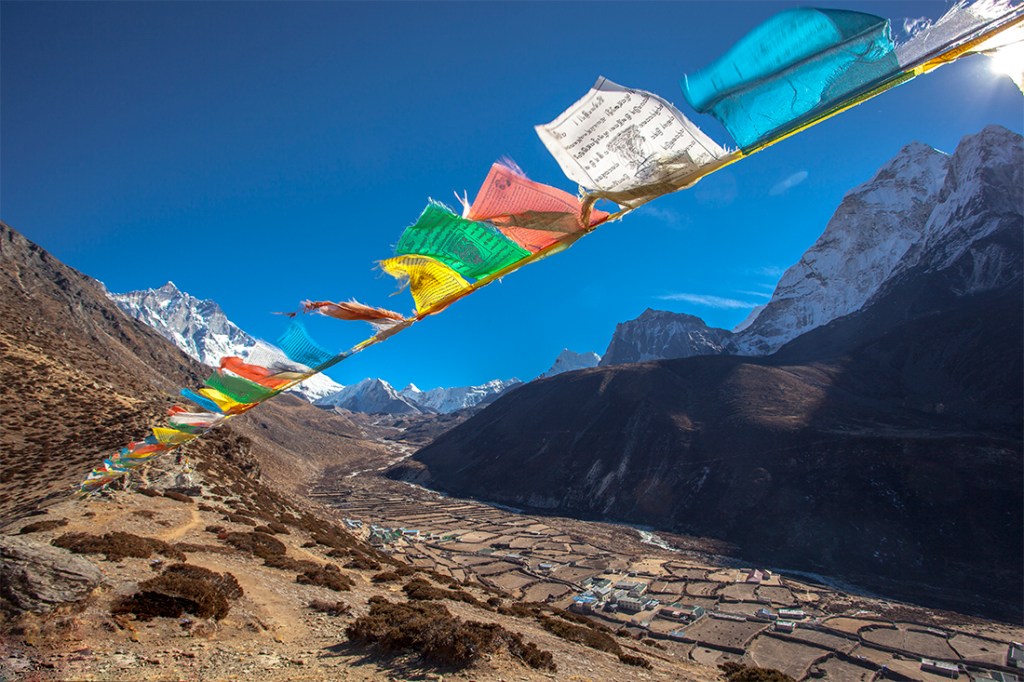
The Sherpa village of Dingboche is a popular place for trekkers to rest and acclimate.
In order to help prevent symptoms related to altitude, Princeton University’s Outdoor Action Guide to High Altitude recommends that hikers venturing above 10,000 feet should thereafter limit their increase in elevation to 1,000 feet per day. Hikers can also add one rest day for every three days of ascent. And if hikers do climb more than 1,000 feet in a day, they can always backtrack and sleep at a lower elevation if symptoms arise.
Guided trips often include days for rest and acclimation in Kathmandu and Lukla, as well as during the trek in high and very high altitude locations such as Namche Bazaar (11,286 feet), Dingboche (14,468 feet) or Pheriche (14,600 feet). For hikers who choose a longer expedition via Gokyo Lakes or Cho La Pass, another village where they can stop and acclimate is Machhermo (14,665 feet).
But no matter which itinerary you choose, Princeton’s OA Guide to High Altitude suggests staying hydrated, limiting alcohol consumption and avoiding sleeping pills. If you begin to feel symptoms—like a mix of a severe headache, nausea and weakness—consider staying put or descending to a lower altitude so that your body has a greater opportunity to adapt. (Disclaimer: REI Co-op Journal does not replace the guidance of a medical professional. Please seek direct advice from your personal health care provider regarding the altitude preparation, training, protocol and medication that is best for you.)
- Tailor Made
Find Your Adventure .
Small Groups. Big Adventures.

Why choose the Adventure People
Monthly payments.
Spread the costs with no interest or additional fees
Best Price Guarantee
We'll beat the price if you find the same adventure cheaper
Reserve now & pay later
Reserve your adventure today and pay later, free of charge
ATOL protected
Book with confidence
Where will you go?
Explore popular tours.
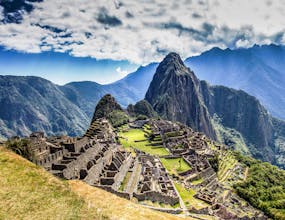
The Inca Trail & Machu
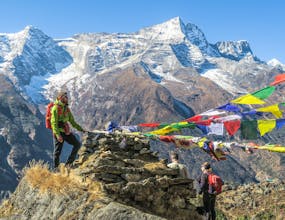
Everest Base Camp
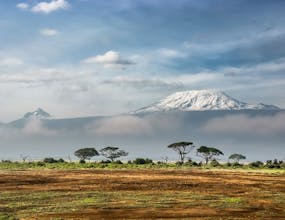
Kilimanjaro
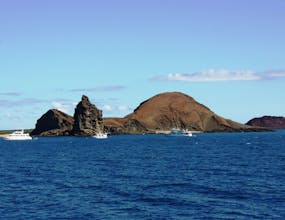
The Galapagos
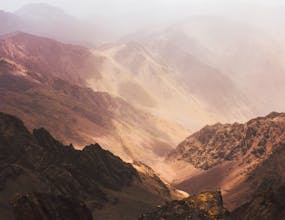
Mount Toubkal
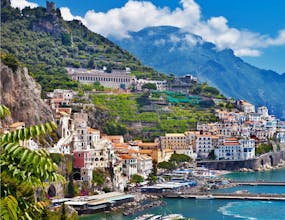
Walking the Amalfi Coast
Popular destinations.
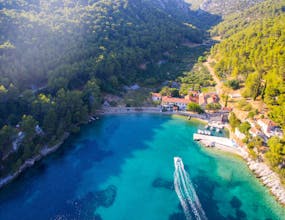
Meet our People
Call or email our expert team to find out more and help with ideas and planning.

Build your Adventures
Our Tailor Made tours and holidays are crafted by you and for you, with the invaluable assistance of our expert team
Frequently asked questions
Why book with the adventure people.
Looking for an adventure-filled holiday? Look no further than The Adventure People! We specialise in crafting the ultimate adventure holiday experiences that will leave you with memories to last a lifetime.
Our team of experienced adventure guides will take you off the beaten path and into the heart of the action. Whether you're into hiking, cycling, rock climbing, kayaking, or any other adventure activity, we've got you covered. Our multiday tours and experiences will immerse you in nature, challenge you physically, and awaken your sense of adventure.
Embark on a trek through the Himalayas, summit a volcano in Indonesia, kayak along the stunning coastline of Croatia, or cycle through the picturesque countryside of Tuscany. Our adventure holidays will take you to some of the most breathtaking destinations on the planet, each with its own unique flavor and challenges.
At The Adventure People, we're committed to sustainable and responsible travel. We believe in leaving a positive impact on the communities and environments we visit, and our tours reflect that commitment. We work with local guides and small businesses, use eco-friendly modes of transportation, and leave no trace behind.
So what are you waiting for? It's time to step out of your comfort zone and embark on the adventure of a lifetime. Contact us today to learn more about our adventure holiday options and to start planning your next big adventure!
Benefits of booking with The Adventure People!
Top 10 reasons to book with us:
1. You'll receive the best service available.
2. You'll have access to your own personal travel expert.
3. You're financially protected through various means:
a) ABTA membership
b) ATOL certification
c) Strong English consumer protection and trading law
4. You can book your flights with us.
5. You can book your accommodation and transfers with us.
6. We can build a bespoke tailor made holiday for you.
7. We're one of the leading travel companies in the UK ( see our reviews!)
8. We have amazing choice
9. We won't be beaten on price or value.
10. With your help we're supporting local communities.
What is an adventure holiday?
What is an Adventure Holiday?
An adventure holiday is more than just a getaway; it's an adrenaline-pumping, heart-pounding escape from the ordinary. It's about pushing your limits, discovering hidden gems, and creating memories that will last a lifetime.
Imagine hiking through pristine wilderness, cycling along breath-taking coastal routes, or embarking on thrilling water-based escapades. Whether you're a seasoned adventurer or a first-time explorer, we've got the perfect adventure waiting for you.
Why Choose an Adventure Holiday?
Adventure holidays offer an unparalleled opportunity to:
Reconnect with Nature: Get up close and personal with the world's most stunning landscapes, from majestic mountains to lush rainforests.
Challenge Yourself: Push your boundaries and conquer new feats, fostering personal growth and self-discovery.
Escape the Ordinary: Say goodbye to routine and hello to excitement as you embark on unique experiences and cultural encounters.
Create Lasting Memories: Forge unforgettable memories with like-minded travellers who share your passion for adventure.
Our Adventure Holiday Offerings
At The Adventure People, we have carefully curated a range of adventure holiday packages to cater to all preferences and levels of experience. Choose from a variety of thrilling activities, including hiking, cycling, water sports, wildlife safaris, and much more.
We partner with expert guides and adventure specialists to ensure your safety and satisfaction throughout your journey. From picturesque hikes in the Alps to thrilling water rafting in the Amazon, we've got you covered.
Book Your Adventure Today
Don't miss out on the adventure of a lifetime. Let us help you plan your next adrenaline-packed vacation. Contact us now to start your adventure holiday journey. Your extraordinary adventure awaits!
Ready to take the plunge? Contact us today to begin your adventure of a lifetime!
What are the most popular adventures?
There are many types of adventure holiday but here we list the top 10 over the past 12 months:
1. Everest Base Camp
2. Inca Trail & Machu Picchu
3. Kilimanjaro Trek
4. Exploring the Galapagos
5. Northern Lights
6. Mount Toubkal (Morocco) Trek
7. Walk The Amalfi Coast
8. Visit The Amazon
9. Safari Camping and Trekking
10. Trekking Mont Blanc
How does an adventure tour work?
Most of the adventure holidays are small group tours. They are great ways to explore, meet people (maybe even friends for life) and enjoy experiences you may never have otherwise had. They're travels best kept secret!
The small groups are typically around 10 people and are made up of solo travellers, couples and friends from all over the world. If you ever want to find out who's booked just ask our team or you can submit a 'Who's Going?' query on any available date.
Each group has a guide who'll meet you on day one and be with you all the through your adventure until the end.
Details about what's included and not included can be found on any adventure page or from the brochures which are free to download.
Who goes on adventures?
All sorts of people! We have customers age 18 to well over 80 years old.
We have solo travellers couples, friends and families.
Ad adventure holiday is an experience.
Some of our adventures are challenging and some are not. Some are guided trips of exploration whilst some will take you to a high peak.
There is something for everyone.
Can I be a solo traveller?
YES! Up to 50% of our customers are solo travellers and so loads of adventures are geared up for those travelling alone.
If you're a solo traveller you'll be with a group which means you'll make loads of new friends, you're safe and you're going to have a lot of fun.
Typically solo travellers can opt to have their own room (usually with a small surcharge) or you can be paired with someone of the same gender and age if possible.
Can I speak to someone?
Yes. We have a team of experts available to help. You can contact via phone, email or chat. We'll always get back to you quickly if not immediately.
Our team have multiple years experience each in the adventure holiday sector with some even being ex-expedition leaders. We really pride ourselves on our team as we think they're the best in the business.
Are you ATOL registered?
Yes. In the UK we're members of ABTA which is a trade body and we have an ATOL, a license which allows us to sell flights and this is ran by the civil aviation authority.
Both bodies monitor our business monthly.
For anyone outside of the UK, if a company in the UK sells flights it must have an ATOL, it's a legal requirement. Along with this are certain financial protection measures to be in place. The conclusion is that we protect customers monies until they actually go on holiday.
No matter where you are in the world, your money is safe when you make a booking. It stays in a bank account until you depart.
Lots (probably most here in the UK) of travel companies tell customers their money is safe but really they use it and insure it rather than actually protecting it. We actually protect it.
About The Adventure People
We are a travel agency who specialise in adventure holidays.
Most of the adventure holidays we feature are small group guided trips starting at point A and ending at point B with lots of experiences in-between.
We are part of the company World Adventures. We established in 2017. We have an ATOL license and are members of ABTA.
Our office is in south London but our team are based all over the United Kingdom.
List of Adventure Holiday Destinations
Adventure Holidays In Peru
Adventure Holidays In Costa Rica
Adventure Holidays In Mexico
Adventure Holidays In Cuba
Adventure Holidays In Croatia
Adventure Holidays In Italy
Adventure Holidays In Spain
Adventure Holidays In France
Adventure Holidays In Iceland
Adventure Holidays In Greece
Adventure Holidays In Thailand
Adventure Holidays In Vietnam
Adventure Holidays In India
Adventure Holidays In Bali
Adventure Holidays In Sri Lanka
Adventure Holidays In Cambodia
Adventure Holidays In China
Adventure Holidays In Borneo
Adventure Holidays In Malaysia
Adventure Holidays In Jordan
Adventure Holidays In Japan
Adventure Holidays In South Korea
Adventure Holidays In Mongolia
Adventure Holidays In Nepal
Adventure Holidays In The Philippines
Adventure Holidays In Australia
Adventure Holidays In New Zealand
Adventure Holidays In South Africa
Adventure Holidays In Tanzania
Adventure Holidays In Morocco
Adventure Holidays In Egypt
Adventure Holidays In The United States
Adventure Holidays In Canada
Our Most Popular Adventures
Everest Base Camp Treks
Machu Picchu & The Inca Trail
Kilimanjaro Treks
Galapagos Islands
Mont Blanc Trekking
Mount Toubkal Treks
Masai Mara Holidays
Gap Year Adventure Holidays
Foreign Travel Advice
For UK customers the latest travel updates can be found here:
https://www.gov.uk/foreign-travel-advice

Still have questions?
Can't find the answer you're looking for? Please chat to our friendly team.
Amazing adventure stories
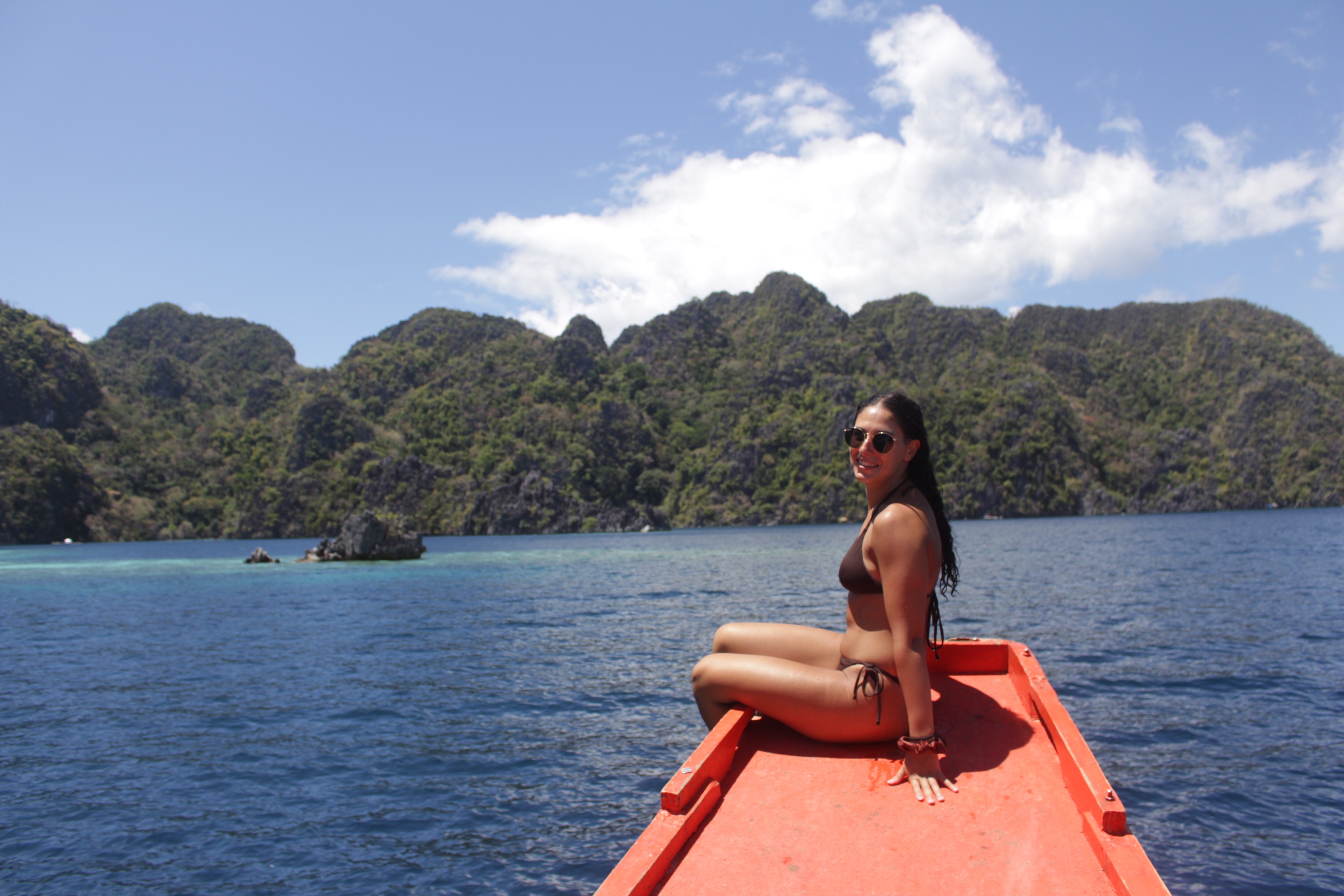
First Time Travelling Alone

walk the wicklow way

Why is Thailand a great place for a GAP year?
What our customers say, trust the adventure people.
Communication was excellent both by email and over the phone, everyone I had contacted followed and actioned my request or answered my question politely and efficiently.
Would definitely recommend this company.
The staff are super helpful and friendly and always answer e-mails as soon as they can.
Trip achieved all my expectations!
The tour that I booked with The Adventure People met all my expectations. The local agent in Vietnam kept in regular contact with me during my trip. All of the connections worked perfectly. The hotels were all of a good standard and comfortable as well as being in a good location. Would definitely use them again
Sign up for our deals
Stay up to date with our new latest deals & special offers.
The Adventure People has been rated excellent by its customers
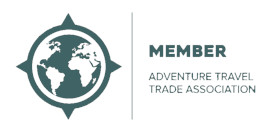

100 years after disappearing on Everest, climber's letters home tell poignant, personal story
D igitalized letters from Mount Everest mountaineer George Mallory revealed a conversation with his wife Ruth as he tried to become the first to climb one of the tallest mountains in the world in 1924.
Mallory, an English mountaineer, was on his third attempt to climb Mount Everest in 1924 when his odds of reaching the peak became slim.
Archived online by Magdalene College, the 842 handwritten letters take the readers on a journey with Mallory and shows the challenges the climber faced as he was battered by high winds and cold weather during his ascent.
Start the day smarter. Get all the news you need in your inbox each morning.
In a final letter to his wife dated May 27,1924 , Mallory gets candid about his time on the mountain:
"Dear girl, this has been a bad time altogether," Mallory wrote. "I look back at the tremendous effort and exhaustion and dismal looking out of a tent, door onto a world of snow and vanishing hopes — and get, and get, and get there have been a good many things to set on the other side."
Mallory's Everest attempts began in 1921
In September 1921, Mallory took his first trip to Mount Everest. With his friend from school, Guy Bullock, Mallory set out to climb the mountain, but high winds stopped their journey at a valley called North Col, Britannica said. In the 1924 letter, Mallory expressed excitement after passing through the same area that gave him trouble in the past.
"The first visit to the North Col was a triumph for the old gang," Mallory wrote. "I enjoyed the conquest of the ice wall and crack the crux of the route, and making the steps too in the steep final 200 ft. Odell did very useful work leading the way from the camp to the Col."
After writing five pages on his climb, Mallory suddenly stopped writing.
"The candle is burning out and I must stop," Mallory wrote to his wife.
Mallory ended the letter detailing his third attempt at Everest with an effort to ease his wife's worries and to bolster her hopes that he would make it to the summit.
"Darling I wish you the best I can — that your anxiety will be at an end before you get this — with the best news which will also be the quickest," Mallory wrote. "It is 50 to 1 against us."
Unknown sailor's notebook: Found hidden in furniture tells story of USS Amesbury's WWII journey
Who is George Mallory?
Born on June 18, 1886, George Mallory exhibited an interest in mountain climbing from a young age. While completing his studies at Winchester College, Mallory was recruited by one of his teachers to climb the Alps, the highest and most extensive mountain range in Europe. Other climbers said that Mallory's ability to tackle difficult routes and use his "catlike" climbing skills were unmatched, Britannica said.
Putting his mountain adventures on the back burner, Mallory was deployed to France to serve in World War I. After the war, Mallory turned to teaching, but climbing never left his mind. Mallory joined the Alpine Club and became one of the lead climbers as the group prepared for their first trip to Mount Everest in 1921, the encyclopedia said.
The date when Mallory began his third and final attempt to scale Everest is unclear, but he signed a "Mount Everest Expedition Agreement" on Feb. 13, 1924.
The final letter to his wife was dated a little more than three months later, on May 27, 1924.
It would be another 75 years before Mallory's body was discovered on Mount Everest , on May 4, 1999, the BBC News reported.
Mallory's body was identified by his name tag that was still on him. Mallory's climbing partner and friend, Andrew Irvine, has not been found, the report said.
Magdalene College shares George Mallory's letters in a public archive
Magdalene College archivist said the letters paint a picture of the Mallory's journey on Mount Everest.
"It has been a real pleasure to work with these letters," Magdalene College archivist Katy Green said in a statement about the letters. "Whether it’s George’s wife Ruth writing about how she was posting him plum cakes and a grapefruit to the trenches (he said the grapefruit wasn’t ripe enough) or whether it’s his poignant last letter where he says the chances of scaling Everest are '50 to1 against us' they offer a fascinating insight into the life of this famous Magdalene alumnus."
Ahjané Forbes is a reporter on the National Trending Team at USA TODAY. Ahjané covers breaking news, car recalls, crime, health, lottery and public policy stories. Email her at [email protected] . Follow her on Instagram , Threads and X (Twitter) @forbesfineest.
This article originally appeared on USA TODAY: 100 years after disappearing on Everest, climber's letters home tell poignant, personal story
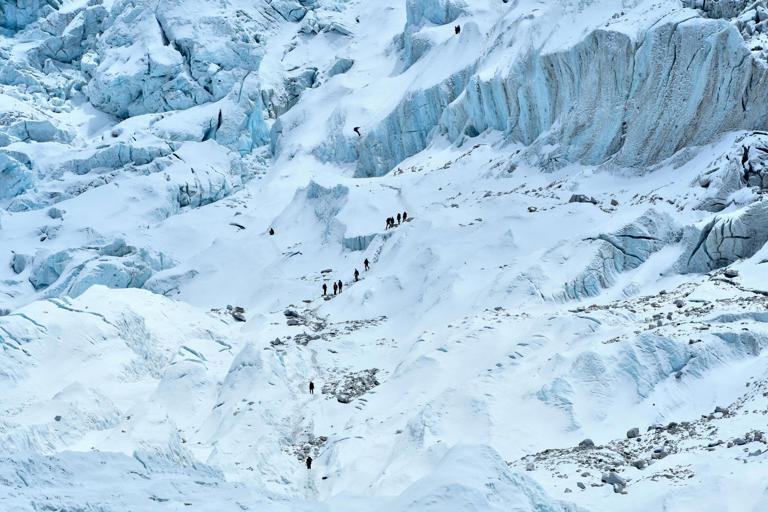
2-FOR-1 GA TICKETS WITH OUTSIDE+
Don’t miss Thundercat, Fleet Foxes, and more at the Outside Festival.
GET TICKETS
BEST WEEK EVER
Try out unlimited access with 7 days of Outside+ for free.
Start Your Free Trial

Climbing Season on Mount Everest Is Starting Later Than Normal
Dangers in the Khumbu Icefall forced rope fixers to chart a different route. Now, some expedition operators are scrambling to stay on schedule.
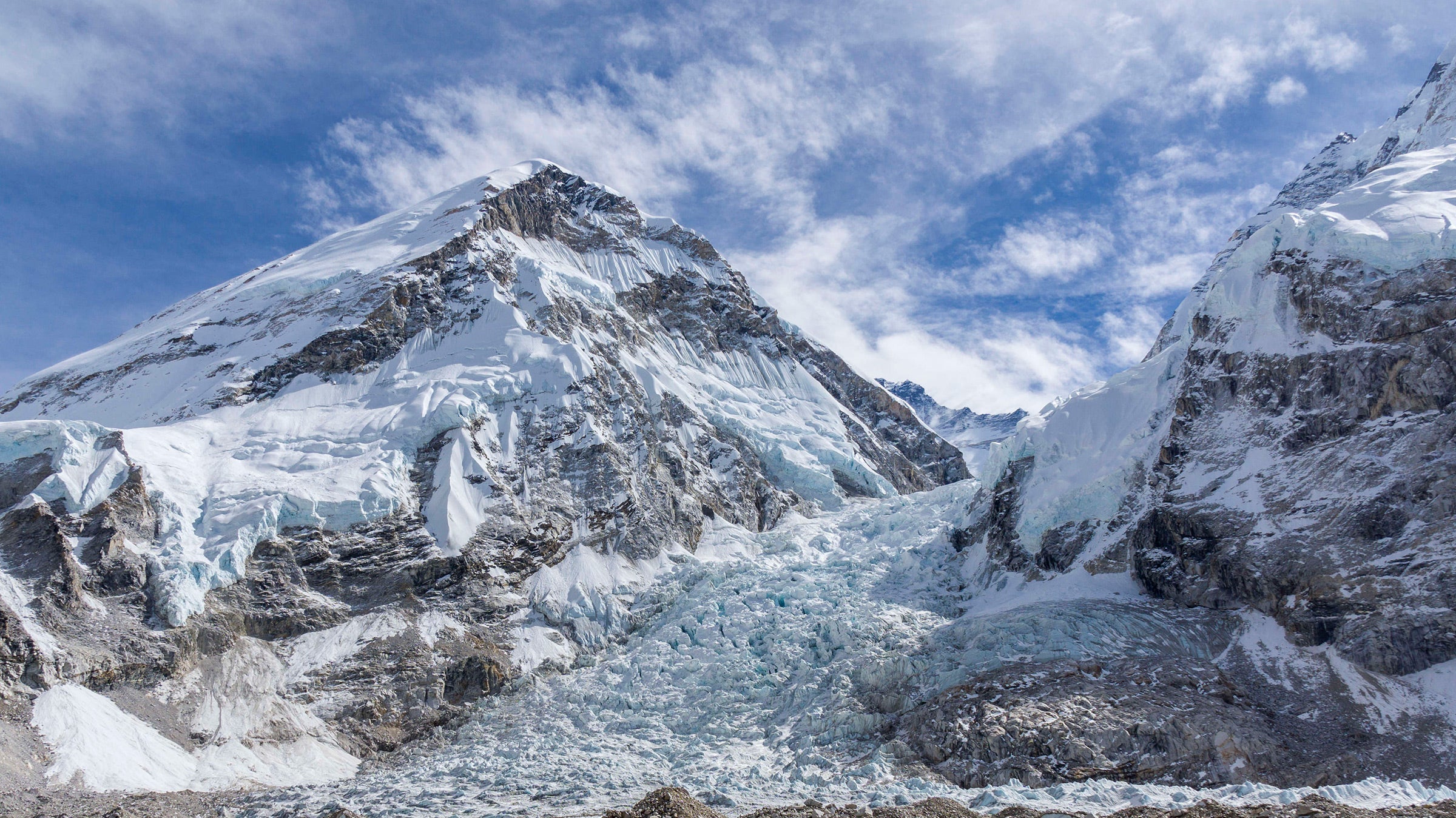
Heading out the door? Read this article on the Outside app available now on iOS devices for members! >","name":"in-content-cta","type":"link"}}'>Download the app .
The 2024 spring climbing season on Mount Everest is delayed due to crumbling ice in the Khumbu Glacier.
On April 17, in advance of climbing teams, Nepali workers completed the pathway through the infamous Khumbu Icefall , a labyrinthine section of the glacier that is riddled with crevasses, precarious ice towers, and other deadly obstacles. The section is the site of frequent tragedy, and in 2023 three workers died when a house-sized block of ice fell on them.
Every year, a team of specialized workers called the Icefall Doctors charts the official route through the shifting glacier by fixing ropes up frozen cliffs and laying ladders across deep pits. It’s painstaking and heroic work, and nobody can advance from Base Camp to Camp I until the path is established.
This spring, a cavalcade of dangers slowed the Icefall Doctors, leading to a major delay in opening the icefall corridor.
“We looked at two or three different routes, but the ice there was too fragile and risky—we were struggling to place ladders and ropes along the section,” Pemba Tshering, an Icefall Doctor, told Outside on Friday. “In many places we found popcorn-like sections of ice. It implies that the surface is irregular and crumbly, making the walk over it potentially dangerous, so we had to spend more time looking for a reliable route.”
Pemba Tshering said the eight Icefall Doctors arrived in Everest Base Camp on March 8 and immediately went to work building the pathway. Poor winter snowfall and warm temperatures had created unstable ice towers and bridges, which the team attempted to circumnavigate. No two years’ routes through the Khumbu Icefall are exactly alike—the shifting glacier frequently forces the Icefall Doctors to deviate. This year initially attempted to follow the approximate route used in 2023, but retreated on two separate occasions and eventually abandoned that way altogether.
Finally, after days of trial and error, they completed the linkup to Camp I this week. Pemba Tshering said the 2024 route follows one that guides used during the 2017 climbing season . But this way adds approximately two hours to the climbing time when compared to the one used in recent years.
“Between 500 and 600 people are supposed to walk through the route, so we have to ensure that it is very safe,” he said.
In the two days since the Icefall Doctors completed the path, teams of porters and guides have ascended from Base Camp to higher camps to build tents and leave supplies for upcoming summit pushes, which traditionally happen in mid-May. Over the next few weeks, climbers will venture above Base Camp for acclimatization.
The delays pushed the official start of Everest climbing season back by approximately 12 days, says Tshering Sherpa of the Sagarmatha Pollution Control Committee, a Nepali NGO that oversees waste disposal at Base Camp. “Usually we are ready by the first week of April, but this year there wasn’t any snow over the winter,” he said.
How the delay will impact climbing teams is yet to be seen. Tshering Tenjing Sherpa, the Base Camp manager for the Sagarmatha Pollution Control Committee, said he did not expect the late start to change the timing for when teams leave for the top. American guide Garrett Madison with Madison Mountaineering told Outside that his expedition was “business as usual,” and that his guides had already ascended to Camp II to reserve a camping spot.
But the delay has placed some expedition operators in a predicament. Tashi Sherpa, chairman of the Nepali guiding company 14 Peaks Expedition, said his porters may have to work longer hours than expected to haul gear up to higher camps. 14 Peaks is one of the largest expedition operators on Mount Everest, with approximately 100 clients for 2024.
“This means it is a rush for us. There is no time to handle everything now,” Tashi Sherpa said. “I think the Sherpa will not get so many rest days this year because they have to work very hard now.”
Tashi Sherpa told Outside that he intends to lobby Nepali officials to allow 14 Peaks Expedition to ferry gear to Camp I and Camp II via helicopter. Earlier this year officials with the Khumbu-Pasang Lhamu village, the local municipality that has authority over Everest Base Camp, prohibited such gear transport to higher camps. Gear and food must instead be carried by human power.
But Tashi Sherpa worries that ferrying everything by human power places workers in danger.
“It is so dangerous to carry everything through the icefall by Sherpa, so I think the government should understand and let us use helicopters,” Tashi Sherpa said. “People’s lives are very important. How can you send one Sherpa 20 times through the Khumbu Icefall when it is this risky?”
As of Friday, April 19, Nepali officials had not announced a rule change on helicopter transport.
Other Nepali operators echoed Tashi Sherpa, including his co-chairman Mingma Sherpa, who told Everest Chronicle that he, too, planned to lobby officials to allow helicopter transport to Camp I and Camp II. The publication also quoted an unnamed source that said this year’s compressed schedule would place Sherpa and paying climbing clients in danger.
“There would be around 500 to 600 Sherpas who would have to make at least seven rounds between the base camp and Camp I, Camp 2, and Camp 3. And there would be hundreds of climbers who would make at least two to three rounds during the acclimatization. That means there would be 7,000 human feet crossing such a sensitive stretch which is susceptible to serac collapse and avalanche. Allowing helicopters to carry large load would reduce the stress on the fragile ice,” the unnamed operator said.
Ben Ayers and Tulsi Rauniyar contributed to this report.
- Mount Everest
Popular on Outside Online

Enjoy coverage of racing, history, food, culture, travel, and tech with access to unlimited digital content from Outside Network's iconic brands.
Healthy Living
- Clean Eating
- Vegetarian Times
- Yoga Journal
- Fly Fishing Film Tour
- National Park Trips
- Warren Miller
- Fastest Known Time
- Trail Runner
- Women's Running
- Bicycle Retailer & Industry News
- FinisherPix
- Outside Events Cycling Series
- Outside Shop
© 2024 Outside Interactive, Inc
The Nepali Army Is Removing Trash and Bodies From Mount Everest
They expect to haul off ten metric tons of garbage and up to five bodies from the world’s tallest peak
/https://tf-cmsv2-smithsonianmag-media.s3.amazonaws.com/accounts/headshot/SarahKuta.png)
Daily Correspondent
:focal(3024x2016:3025x2017)/https://tf-cmsv2-smithsonianmag-media.s3.amazonaws.com/filer_public/99/16/99164470-8527-4455-803a-d36348c268be/gettyimages-1224178459.jpg)
Every spring, hundreds of mountaineers from around the world travel to the Himalayas in hopes of summiting Mount Everest , the world’s tallest mountain. As they make the slow, arduous and sometimes fatal journey to the summit, they leave behind garbage, gear and human waste.
Authorities have recently implemented new rules to help curb Everest’s trash problem. But in the meantime, the 29,032-foot-tall peak remains littered with debris.
This week, Nepali troops are launching their annual cleanup on the mountain. On Sunday, 12 members of the Nepali military were slated to arrive at Everest Base Camp for this year’s Mountain Cleanup Campaign, an initiative launched in partnership with Unilever in 2019, reports CNN ’s Lilit Marcus.
They’ll be supported by 18 sherpas as they remove an estimated ten metric tons of garbage and debris from Mount Everest, as well as nearby peaks Mount Lhotse and Mount Nuptse, according to the Himalayan Times ’ Rastriya Samachar Samiti.
They will also attempt to bring down the bodies of five climbers who died while ascending or descending Everest. Last year was one of the deadliest seasons on record: Twelve mountaineers died, while another five who went missing are presumed dead.
More than 300 climbers have died attempting to summit Everest since exploration began there in the early 20th century. Some get caught in avalanches or fall into crevasses, while others suffer from fatal medical conditions like frostbite or high-altitude cerebral edema , a condition that causes brain swelling .
Experts say human-caused climate change was at least partially responsible for last year’s high death toll.
“The main cause is the changing in the weather,” said Yuba Raj Khatiwada, director of Nepal’s tourism department, to the Guardian ’s Hannah Ellis-Petersen in May 2023. “This season the weather conditions were not favorable; it was very variable. Climate change is having a big impact in the mountains.”
Last year, Nepal’s government issued over 450 permits to mountaineers who wanted to summit Everest. Each permit costs thousands of dollars—on top of the large sums mountaineers often pay to guide companies.
Some critics have argued that the government is issuing too many permits. They’ve also called out low-cost guiding companies for taking on inexperienced clients and focusing too little on climber safety.
“People with little or no experience who book under-resourced expeditions are exposing themselves to huge risks,” Caroline Pemberton, co-owner of Climbing the Seven Summits, told Outside magazine ’s Alan Arnette last year.
This year’s Everest season will begin soon. For a brief period in the spring, the fierce winds that blow at the top of the mountain sometimes die down enough to allow climbers to reach the summit safely.
“Mount Everest protrudes into the stratosphere, and most of the year the summit is buffeted by winds of over 100 miles per hour that will kill a climber in minutes or even hurtle them into the void,” John All, a geographer at Western Kentucky University who summited Everest in 2010, told Popular Mechanics ’ Rob Goodier in 2012. “It is only during the onset or [cessation] of the Asian Monsoon that these winds die down and allow climbers short seven- to ten-day windows to climb the mountain.”
In recent years, authorities have announced new regulations intended to improve safety and reduce trash on Everest. All mountaineers are required to rent and wear an electronic tracking device , collect and carry their own waste back to base camp and pay an expensive trash deposit . They only get the deposit back if they return with at least 8 kilograms (around 18 pounds) of garbage.
Get the latest stories in your inbox every weekday.
/https://tf-cmsv2-smithsonianmag-media.s3.amazonaws.com/accounts/headshot/SarahKuta.png)
Sarah Kuta | READ MORE
Sarah Kuta is a writer and editor based in Longmont, Colorado. She covers history, science, travel, food and beverage, sustainability, economics and other topics.
- Covid Connect
- Entertainment
- Science&Tech
- Environment
PM extends best wishes on Bijaya Dashami festival
Fire survivors of mahaottari awaiting relief, 16th plan stresses on integrated infrastructure development, it use: pm dahal, sc orders accused in fake bhutanese refugee case to remain in custody.
- Sudur Pashchim
Himalayan Climate Boot Camp 2024 taking science journalists to Everest Base Camp
KATHMANDU, APRIL 23
The Himalayan Climate Boot Camp 2024 is set to take science journalists on an extraordinary journey to Everest Base Camp. This initiative, organized by the Nepal Forum of Science Journalists (NFSJ) and supported by Spark Grant Initiative (SGI), aims to enhance nuanced science reporting from challenging and often overlooked terrains of the Base Camp.
Related Articles
Icefall doctors finally open everest route, reach above camp i, new signboard at everest base camp sparks strong reactions.
The upcoming boot camp, scheduled from 2-13 May, 2024, will commence with treks starting from Lukla and culminating at Everest Base Camp, aimed at exploring various climate related issues in this iconic location. The program will feature interactive activities with local communities in Lukla, Namche, Khumjung, and Everest Base Camp. The special session of the boot camp will be held at the Pyramid International Lab located in Lobuche.
Eight Science and environment journalists from Nepal, India, Bhutan, and Bangladesh have been selected for this expedition following a competitive application process. Among them are four journalists from Nepal, two from India, and one each from Bhutan and Bangladesh. The chosen journalists will include Tanka Dhakal, Mahesh KC, Kamala Pakhrin, Ridhi Agrawal (Nepal); Nidhi Jamwal, Athar Parvaiz (India); Md. Jahidul Islam (Bangladesh); and Chencho Dema (Bhutan). The team comprises science journalists, climate scientist, researcher, as well as guides and porters.
This unique boot camp, mentored by esteemed professionals such as Subhra Priyadarshini (Chief Editor, Nature India), Ramesh Bhushal (Nepal Editor, The Third Pole), and Dr. Sudeep Thakuri (Dean, Faculty of Science and Engineering, Mid-western University, Surkhet, Nepal).
Geographical remoteness and limited resources have historically hindered comprehensive reporting on climate change impacts in the Himalaya region, particularly in the Everest Base Camp area. "The boot camp seeks to bridge this gap by enabling journalists to delve into these untold stories from challenging heights," Chhatra Karki, Team Lead for the Boot Camp, Says.
"The boot camp presents a valuable opportunity for journalists to enrich their reportage with nuanced evidence gathered both from the field and ongoing scientific inquiry in the Everest Base Camp," explained Priyadarshini, Chief Editor of Nature India.
The camp aims to facilitate collaborative reporting among journalists from Nepal, India, Bhutan, and Bangladesh, focusing on common climate change challenges in the region. "By fostering open interactions among participant journalists, scientists, NGOs, and policymakers, the boot camp aims to create a lasting impact through informed and evidence-based reporting," Rajan Pokhrel, President of NFSJ, says.
As a result of the boot camp, the participating journalists will produce two multimedia stories highlighting the impact of climate change in the Himalayan region based on their reporting from the Everest region.
The inaugural Himalayan Climate Boot Camp held in the Khumbu region from April 21 to April 27, 2022, was a resounding success. As a result of the boot camp, 23 stories directly from the field were published in national and international media outlets.
Qatari emir in Nepal, expected to tackle migrant conditions and Nepali student held hostage by Hamas
Next Article
- Privacy Policy
- Advertise With Us
© 2021 The Himalayan Times
APRIL SALE: Book now and get up to 60% off!
Lake Tahoe Tours & Trips
Find the right tour package for you through Lake Tahoe. We've got 36 trips going to Lake Tahoe, starting from just 3 days in length, and the longest tour is 13 days. The most popular month to go is August, which has the most tour departures.
36 Lake Tahoe tour packages with 202 reviews
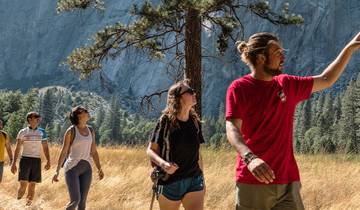
Hiking in Yosemite National Park
Yosemite tour was amazing. Choice of lodging needed to be different. Too far out of the way which caused a lot of extra driving. A hotel which was previously used would have been better. And virtually no response to questions thru the Tour Radar app. Had to take care of extra nights stays & transportation myself when the app stated that they would assist with it.

- Hiking & Trekking
USA Road Trip — Yosemite Hiking & Cali Surfing
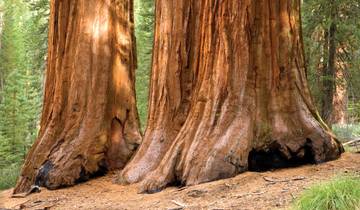
Hiking in Yosemite and the Sierra Nevada
The tour plan with its walks, chosen sights ie places to hike & visit, and lodging is excellent. It was a tight schedule without pressure offering A LOT of impressions and beauty. A great o really plan. I would have enjoyed a bit more history & information about the different sights. While many travelers enjoy a more laid back experience of look-see-go, I am the type who enjoys more when I am given something to focus on when I land somewhere new. I prefer a guide who is ready to offer good and intriguing information which was missing for me in my group.
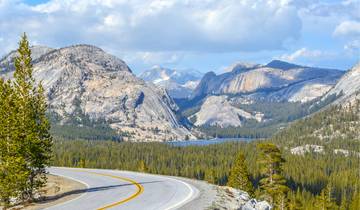
- In-depth Cultural
Yosemite & Tahoe Sierras - 4 Days
Best way to see all the amazing scenery without the hassle of all that driving
- 10% deposit on some dates Some departure dates offer you the chance to book this tour with a lower deposit.
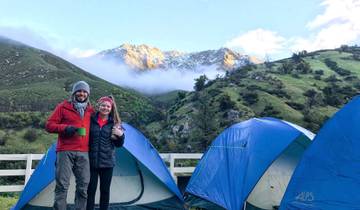
- Sightseeing
Yosemite Escape Camping - 3 Days
Yosemite is a delight 3 days gives you a good overview
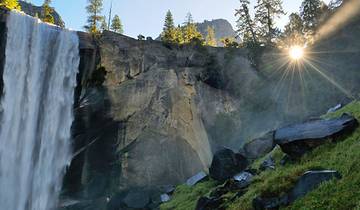
Yosemite High Country Basecamp Tour

- Coach / Bus
Golden State of Mind: Northern California By Design

Best of Yosemite Tour

California Dreamin': Monterey, Yosemite & Napa (Monterey, CA to San Francisco, CA) (2024)

5-Day Yosemite Lake Tahoe Lodging Tour

5-Day Yosemite Lake Tahoe Camping Tour
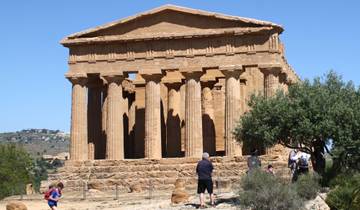
California Dreamin': Monterey, Yosemite & Napa (Monterey, CA to San Francisco, CA) (2023)
This tour provided a highly comprehensive itinerary that enabled me to see many of the sites that wanted to visit in northern and ceIntral California. Todd, our tour manager, provided detailed manuscripts of daily cultural insights as well as lists of dining options and activities that could be performed during free times in the tour. He was also consistently available to answer questions and provide assistance with timing activities during free periods such that rejoining group activities was seamless. The accommodations were of very high quality and located in established neighborhoods of the cities in which we stayed. As a solo female traveler, I felt very safe to explore the areas around the hotel and find new dining experiences. Jose, our coach driver, had a delightful sense of humor and provided safe, easy transitions during travel days. Overall, the tour was reasonably paced and provided an excellent value for the price. Thank you for a great, organized travel experience. I will definitely be booking with this tour company in the future!
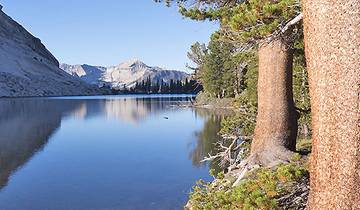
High Sierra Loop
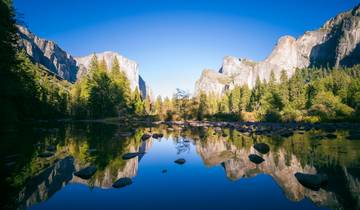
Wonders of Yosemite

Thousand Island Lakes
What people love about lake tahoe tours.
Yosemite tour was amazing. Choice of lodging needed to be different. Too far out of the way which caused a lot of extra driving. A hotel which was previously used would have been better. And virtually no response to questions thru the Tour Radar app. Had to take care of extra nights stays & transportation myself when the app stated that they would assist with it.
The trip was well coordinated. Our trip had to be re-routed due to the very snowy winter, but our tour guide, Phil, still managed to keep our days full, and our hikes about the same mileage that we would have walked otherwise. The hikes were moderate to steep, nothing that our entire group could not keep up with. I felt that everyone was accommodated to. And we went to our rooms at night exhausted from our days journey. Yosemite is a must-do, if you have never been there. The pictures do it no justice. Having the tour guide from intrepid was great, because he told us all about the history of the National Park- things that I would have walked right by if I were hiking alone. This trip was great! can’t wait until the next one.
Allen was a fantastic guide for an absolutely beautiful area. He struck the balance of being fun and welcoming with interesting facts about places we visited whilst allowing us independence and creating a relaxed environment in the van. I can’t thank him enough for one of the best trips I’ve been on!
Lake Tahoe Tours starting in:
- Yosemite National Park (15)
- San Francisco (10)
- Hiking & Trekking (30)
- Fully Guided (28)
- Explorer (23)
- Family (11)
- Active (10)
- Partially Guided (6)
- Small Group (18)
- 7 Day Tours (24)
- 10 Day Tours (7)
- Spring 2024 (10)
- Summer 2024 (29)
- Fall / Autumn 2024 (18)
- Winter 2024 / 2025 (1)
- Spring 2025 (8)
- Summer 2025 (8)
- Fall / Autumn 2025 (9)
- Winter 2025 / 2026 (1)
- April 2024 (1)
- May 2024 (10)
- June 2024 (14)
- July 2024 (18)
- August 2024 (22)
- September 2024 (15)
- October 2024 (6)
- November 2024 (1)
- December 2024 (1)
- February 2025 (1)
- March 2025 (3)
- April 2025 (2)
- May 2025 (6)
- June 2025 (7)
- July 2025 (8)
- August 2025 (8)
- September 2025 (9)
- October 2025 (6)
- December 2025 (1)
- March 2026 (1)
Other Regions in USA
- Western USA (743)
- Sun Belt (420)
- Southwest USA (417)
- Rocky Mountains (271)
- Four Corners (218)
- Eastern USA (214)
- East Coast USA (173)
- West Coast USA (170)
- California (151)
- Alaska (120)
- Pacific Coast USA (110)
- Northeast USA (110)
- Southern USA (99)
- Southeast USA (88)
- Grand Canyon (85)
- Northern California (77)
Travel Styles
- Singles and Solo (16)
- For Couples (25)
- Seniors (31)
- Skip to content
- Skip to main menu
- Skip to more DW sites
Everest climbing season with new rules and question marks
This year, several hundred mountaineers will once again attempt to climb the highest mountain on earth. Climate change is also causing more risk — and creating new problems — on Mount Everest.
There is a reason mountaineers on Everest call the passage through the Khumbu Icefall from the western slope the "ballroom of death." A mighty hanging glacier that threatens the route hangs like a sword of Damocles and makes for tricky climbing.
Ten years ago, on 18 April 2014, an ice avalanche broke loose there. Sixteen Nepalese mountaineers , who were carrying equipment for commercial expeditions to the high camps, died in the accident. Since then, the "Icefall Doctors" — a group of Sherpas who specialize in icefall — have been trying to place the ascent route as far away from the western slope as possible. This spring, however, climate change forced them back into the "ballroom of death."
There was simply no alternative. Two attempts to find a less risky route had failed. The snowless winter in Nepal had led to unstable ice towers and snow bridges in the icy labyrinth. In addition, crevasses had formed that were so wide that they could not be crossed with ladders.
Every year, the Icefall Doctors set up the route through the dangerous icefall, secure it with ropes and maintain it during the climbing season until the end of May. Only when the route up to Camp Two at 6,400 meters (21,000 feet) has been completed can the commercial teams ascend. Time was of the essence. Around ten days later than planned, the eight Sherpas finally announced that they were ready. However, the Icefall Doctors warned that there were at least five dangerous spots that should be passed as quickly as possible. The whole endeavor is reminiscent of Russian roulette .
'The mountain is gaining momentum'
Last winter, two passes over 5,800 meters high in the Everest region were completely snow-free. This is "worrying," says Nepalese glaciologist Tenzing Chogyal Sherpa.
"The data shows that the number of snow days, the amount of snow and the snow cover are decreasing — a negative trend. These 'naked' passes and mountains illustrate what is happening," said Sherpa.
The glaciers are melting faster and faster , becoming thinner and shorter. Larger glacial lakes are forming and their natural dams are threatening to burst. That happened this week on Manaslu, the eighth largest mountain in the world. The subsequent tidal wave, however, caused only material damage.
More and more pools of meltwater are also forming in the valley at the foot of Everest . Up to the summit at 8,849 meters, snow and ice are retreating. The result: increased risk of falling rocks and, because it is getting warmer, a higher chance of avalanches. "Many people lose their lives in avalanches. The mountain is becoming more and more dynamic," warns glaciologist Sherpa.
20% fewer permits
"The current difficulties at the Khumbu Icefall to get to the higher camps could have an impact on the entire season and could possibly be the harbinger of a major disaster on Everest," fears Norrdine Nouar.
The German mountaineer from the Allgäu region has just climbed — without bottled oxygen — the 8,091 meter Annapurna in western Nepal, his second eight-thousander. Now he wants to attempt the highest mountain on earth without a breathing mask.
"I really hope that we don't break last year's sad record of deaths on Everest again," the 36-year-old told the blog Abenteuer Berg (Mountain Adventure).
In spring 2023, 18 people — six Nepalese and 12 clients of commercial teams — lost their lives on Mount Everest, more than ever before in one season. However, the Nepalese government had also never issued so many permits for Everest: 478. This year, the number of permits is a good 20% lower compared to the same time in 2023.
This may or may not indicate a decline in interest in Everest . On the one hand, it could be due to the fact that many Everest candidates are now pre-acclimatising at home in hypoxia tents and therefore arriving later. On the other hand, the fact that the highest mountain on earth can be climbed from the Tibetan north side for the first time in four years may also play a role.
Due to the coronavirus pandemic , the Chinese authorities had closed Tibet's mountains to foreign expeditions . Teams that want to climb Everest from the north this spring are still waiting for their entry permits into Tibet. According to reports, the border will not be opened until May 7. The Everest season on the north side ends on 1 June. Chinese authorities have capped the number of permits at 300. Climbs without bottled oxygen are prohibited above an altitude of 7,000 meters.
Tracking chips and poo bags
There are also new regulations on the southern Nepalese side. All mountaineers must now have electronic tracking chips sewn into their down jackets. These are intended to facilitate rescue searches should someone go missing on the mountain. The system has proven its worth in avalanche searches in the Alps. However, experts doubt that it can also increase safety in the summit area of Mount Everest. According to Lukas Furtenbach, head of the Austrian expedition provider Furtenbach Adventures, the range of the system is significantly reduced in the event of ice avalanches.
"It would be better if the guides [mountain guides — editor's note] didn't leave their clients alone," says Furtenbach. "Then the problem would be solved."
This year, for the first time, it is also compulsory for climbers to take excrement bags up the mountain, use them and bring them back down again. The poo bags have been specially developed for outdoor use and can be sealed tightly. Their inside is coated with a mixture of gelling agents, enzymes and odour-neutralising substances. These ensure that feces is sealed in the bag and the odor is reduced.
The Nepalese environmental protection organization Sagarmatha Pollution Control Committee (SPCC), which is responsible for the management of the Everest base camp and also employs the Icefall Doctors, is tasked with ensuring that the rule is adhered to. The SPCC estimates that between Camp One at 6,100 meters and Camp Four on the South Col at just under 8,000 meters, there is a total of around three tons of human excrement — half of it at the South Col, the last camp before the summit of Mount Everest. As the snow cover is increasingly disappearing, it literally stinks to high heaven, threatening to turn the South Col into a "ballroom of feces."
This article was originally published in German

IMAGES
COMMENTS
At Intrepid, we offer treks to Everest Base Camp, not to the summit. Trekking to the summit of Everest can cost upwards of $60,000USD and is far more technical than the trek to Base Camp. The summit climb requires previous trekking experience and knowledge of how to climb ice, rock and use summit equipment.
Everest Base Camp Trek, a 15 days tour from Kathmandu to Phakding, Namche Bazar and 9 destinations. Best Selection - Best Price - Trusted Payments ... Some departure dates and prices may vary and Intrepid Travel will contact you with any discrepancies before your booking is confirmed. The following cards are accepted for "Intrepid Travel" tours ...
With the Hiking & Trekking tour Epic Everest Base Camp Trek, you have a 15 days tour package taking you through Kathmandu, Nepal and 10 other destinations in Nepal. Epic Everest Base Camp Trek includes accommodation in a hotel as well as an expert guide, meals, transport. Expand All. Introduction. Day 1 Kathmandu.
Two things you must do when in Gorak Shep is firstly, climb the near-by ray flag covered Kala Pattar which affords you the most popular vantage point for viewing Mount Everest, the Khumbu Ice Fall (that flows from the Western Cwm) and of course a view directly down onto Everest Base Camp. The morning air is cool and clear making for incredibly ...
Everest Base Camp & Gokyo Lakes Trek, a 19 days tour from Kathmandu to Phakding, Namche Bazar and 15 destinations. Best Selection - Best Price - Trusted Payments. ... The following cards are accepted for "Intrepid Travel" tours: Visa, Maestro, Mastercard, American Express or PayPal. TourRadar does NOT charge you an extra fee for using any of ...
Intrepid Travel This operator has the highest review ratings and fastest responses to enquiries . 5% Off . Duration 15 days Price per day $94 From ... The Everest Base Camp Luxury Lodge Trek was an extraordinary experience that exceeded my expectations. The lodges were truly luxurious, with spacious and comfortable rooms that provided a much ...
For a complete cent-by-cent cost breakdown of our trek to Everest Base Camp in 2020. Cost of trekking to EBC in different ways in a nutshell: Package tour EBC trek with international agency $1700. Package tour EBC trek with local agency $1600. Independent EBC trek with a guide and porter $1370.
Here is my Everest Base Camp trek blog with a blow-by-blow account of each trek day. Everest base camp Trek Blog Day One: Kathmandu to Phakding. My Everest Base Camp Trek Blog starts very early on Day One in Kathmandu. You quickly learn that the best weather of the day for Everest Base Camp trekking is first thing eg 5 or 6 am.
Just make sure your travel documents and essentials are still valid. For the route to Everest Base Camp from Lukla, there are two key documents that we will secure for you: ... Everest Base Camp to Pheriche (14,340 ft / 4,371 m) ... Today is your final day as an intrepid traveler exploring Nepal. You might have time to see some live music in ...
An average total distance ranges from 75 to 90 miles with 17,500 feet of vertical gain and loss. The North Base Camp Trek in Tibet. On the north side of Mount Everest is a second base camp, tucked between the sweeping plateaus and mountains of the Tibet Autonomous Region of China, also known as the roof of the world.
Included Activities:-Everest Base Camp - Porterage of One Bag (10kg/22lbs max)-Everest Base Camp - 12D/11N Trek. ... The hotels were lovely comfortable colonial style. I will travel with intrepid again Trustpilot. RICHARD ALAN RODDY England Central American Journey. 08-Feb-2024. Very enjoyable, good paced Tour. Tour Leader, Choko was ...
We were looking to book with Intrepid who have loads amazing reviews, but are quite expensive. I just spotted the same tour with G Adventures, which is over $500 cheaper, but doesn't really have a whole lot of reviews online. I know G Adventures are a pretty well established company, particularly with their South American tours.
Tumlingtar to Everest Base Camp (21-23 days trekking) Gokyo Over Cho La Pass (17-18 days trekking) Lukla to Tengboche (around 7 days trekking). The trek from Lukla to Everest Base Camp is 38.5 ...
I fly to Kathmandu on the 2nd of February and am doing a Mount Everest base camp trek with Intrepid. The trip I am doing is, ... I am just wondering, for those that have got Travel insurance for trekking to base camp in the past, is this about the normal going rate? World Nomads seems to be the most recommended site I am finding so far for ...
Himalayan Climate Boot Camp 2024 taking science journalists to Everest Base Camp . Eastern border checkpoints closed from today for election in India ... General Manager Nepal of Intrepid Travel said.
About The Adventure People. We are a travel agency who specialise in adventure holidays. Most of the adventure holidays we feature are small group guided trips starting at point A and ending at point B with lots of experiences in-between. We are part of the company World Adventures. We established in 2017.
In this photograph taken on May 1, 2021 mountaineers trek along the Khumbu glacier near Everest base camp in the Mount Everest region of Solukhumbu district, some 140 km northeast of Nepal's ...
A view of China's Base Camp for Mount Everest. (Photo: VCG / Getty Images) Indeed, China has once again opened its borders to Everest climbers in 2024 following a four-year closure due to Covid.
The 2024 spring climbing season on Mount Everest is delayed due to crumbling ice in the Khumbu Glacier.. On April 17, in advance of climbing teams, Nepali workers completed the pathway through the ...
All mountaineers are required to rent and wear an electronic tracking device, collect and carry their own waste back to base camp and pay an expensive trash deposit. They only get the deposit back ...
The upcoming boot camp, scheduled from 2-13 May, 2024, will commence with treks starting from Lukla and culminating at Everest Base Camp, aimed at exploring various climate related issues in this ...
Intrepid Travel This operator has the highest review ratings and fastest responses to enquiries . 25% Off ... February 2025 tours Julian Alps to the Adriatic Cycling Best of South India Tour 12 days Take the Sherpa Challenge on the Everest Base Camp Trek. What people love about Lake Tahoe Tours Mark Zepeda 24 Aug, 2021. 4. Yosemite tour was ...
Deaf and blind marathon runner on track for Everest. A deaf and blind university student who completed the London Marathon has said she is "ready for her next challenge" as she prepares to climb ...
According to reports, the border will not be opened until May 7. The Everest season on the north side ends on 1 June. Chinese authorities have capped the number of permits at 300. Climbs without ...